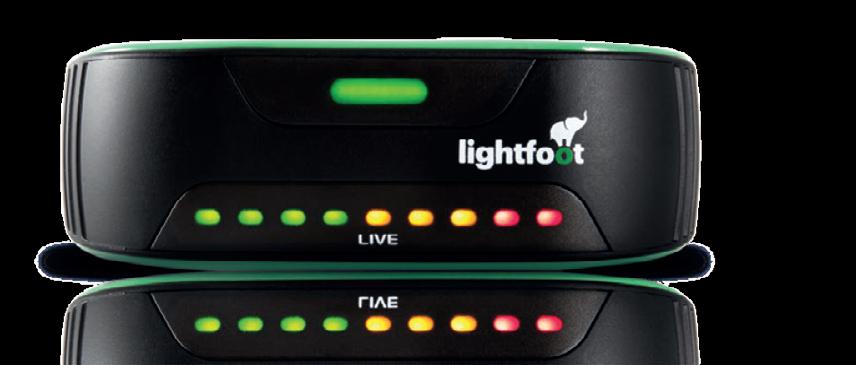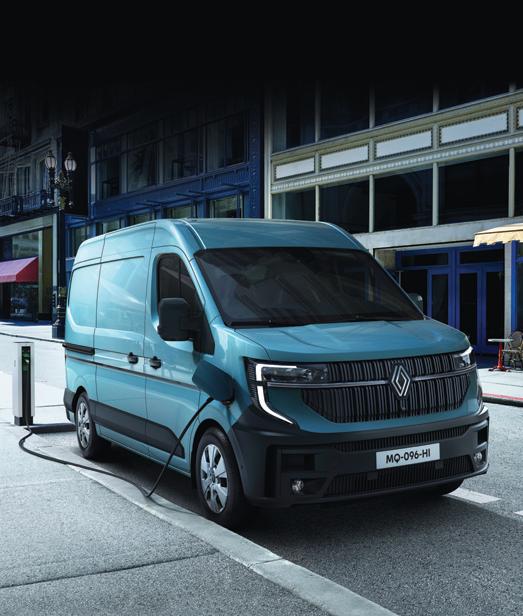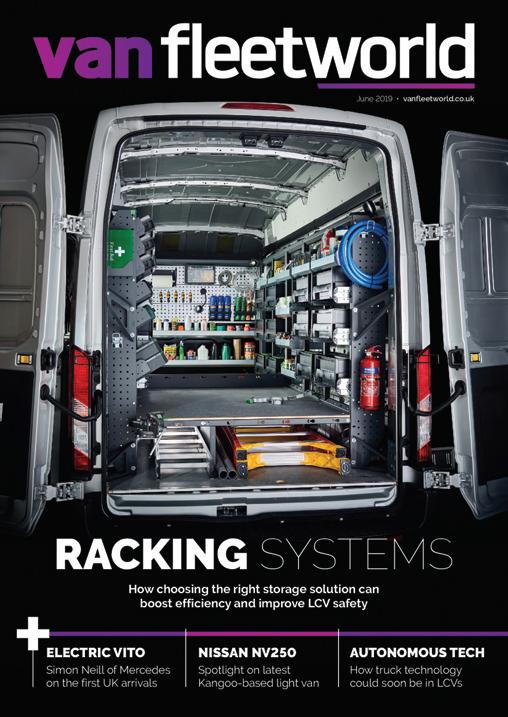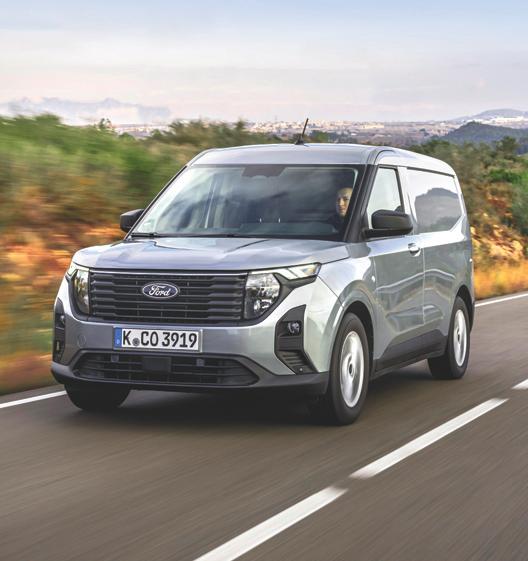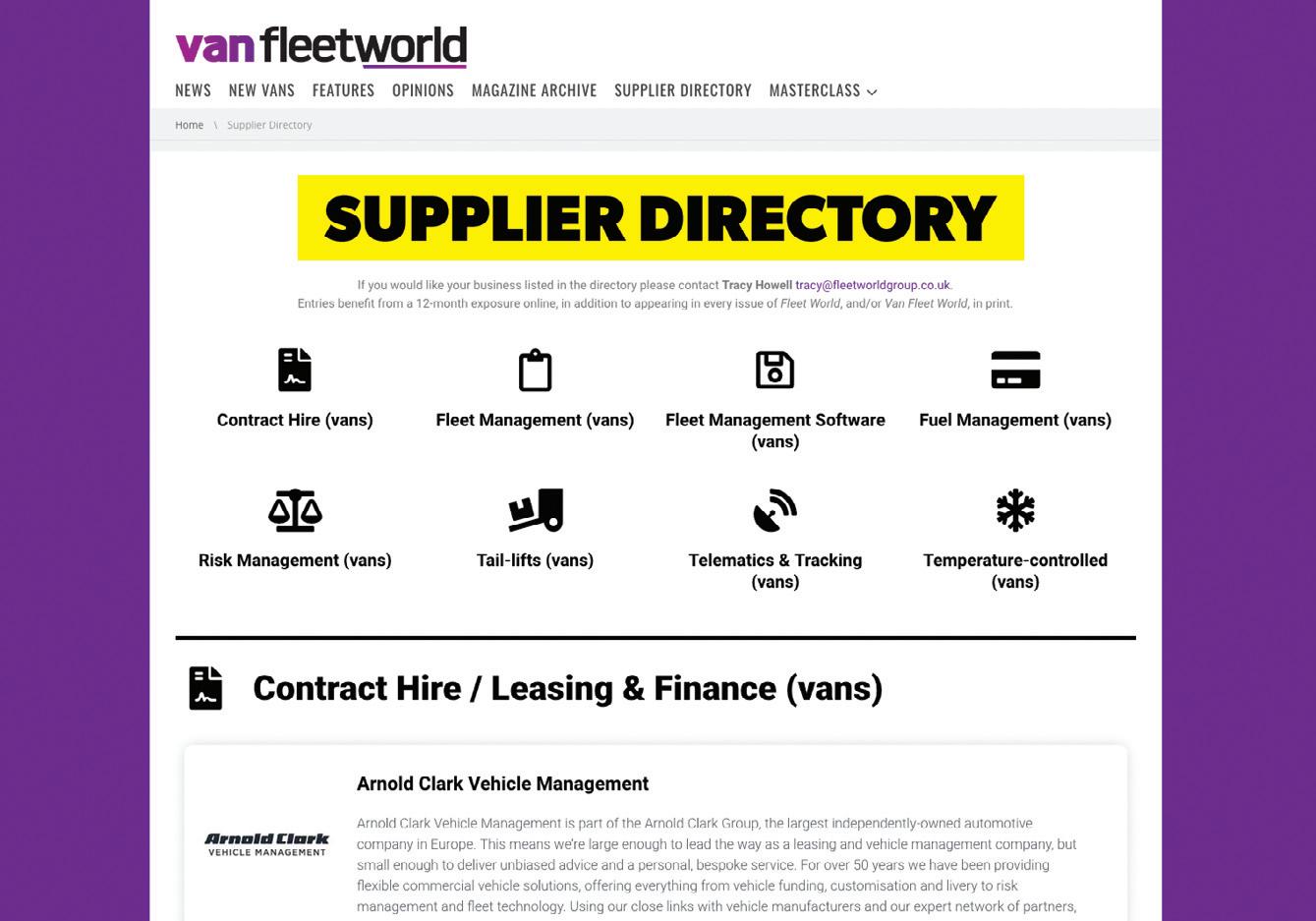








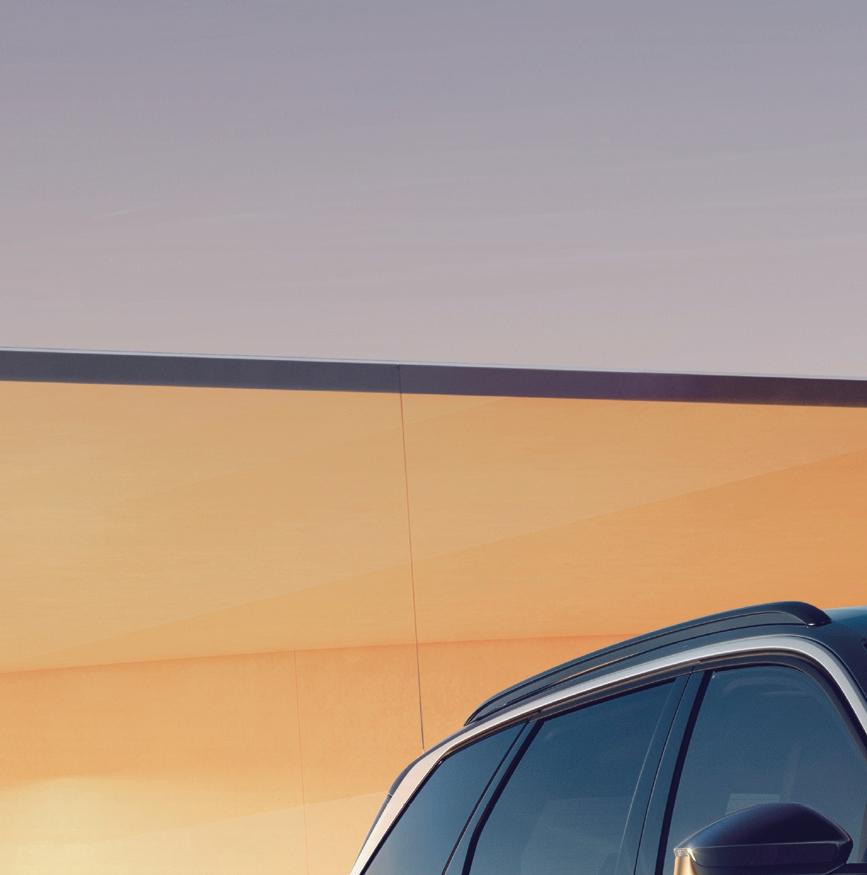
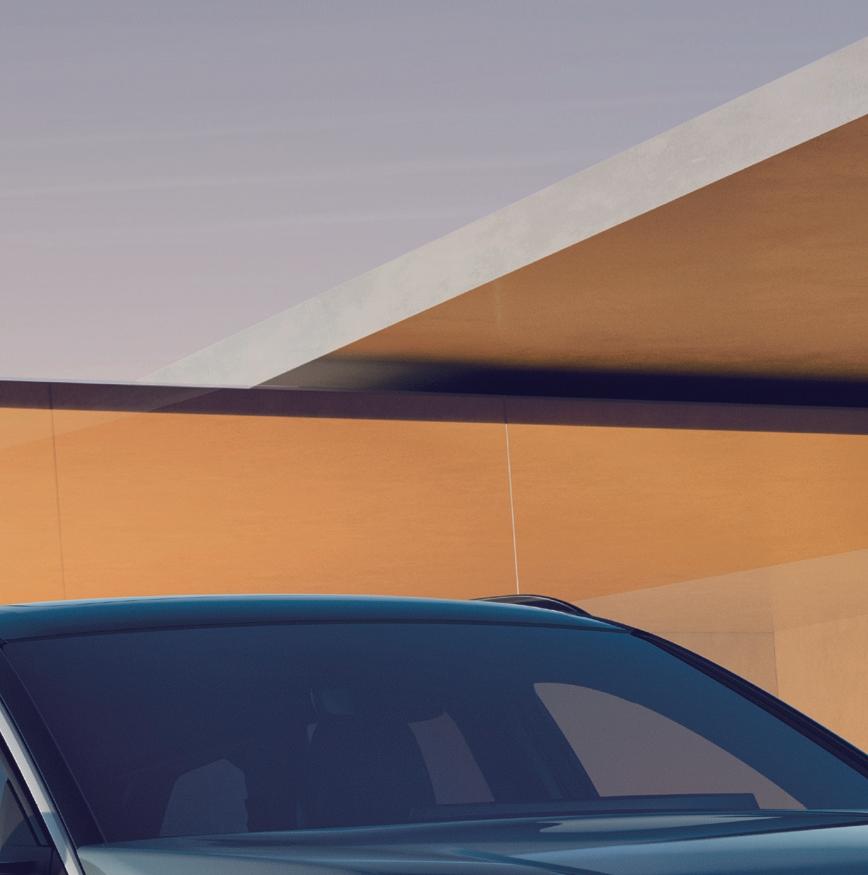


• 2% BiK Rate
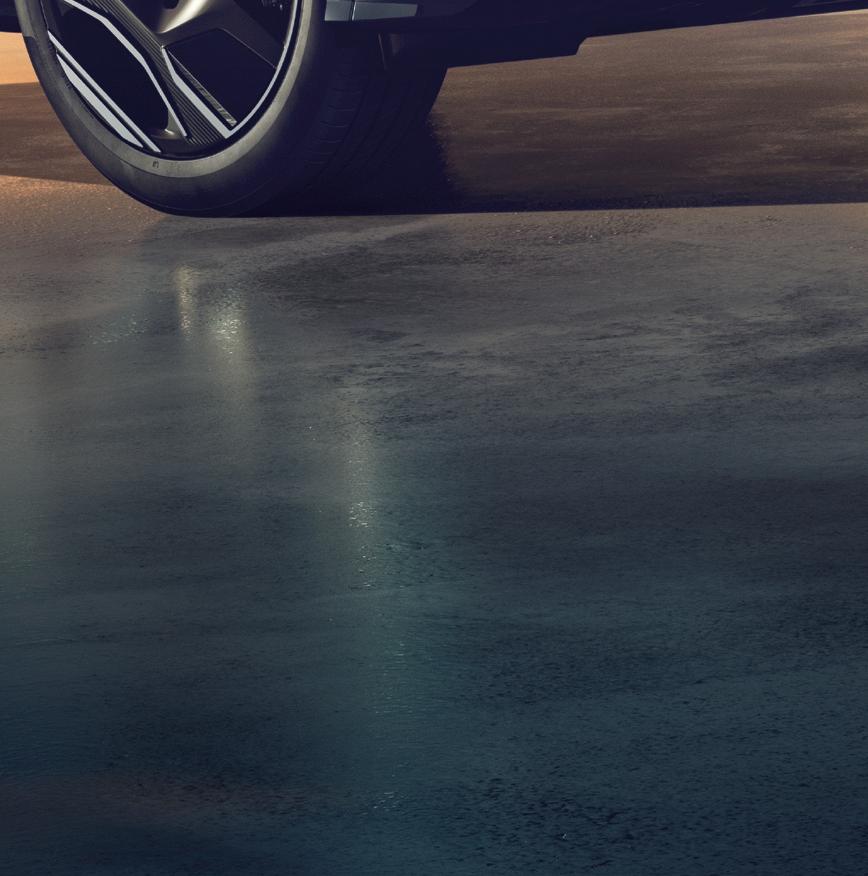
• 0g/km CO₂


• UP TO 414 MILES ALL-ELECTRIC RANGE


Official Fuel Consumption in MPG (l/100km) and CO₂ emissions (g/km) for the E-5008 range are: Combined N/A (N/A) and CO₂ 0g/km. Equivalent All Electric Range: 258 - 414 miles.
The fuel consumption or electric range achieved, and CO₂ produced (where applicable), in real world conditions will depend upon a number of factors including, but not limited to: the accessories fitted (pre and post registration); the starting charge of the battery; variations in weather; driving styles and vehicle load. The New E-5008 is a battery electric vehicle requiring mains electricity for charging. The WLTP (Worldwide Harmonised Light Vehicles Test Procedure) is used to measure fuel consumption, electric range and CO₂ figures. Figures shown are for comparison purposes and should only be compared to the fuel consumption, electric range and CO₂ values of other cars tested to the same technical standard.
ˆPEUGEOT Allure Care consists of 3 years standard manufacturer’s warranty plus up to 5 years of special coverage. Please see full T&Cs. Visit Peugeot.co.uk.
BiK correct at time of print
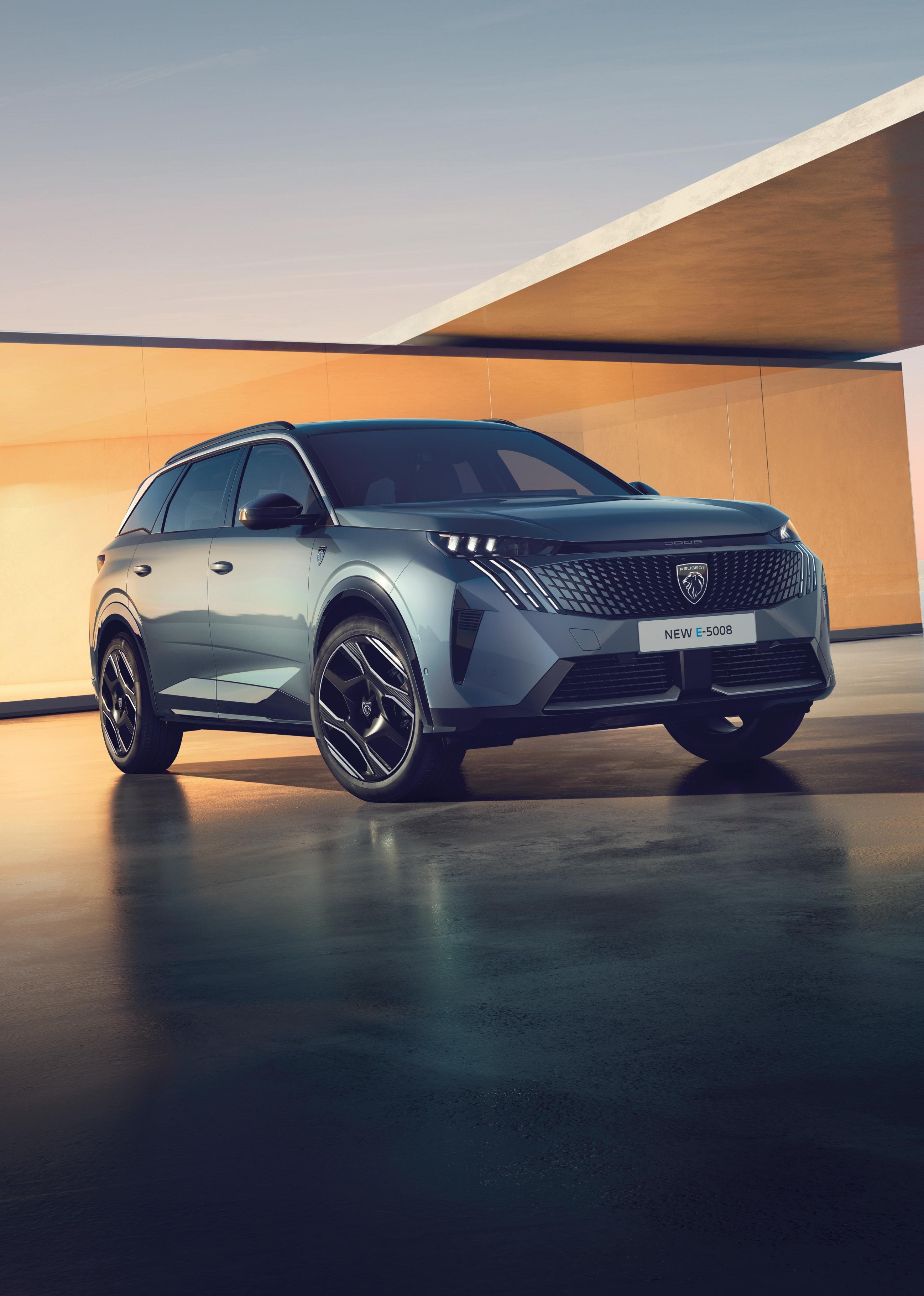



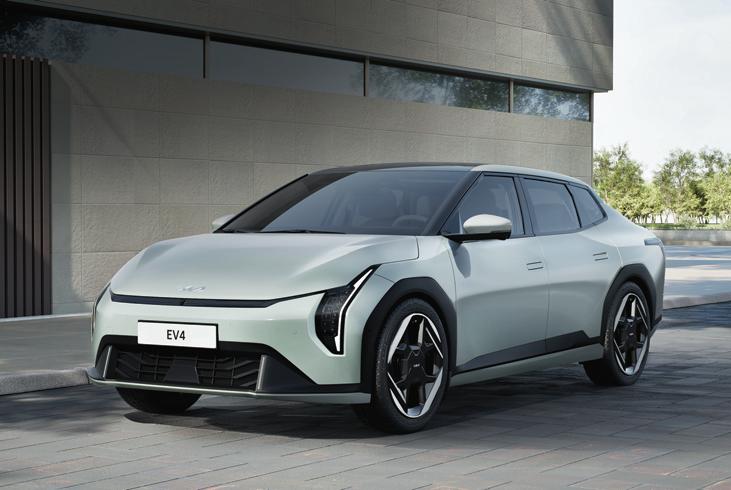

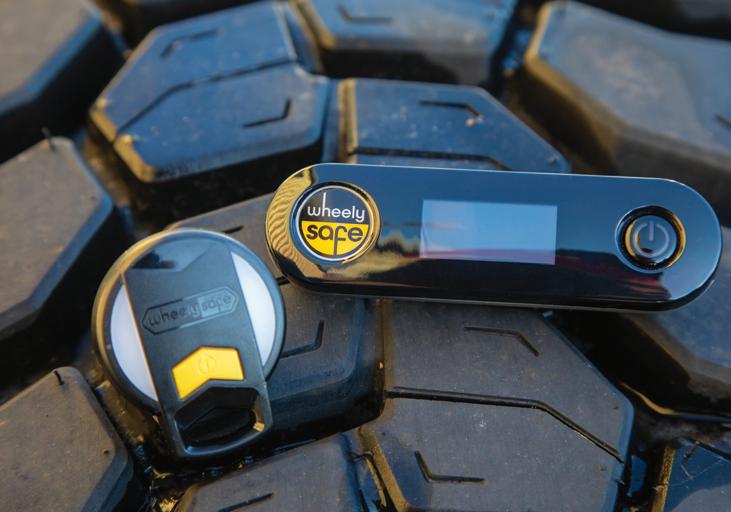


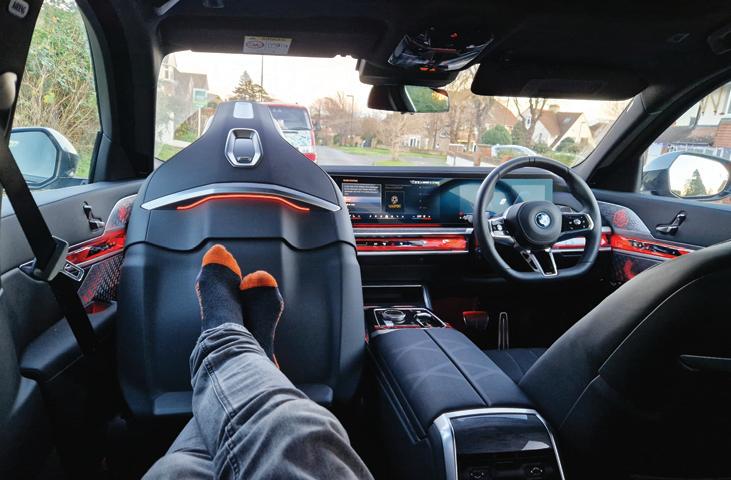
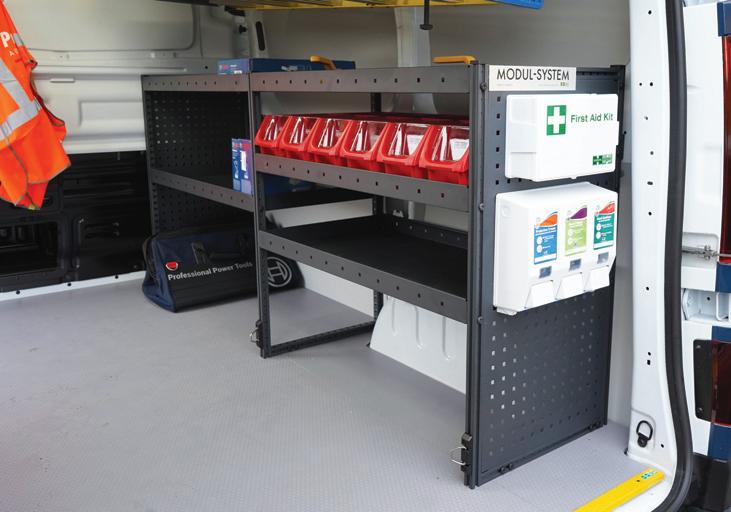
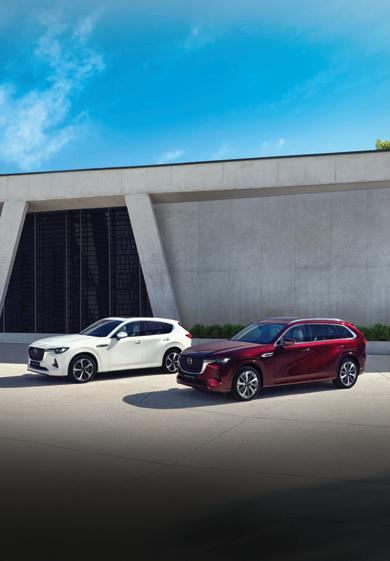



publisher Jerry Ramsdale
jerry@fleetworldgroup.co.uk
editor Fleet World
John Challen john@fleetworldgroup.co.uk
editor-at-large
Alex Grant alex@fleetworldgroup.co.uk
business editor Natalie Middleton natalie@fleetworldgroup.co.uk
editor Van Fleet World
John Kendall john.kendall@fleetworldgroup.co.uk
account directors Claire Warman claire@fleetworldgroup.co.uk
Tracy Howell tracy@fleetworldgroup.co.uk
Lloyd Ramsdale lloyd@fleetworldgroup.co.uk
head of production
Luke Wikner luke@fleetworldgroup.co.uk
designers Victoria Arellano | Dan Bennett head of marketing
Shona Hayes shona@fleetworldgroup.co.uk
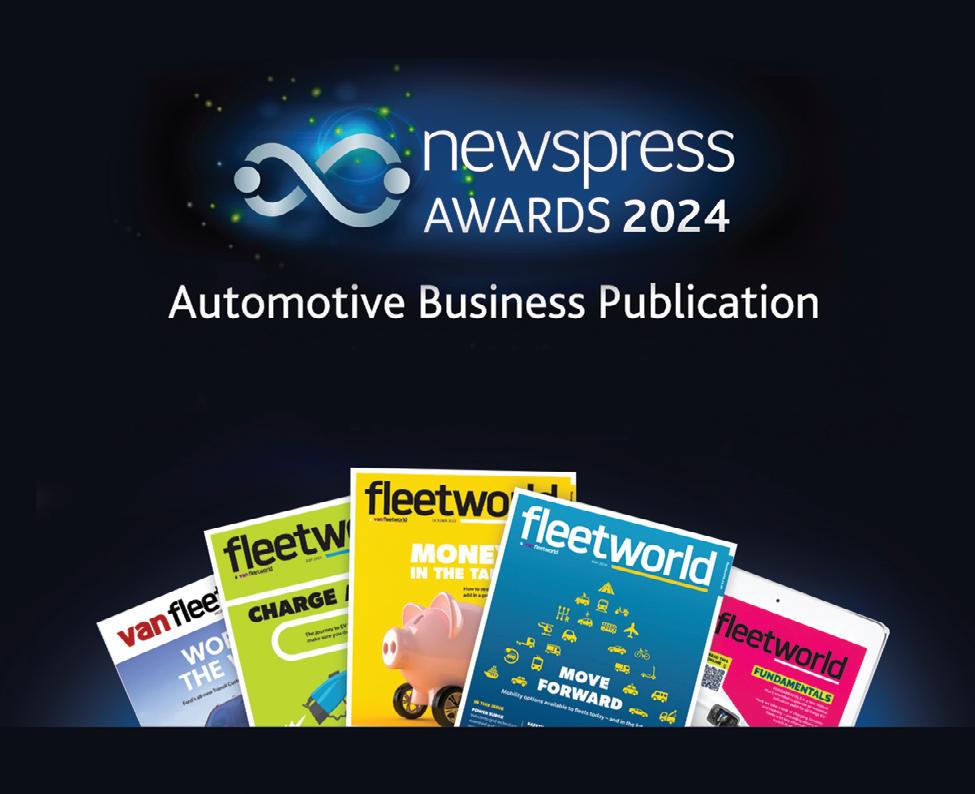



A few weeks ago, coming back from walking the dog, I noticed that the eldest Challen Jnr’s car had a thick layer of frost on it. Given that ‘Lizzo’ is a 2010 Volkswagen Golf – and his pride and joy – there isn’t the luxury of preconditioning or being able to defrost at the touch of a button on an app. Knowing he would shortly be leaving for work (and possibly cutting it fine), I scraped off the ice, making sure his departure wouldn’t be delayed any more than it should be. He was, of course, grateful – but that isn’t why I did it. Even as they gain their independence, I recognise that the kids always need a bit of help once in a while.
And that’s probably true for everyone in life – and work. There isn’t anyone who wouldn’t benefit from a bit of help once in a while. With that in mind, we’re aiming to add more thought-leadership content and insightful articles and advice to Fleet World. We live in an age where ‘disinformation’ is rife (that’s an avenue I’m not going down here and now), but we’re striving to provide more ‘mission critical’ details that will, ultimately, help you do your jobs – and run your fleets – better.
Working on the basis of strength in numbers – and the presence of untapped resources out there – we will aim to unearth some practical and easy-to-implement advice and guidance to help you. Whether you choose to adopt it is entirely up to you, but it’s there if you want or need it.
Just like the frozen Lizzo, Challen Jnr could have done the hard work himself, but someone else lending a hand made his day a whole lot easier. And isn’t that what we all really want?
“We live in an age where ‘disinformation’ is rife, but we’re striving to provide more ‘mission critical’ details that will, ultimately, help you run your fleets better”


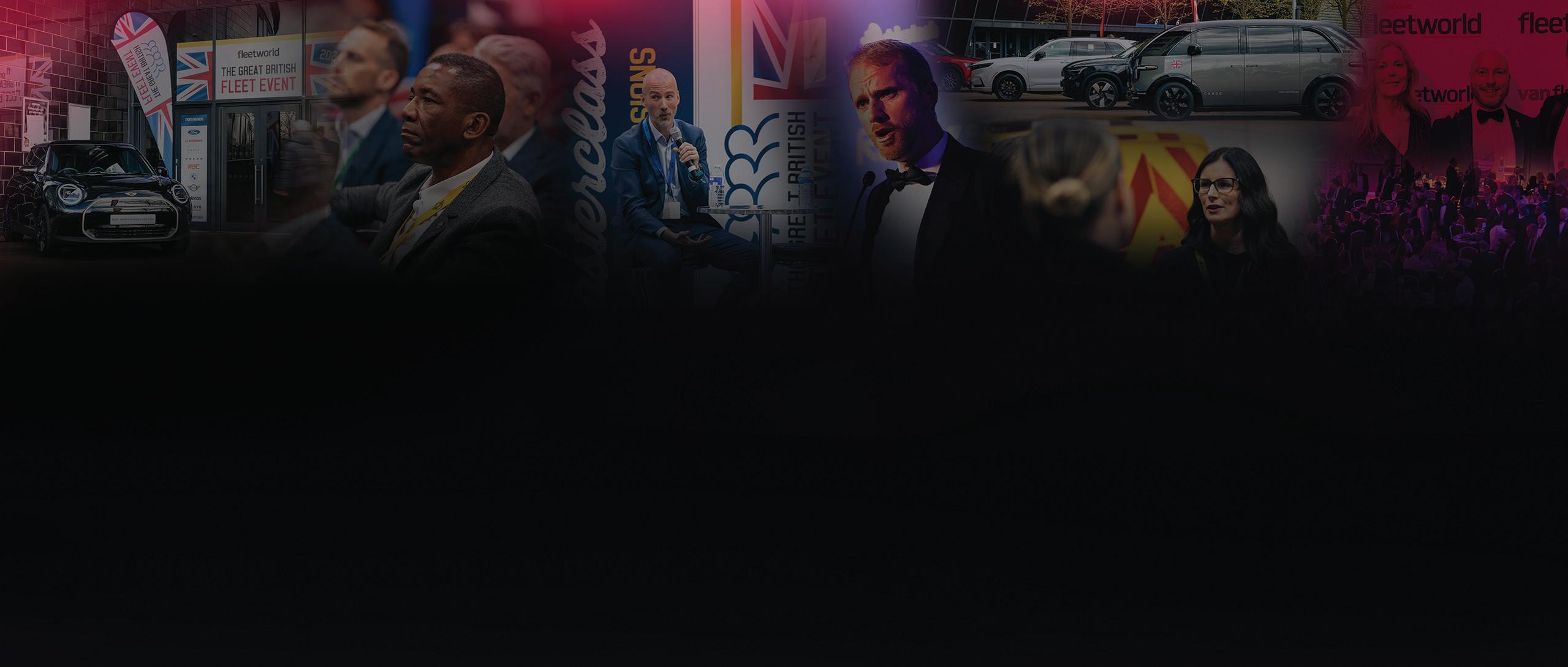
MAY 2025
Want to know where else you can get some more help and pointers on how to run a more efficient and improved fleet? The Great British Fleet Event, that’s where. Taking place on Thursday 8 May 2025, the fleet industry will return to Milton Keynes to be on hand to impart wisdom, offer solutions and generally look to be helpful for those who need it. After the formalities of the day are over, it’ll be time for the Great British Fleet Awards 2025, honouring the best people, products and vehicles in the fleet world – and a chance to catch up with friends and colleagues and maybe even make some contacts that might be helpful in the future.
P11D from £35,435 #GO GRAND
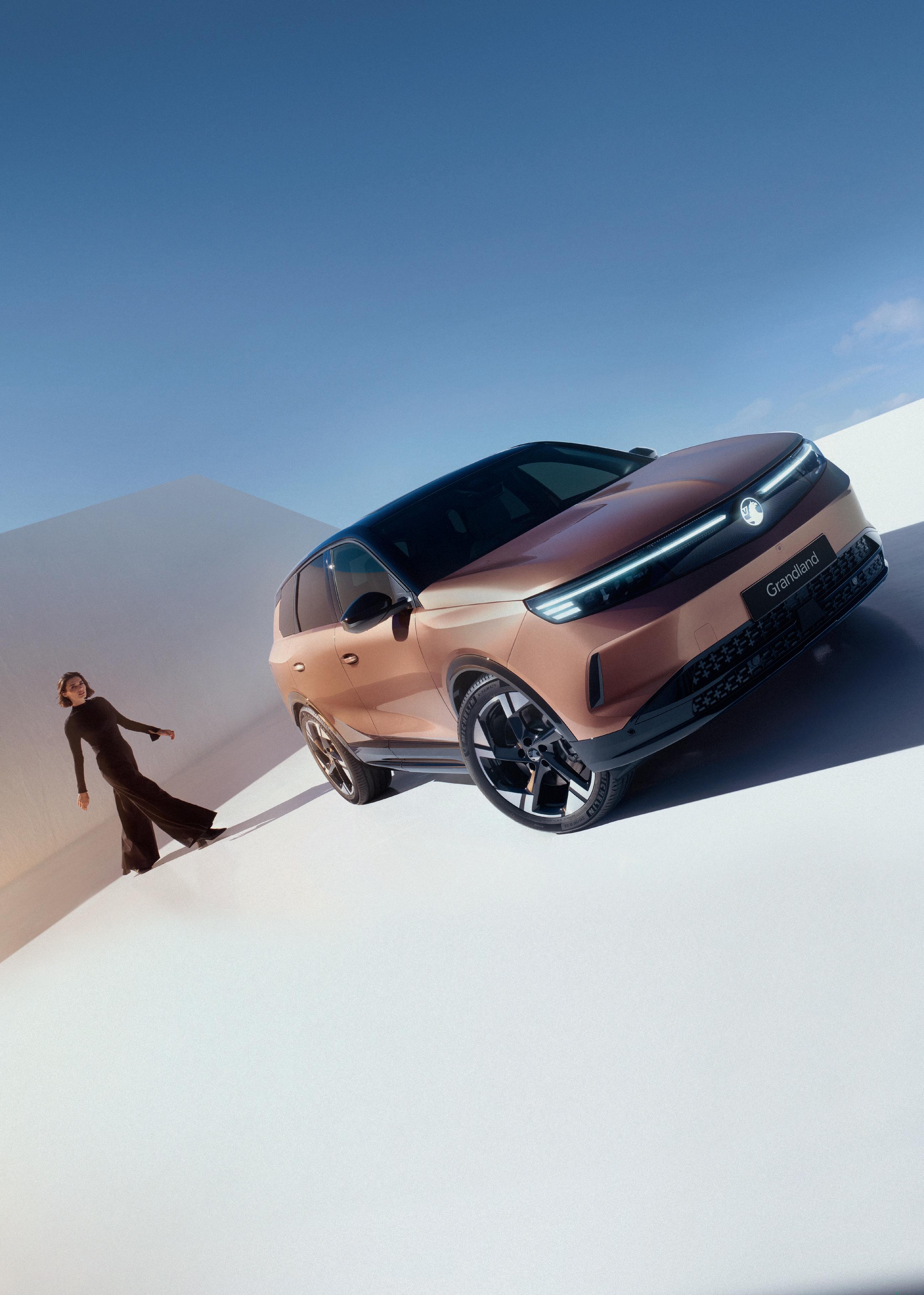
Fuel economy and CO2 results for the Electric Grandland: Mpg (l/100km):N/A. CO2 emissions: 0g/km. Electric range up to: 325 miles (standard range) up to 425 miles extended range* (WLTP). Fuel economy and CO2 results for the Hybrid Grandland: Mpg (l/100km): 50.44 – 51.36. CO2 emissions: 124-126g/km. The electric range, electric consumption and mpg figures mentioned comply with the WLTP test procedure, on the basis of which new vehicles are type approved from 1 September 2018. They may vary depending on actual conditions of use and on different factors such as: vehicle load, accessories fitted (post registration), speed, thermal comfort on board the vehicle, driving style and outside temperature.
*Extended range available to order Spring 2025
Please contact your Vauxhall Retailer for further information. Or call us on 0203 885 4562.
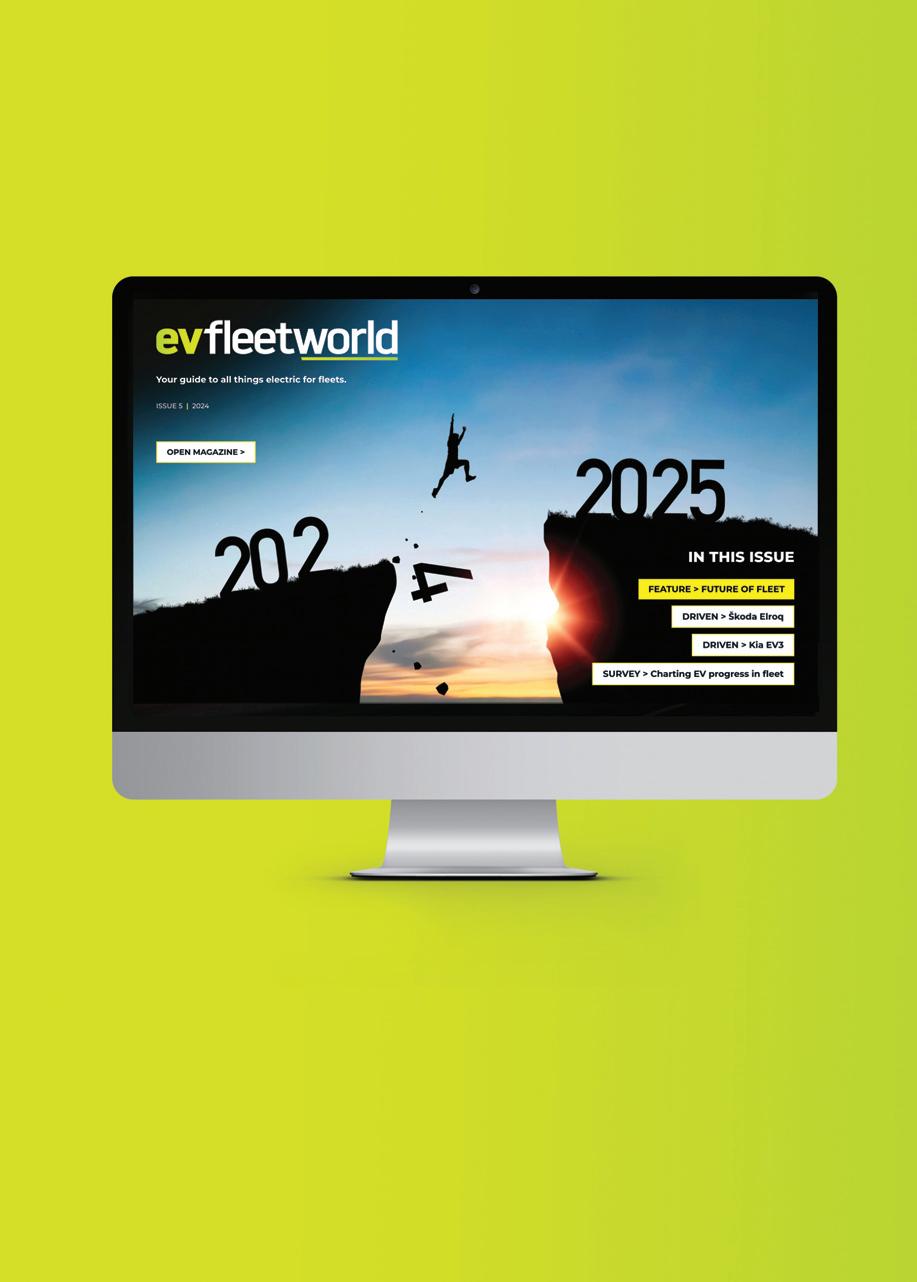


Charlie Cook founder, Rightcharge
What is your ambition in your current job role?
To accelerate EV adoption. Success for Rightcharge would be helping fleets buy more electric vehicles and meet their EV targets faster.
What job did you want to do when you were growing up? Believe it or not, I wanted to run my own company. My grandfather did that when he was in his 30s, which really helped the family and gave him lots of opportunities.
What’s the proudest moment in your career?
Taking the leap of leap of faith to start Rightcharge, with support from Octopus Energy, where I continued working two days a week, while I was setting up the business.
What are the biggest challenges facing fleets at the moment?
Electrification of vans – which is difficult, but exciting for us; working out how to get from 50% to 100% fleet electrification and navigating a very quickly evolving marketplace.
The best takeaway food? Pizza – specifically a capricciosa.
Supermarket of choice? Morrisons, home delivery.
You’re on your dream holiday. Where are you?
Backpacking around Australia with my family.
What’s your favourite film and why?
A French film called Les Intouchables, which is a touching story about a wealthy paralysed man striking up an unlikely friendship with an ex-convict from the projects in Paris.

If money was no object, what’s the first thing you would buy?
A house in the countryside that is so far away from any neighbours that I could build my own motocross or dirt bike track and bring back my childhood passion of riding dirt bikes. Electric ones, of course!
Name three cars in your dream garage?
Aston Martin Vanquish, Porsche Taycan and an electric SUV. Along with the electric dirt bikes, of course…
Night in or night out?
I’m an extrovert, so it would have to be a night out. Catching up with friends over dinner and drinks at a nice pub.
What car do you currently drive?
Kia e-Niro.
Tea, coffee or other?
Tea AND coffee – lots of both.
Books, mags or podcasts?
Podcasts – in particular Acquired, which tells the inside stories of companies.
Who is your idol in life and work?
It would have to be my Grandad. He was a big inspiration to me in lots of different ways, both in my life and my work.
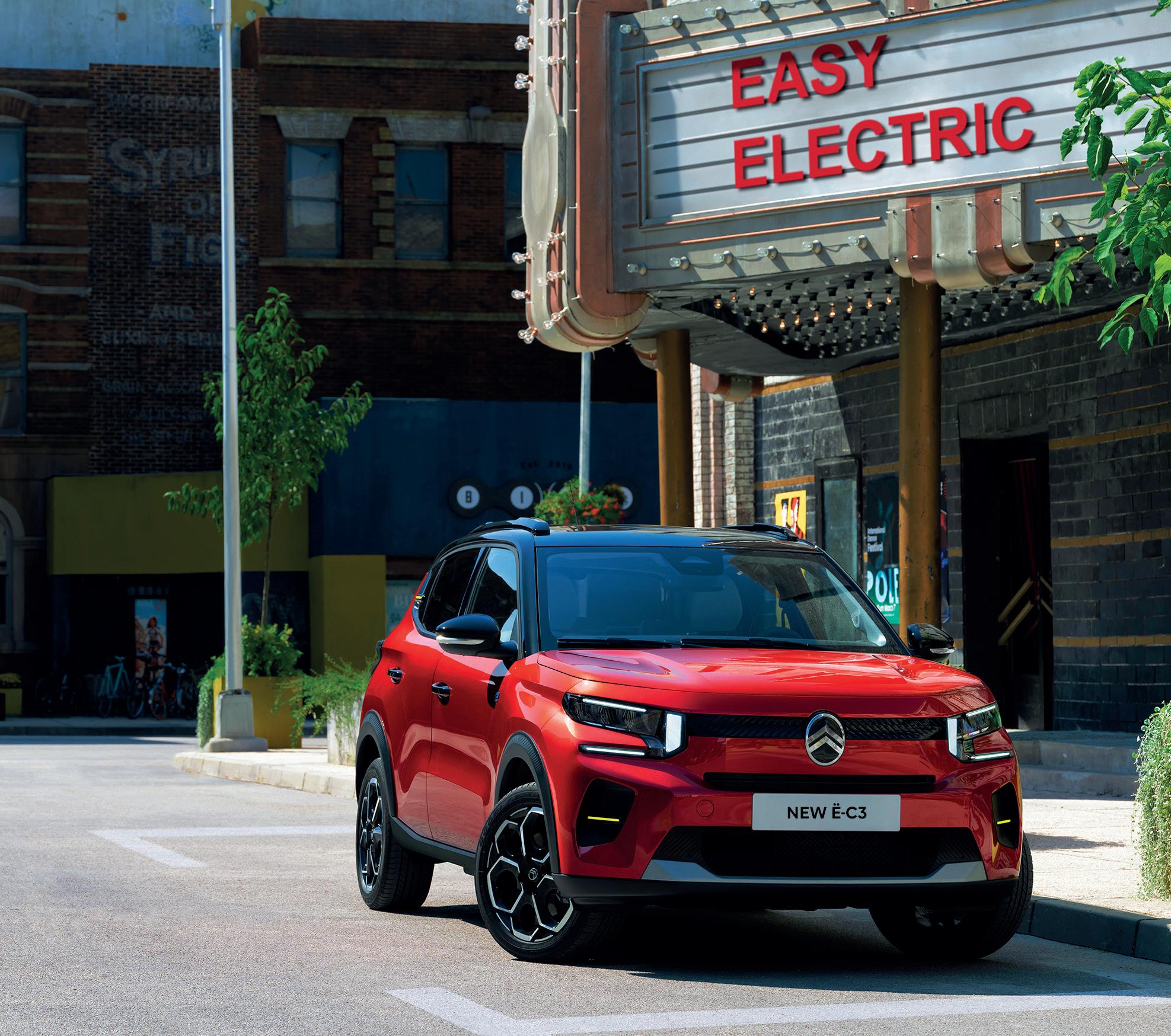
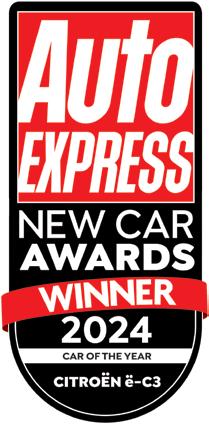
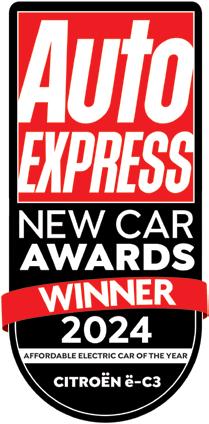
The UK’s much-anticipated ZEV consultation has now closed for responses, leaving the Government deliberating a vastly opposing bag of requests. Natalie Middleton looks at some of the key asks
Likely one of the biggest and most controversial consultations to impact the UK automotive sector, the Department for Transport’s ZEV transition consultation closed last month. Opened on 24 December 2024 – just in the nick of time before the year-end – it followed crunch talks between the Government and vehicle makers, after months of warnings from the automotive sector of “irreversible damage” over the EV sales quota rules.
The consultation covers two parts. The first looks at restoring the ICE phase-out date back to 2030 and seeks views on which cars can be sold alongside zeroemission vehicles from 2030, e.g. full hybrids and plug-in hybrids. The second part looks at technical measures to amend the ZEV mandate/VETS legislation without compromising the overall trajectory, certainty, or carbon savings of the regulations.
Labour stressed the consultation would explore “how, not if” the UK meets the 2030 petrol and diesel car phase-out, and that the consultation seeks views on potential adjustments to the “UK’s largest carbon-saving measure”. But it’s garnered a wealth of responses, many diametrically opposed.
The BVRLA said the Government must back its strong ambitions on road transport decarbonisation with a series of strong actions to ensure UK targets are met. This includes creating a healthy, stabilised used battery electric vehicle (BEV) market to ensure a successful new vehicle market as the association warned again that the current market is not set up to absorb the high levels of supply coming its way, driving high vehicle depreciation that pushes values of new vehicles up.

It’s also called for work to create demand for rental vehicles as it stresses the sector is facing unique challenges that are only exacerbated by forced supply.
Lastly, the BVRLA has stressed the need for urgent action to enable electric van adoption. This includes removing regulatory barriers, already under focus in a Department for Transport consultation opened late last year. Chief executive Toby Poston said: “The long-awaited consultation on the ZEV mandate provides a valuable opportunity for the Government to realign its aims with the realities seen in the market. The targets are at major risk unless the policymakers deliver a comprehensive set of measures to drive long-term demand.”
EV MANDATE REFORM NEEDED
Trade union Unite says the UK ban on internal combustion engine vehicles should stay in line with the European Union’s 2035 deadline, unless there is a proven strategy to defend jobs, which it reckons ZEV does not currently deliver. General secretary Sharon Graham said the current regulations were a “blunt tool that risks jobs rather than encouraging people to purchase EVs”. Unite’s ZEV proposals include providing additional credits for UK-made vehicles, ‘bundling’ to allow EV and low-emission commercial vehicles to count towards passenger vehicle thresholds and allowing exported EVs to count towards credits for meeting thresholds.
“A blunt tool that risks jobs rather than encouraging people to purchase EVs”
The response from the Association for Renewable Energy & Clean Technology (REA) includes the “crucial” removal of full hybrids as “the CO2 emissions from HEVs have a significantly higher CO2 emissions range and ultimately their electric batteries are powered by petrol and diesel”. The REA also said the Government should mandate salary sacrifice schemes for medium and large businesses and it spotlighted that government-backed, affordable loans have seen rising adoption of EVs in lowincome households in other countries.
Among other areas, it also urged the Government to urgently work with the industry to establish battery health certificates, as pledged in the Labour manifesto, to combat falling EV residual values, which are estimated to have dropped by 50% in the last two years.
Meanwhile, ChargeUK, the EV charging trade association, has warned the Government that the rollout of widespread, affordable charging infrastructure will be jeopardised if the ZEV mandate, which governs EV sales quotas in the UK, is altered.
ChargeUK is urging the Government to leave the mandate untouched and instead take steps to further boost demand for EVs through several key measures, including equalising VAT on public charging to 5%, delaying changes to the Expensive Car Supplement and Vehicle Excise Duty, and considering further demand incentives in consultation with industry.
Chief executive officer Vicky Read said: “Government should stick to the existing mandate and focus on further supporting and stimulating demand for EVs.”
























































































































































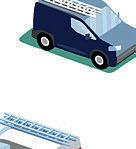













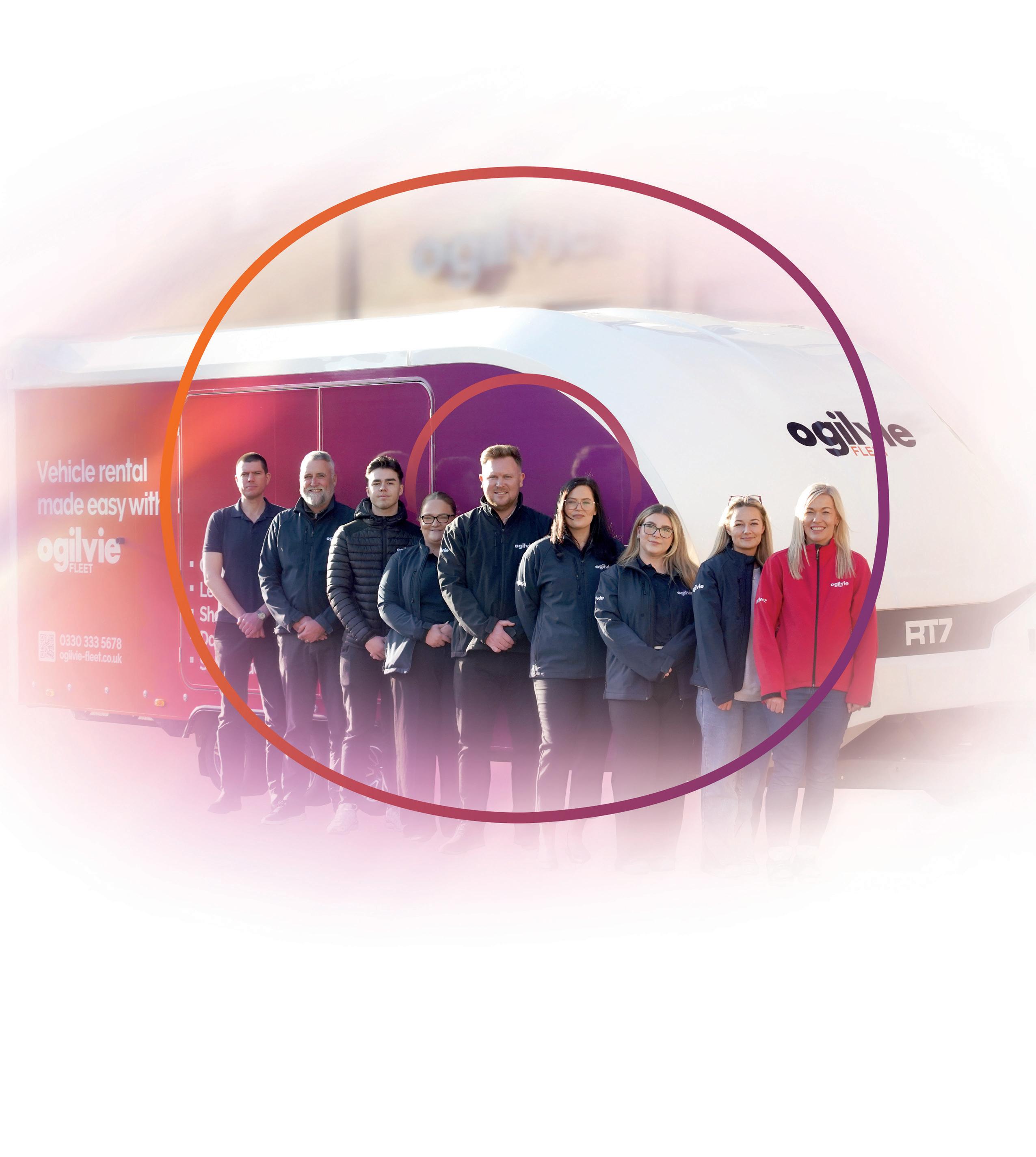















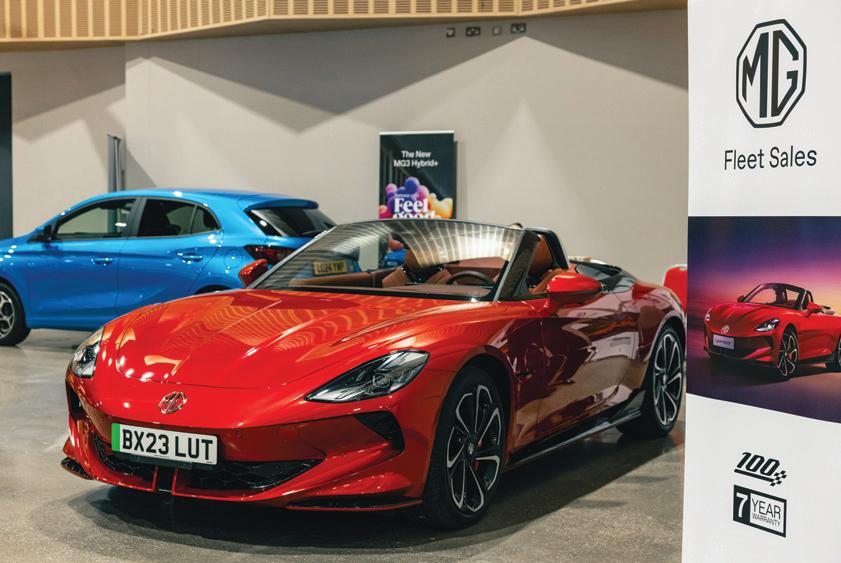




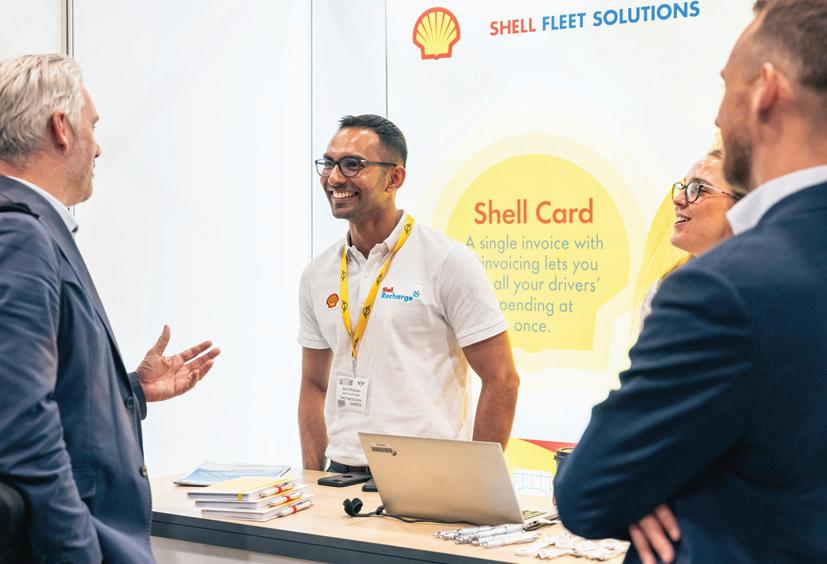


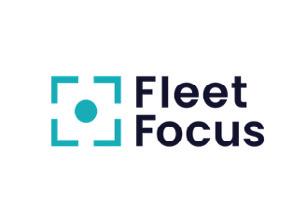


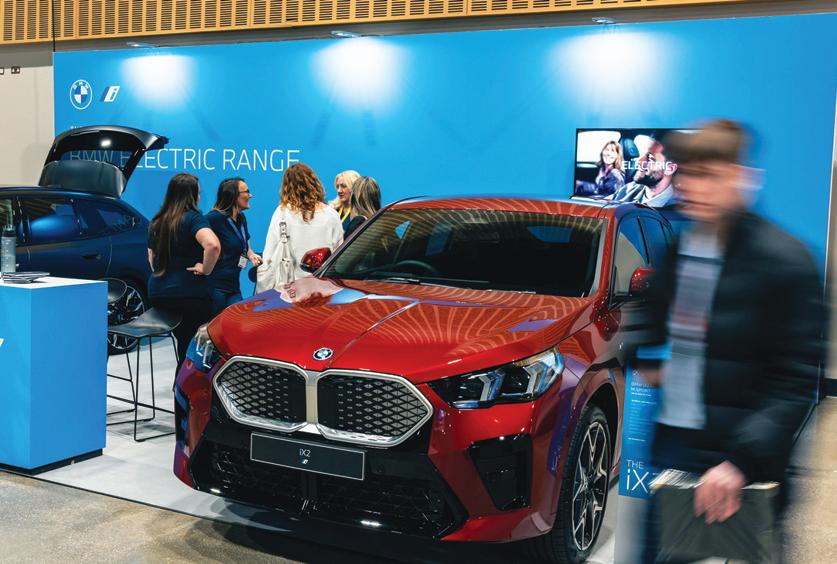

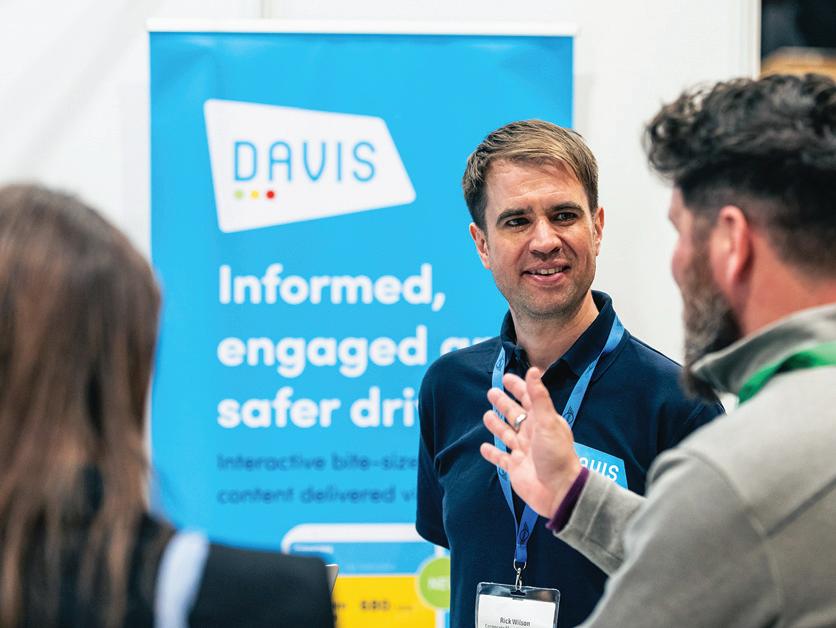
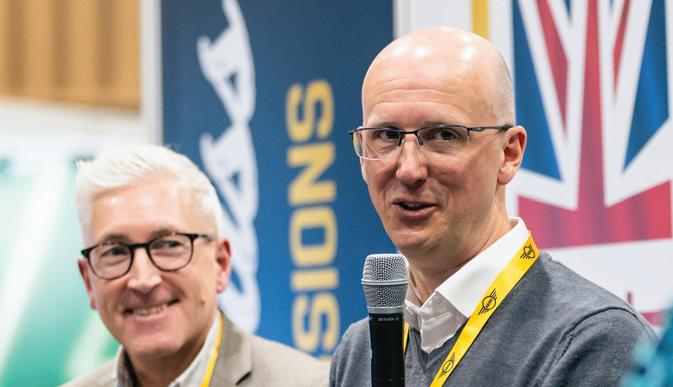

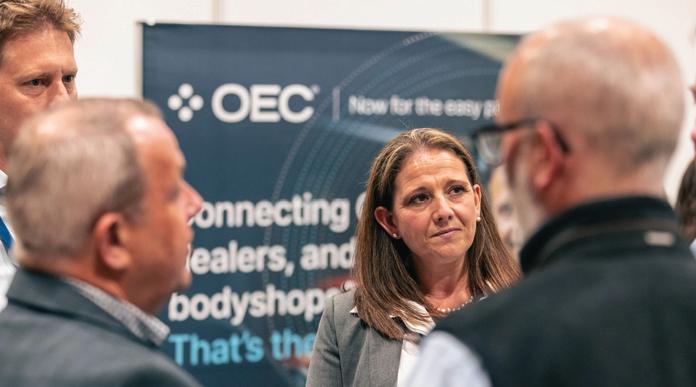








“I particularly enjoyed the Masterclasses, all of which provoked thought around real challenges faced by fleets. I look forward to the 2025 event!”
Leroy Thomas, fleet manager – Affinity Water –
“Thank you for hosting an enjoyable and worthwhile event. GBFE 2024 was extremely well organised, within an excellent venue, and provided a useful networking opportunity with peers. I look forward to attending next year.”
Chris Bland, group fleet and transport manager – Center Parcs –
“Athlon were pleased to exhibit for a second year running at GBFE 2024. Throughout the day we met with a number of quality delegates that have since progressed into real business opportunities for us.”
Richard Dainty, head of marketing and sales support – Athlon –
“Another brilliant event! We're a big fan of the GBFE team - attentive, accommodating and passionate about what they do.”
Dan Lawrence-Eyre, COO – Diode –
“GBFE is a staple event for our company, enabling us to showcase our tech and services to the fleet industry. It’s also great to be associated with the prestigious awards evening which is a superb networking opportunity and an overall thoroughly enjoyable time.”
Kieron Davey, UK country manager – Driiveme –
What is it? Either an electric saloon or a hatchback
When is it available? Late 2025 Biggest changes? A new model, but a familiar look Fleet appeal? Electric drive, quality interior, loads of tech
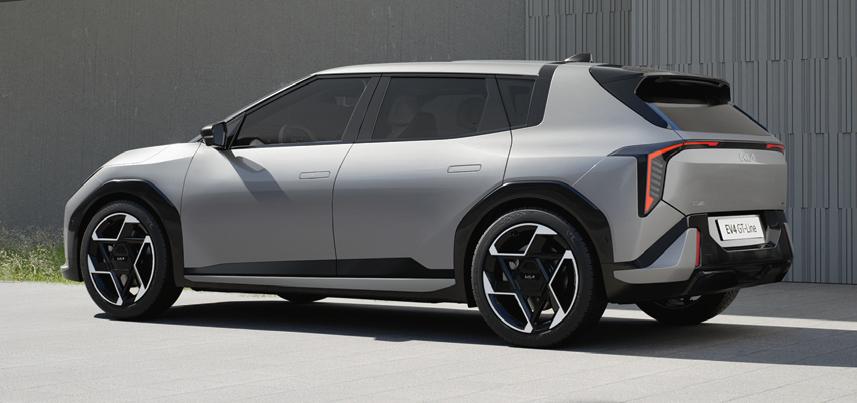
Two in one
Kia’s EV family continues to grow with the EV4, available as a saloon and hatchback (four-door and five-door) proposition. According to the Korean brand, the car aims to “redefine the C-segment” and “represents a fresh approach to the traditional aesthetics of the sector”.
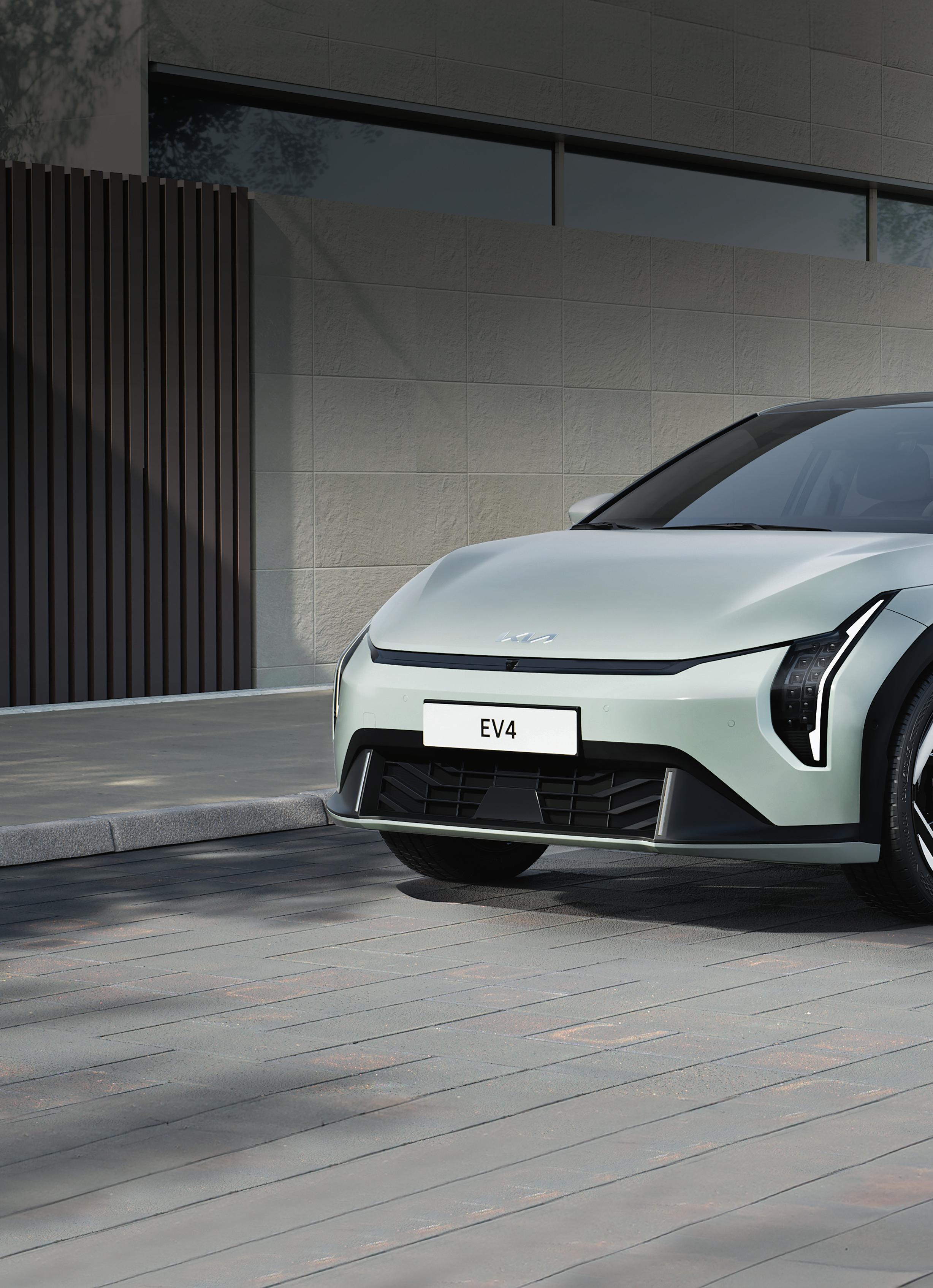
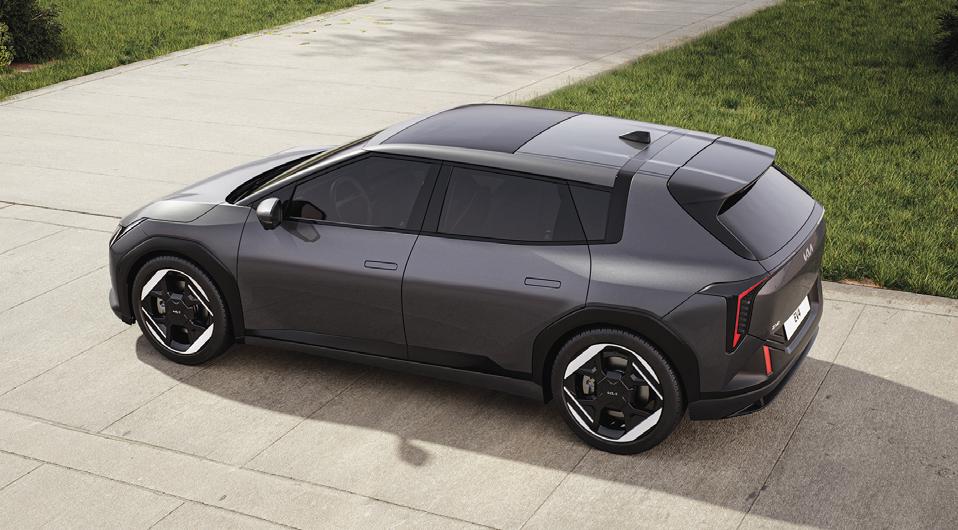
The EV4 will be available with either a 58.3kWh or 81.4kWh battery option, providing up to 267 and 391 miles respectively. These ranges have been achieved with the help of some serious aero work, including a full undercover, resulting in a drag coefficient of 0.23Cd. Vehicle-to-load and vehicle-to-grid capabilities are also included.


If technology is your thing, you’ll love the new Kia, because it boasts a plethora of convenience and connectivity features. These include: Digital Key 2.0 (with Apple Watch compatibility); i-pedal 3.0 regenerative braking to boost comfort and efficiency and in-car streaming services, such as YouTube and Netflix.
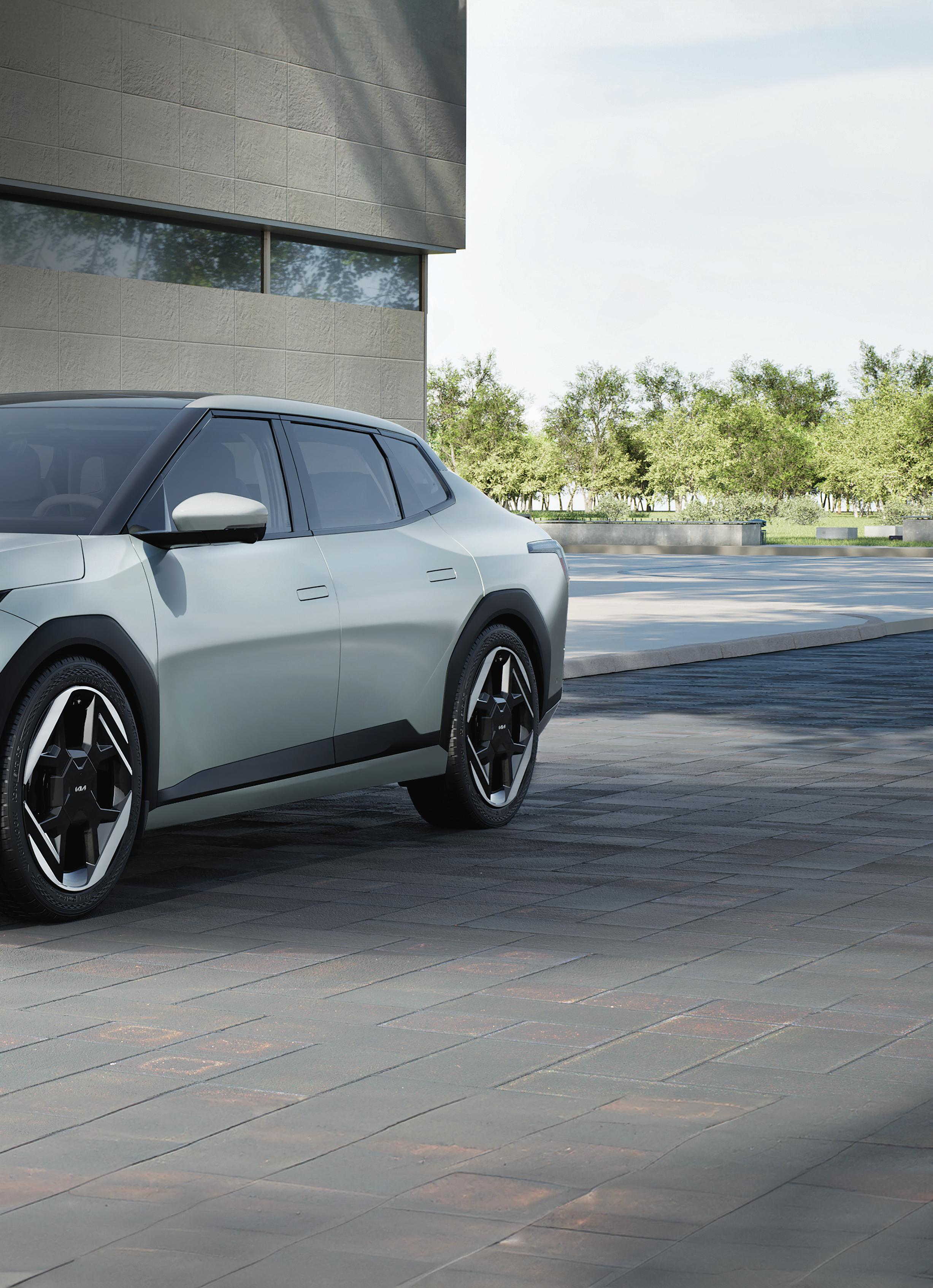
The interiors of Kia’s EV models have been widely applauded with a clean layout, comfortable seats and surroundings, and plenty of space. This trend continues in the EV4, with “contrasts in form, colour and materials” and a minimalist layout. There’s a rotating armrest, sliding table and 490 litres (435 litres in the hatchback) of luggage room for passengers to enjoy.
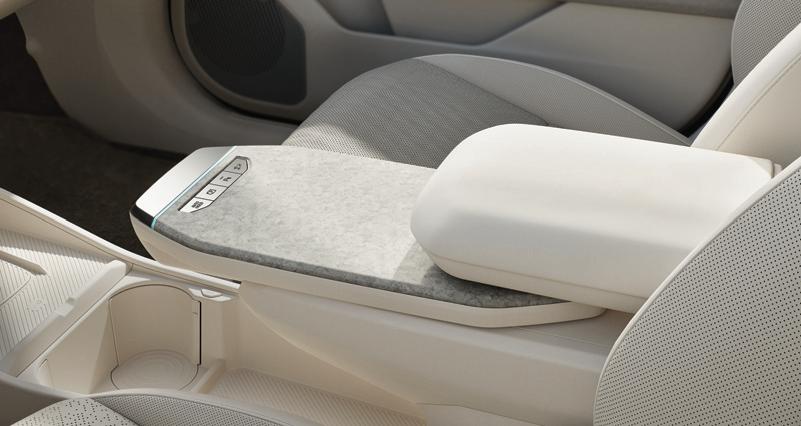
Exact specifications for UK EV4s are yet to be revealed, but the initial overview gives a good idea of what drivers can expect. In short, it’ll be more of the same found in Kia’s other EV models, but a chance to reach drivers in different areas of the market. Given the popularity of the other models, we see no reason why the EV4 won’t also be a big hit.

Fleet demand for EVs continued to surge during 2024, but are the underlying incentives leaving some households behind? Our editor-at-large investigates
With an election looming and manufacturers facing the first ZEV mandate targets, 2024 was always going to be a busy year for electric vehicle headlines – and, in that respect, it didn’t disappoint. With a flat retail market and the first ZEV mandate targets, I’d imagine most brands were thankful for generous fleet-targeted incentives to boost EV demand. However, fleets can’t prop up that market on their own.
Electric vans are a world of pain in their own right, so I’m focusing on cars here. It’s a market that has enjoyed a decade of cheap products and credit, abruptly halted by spiralling living costs and interest rates. SMMT data shows retail registrations were down 9.1% year-to-date (versus 2023) at the end of November 2024 and still-pricier, under-incentivised EVs are hardest hit. Around 80% are company-owned, though obviously not all of those are company cars.
This year’s ZEV mandate target is 28% of new cars, which the SMMT has highlighted is a 53% increase in registrations and 90,000 more than currently forecast. It’s also voiced concerns about “unsustainable” discounting – echoed by the BVRLA – and how those affect residual values. Could incentives be part of the problem?
This is being discussed. Shortly before the last Autumn Budget, a think tank called The Resolution Foundation put out
a less-than-complimentary report taking aim at the EV incentives that the Chancellor has since extended to 2030. Notably, it alleges those tax breaks make EVs cheaper for those who could afford a new car anyway, while offering less support for households who need the financial leg-up to switch.
Nudging wealthier drivers is a good thing, but the data is eye-opening. The report highlighted HMRC statistics showing 760,000 people paid company car tax in 2022/23 – 40,000 more than the previous year, with 29% driving an EV. Twothirds (66%) earn more than £50,000, of which almost half (32% of the total) earn more than £75,000. Only 2% earn less than £20,000.
Salary sacrifice schemes, often praised for democratising EV ownership, don’t fare much better because they’re linked to income tax savings. The Resolution Foundation calculated that a basic-rate taxpayer would pay around 28% less for an EV via salary sacrifice than leasing privately, whereas someone earning £100,000-£125,140 would save 62%.
Wealthier drivers are also more likely to have off-street parking and solar panels to
maximise the savings. It’s noteworthy that 79% of EV drivers surveyed by Zapmap charge at home, while 78% said going electric was saving them money. I wonder how much those two groups overlap?
In turn, the used market is distorted. The average median list price of the 10 most-registered new cars in the first half of 2024 (according to the SMMT) was £35,206, compared with £52,939 for the most popular EVs. Like a lot of used buyers I’d be wary of an out-of-warranty luxury SUV, but I can see the appeal of something smaller. Recent Cap HPI data suggests that’s what is happening in showrooms, where three- to five-year-old EVs are selling faster than fuel-burning models. The Kia e-Niro, Tesla Model 3 and Volkswagen ID.3 were shifting faster still. And that’s where I think we’ll see the headlines in 2025. There’s a glut of affordable, compact EVs on the way – Citroën e- C3, Ford Puma and Renault 5 among them – and that’s where sal-sac will come into its own, getting electric to the masses. And they’ll also help get electrification within reach of more budget-constrained new and used car buyers – perhaps there’s some balance on the horizon at last.
“There’s a glut of affordable, compact EVs on the way, Citroën e-C3, Ford Puma and Renault 5 among them ”


Martin Evans board member, Association of Fleet Professionals
How do you get your board to fund fleet risk? The AFP’s Martin Evans tells all
It’s never easy to convince a business to spend their tightly guarded money on intangibles. It’s a thought that must cross the minds of many fleet managers during budgeting season as they put new risk management initiatives forward, competing with peers in their corporate group trying to obtain budgetary approval for their own proposals.
The core problem is that, in arguing for accident prevention measures, you find yourself trying to quantify an intangible in cost and human terms in order to stop it from happening. It’s a tough sell, whether you look at low-level incidents that are probably perceived as little more than annoying, or more significant ones that have a serious financial and emotional impact.
Your board may support, in concept, the idea of fitting dashcams or carrying out driver training assessments – and may even accept that such moves will reduce accidents. But those measures are unlikely to feed through into something quantifiable –
such as a reduced insurance premium – for a couple of years or longer, while the human cost of a crash that didn’t happen is never really visible. The temptation will be for them to focus their attention on simpler projects with more measurable, faster paybacks. So, as the fleet manager, how do you get yourself heard and obtain budget approval? From the Association of Fleet Professionals’ risk and compliance group, here is our fivepoint guide.
1) Do your homework
Make sure you have a handle on how to get board backing for a project within your organisation. Talk to people who have won investment in the past and learn about how they did it. Explain to them what you are trying to achieve and get advice on which key considerations could help to swing arguments at board level. Successful strategies will differ quite widely from employer to employer and knowing how the process operates within yours will be crucial.

“Outside of the fleet department, accidents cause disruption for all kinds of functions within your company”
2) Get influential advocates
It’s easier to get approval with backing from board members who will champion your cause – and remember that it doesn’t really matter if they present the initiative as their own idea as long as it gets rubber stamped. It’s also important to identify other influential figures within your organisation at all levels, tell them about what you are trying to achieve and that you’d like them to be part of your unofficial campaign.
3) Emphasise the HR angle
Getting your human resources department involved is likely to be a good strategic move. Outside of the fleet department, accidents cause disruption for all kinds of functions within your company. But HR people are potentially the most affected because they deal with the human cost, such as the range of issues surrounding long-term absenteeism. Convincing them that accident rates can be reduced is likely to be a positive.
4) Remember ethical responsibilities
If you’re in an organisation where you are looking at adopting new risk management measures, chances are that you are already fulfilling all your legally mandated Driving for Work responsibilities. While seeing actual costs fall should be at the centre of your argument, don’t be afraid to make the ethical case. Doing as much as possible to protect your employees and other road users is simply the right the thing to do.
5) Get help from potential suppliers
Investments of this type take time to pay back. Talk to prospective suppliers of the risk management products that you are considering and your insurer, too, gathering credible data to build a picture for the next three-five years and showing the accident reductions that can be expected alongside the likely effects on premiums.
As the UK’s largest privately-owned contract hire, fleet management and EV salary sacrifice specialist, what is it that makes Grosvenor so di erent?
Independence:
Because we own our business, we also own our decisions! It means we can adapt to your needs.
Largest privately-owned:
Our size gives the national infrastructure and financial muscle you’d expect, yet we o er a personal touch that delivers 98% customer satisfaction.
No call centres or voice mail queues:
We work with integrity, excellence and agility, and prioritise the personal touch. Friendly teams on first name terms.
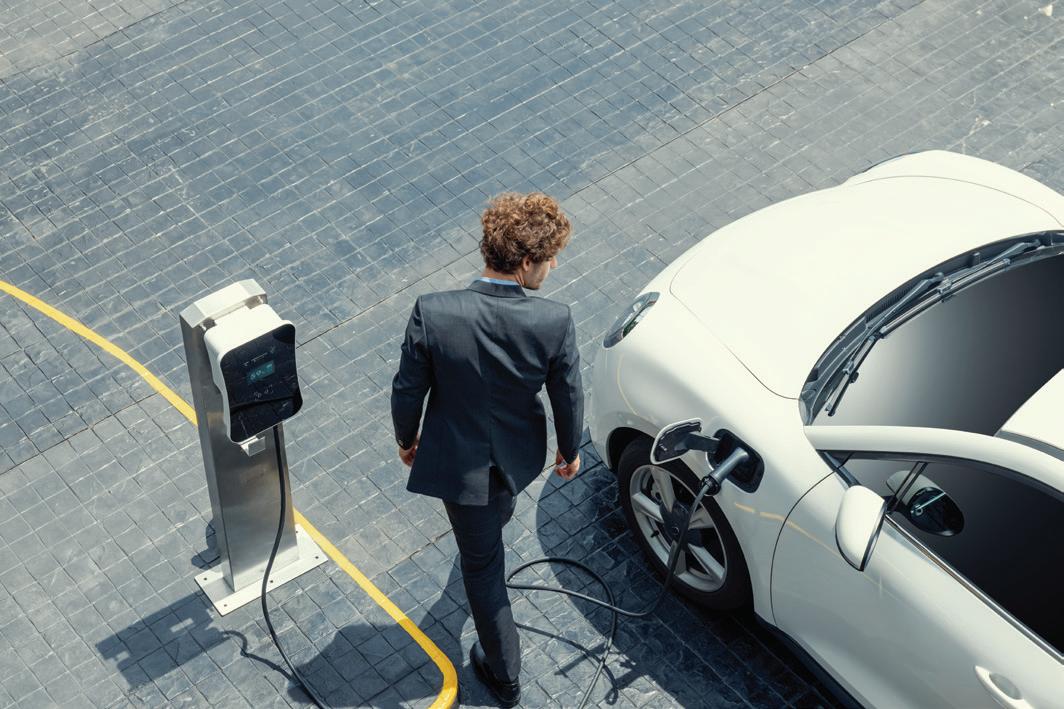
Four major awards in succession:
We were the first company to win all 4 major industry awards in the same year!
SMEs to major household names:
Big or small, you matter to us. We work with hundreds of SMEs as well as major brands such as Tata Steel, Weetabix and Guide Dogs for the Blind.
Award winning technology:
We’ve won awards for our digital innovation, yet we know software should enhance, but not replace, traditional customer service.
Would you like us to drive your business forward, together? For more information visit grosvenor-leasing.co.uk

Navigating the digital maze: four ways fleet managers can separate valuable trends from the noise.
By Jesper Lyndberg, CEO, Alphabet International
Digitalisation continues to evolve at a rapid pace, with new technologies and innovations constantly reshaping the fleet management landscape. As a fleet decision-maker, it can feel like an enormous task to filter through the noise and identify which trends are worth pursuing. With so many options, how can you keep your finger on the pulse and ensure you’re making the right moves to future-proof your fleet?
Here are four key digitalisation trends that are not only shaping the future of fleet management, they are driving real, measurable transformation and creating opportunities for growth.
1 Data-driven decision-making: the lifeblood of modern fleet operations
The power of data in fleet management is not just about collecting information; it’s about how that data is used to drive decision-making and operational improvements. Connected vehicles, telematics and operational systems are already generating vast amounts of real-

time data. It’s only a matter of time before the smart use of connected car data will become the norm.
Fleet managers must be ready: as connected car data becomes omnipresent, the ability to access and intelligently interpret this information will be a game-changer. Predictive maintenance, for instance, was just the beginning. While it has been a known concept, the real shift will come with the exponential increase in data availability alongside the smarter, more precise actions that fleet managers can take as a result.
Why is this crucial for fleet decisionmakers? Because the more granular the data, the more precisely fleets can manage vehicle health, optimise routes and forecast needs – ultimately driving down costs, reducing downtime and improving the lifespan of vehicles. By ensuring they have the right tools to capture, analyse and act on connected car data, fleet managers can futureproof their operations, giving them a competitive advantage in the rapidly evolving landscape.
2 Digitalisation tools and platforms: the competitive edge your fleet can’t afford to miss
While the importance of digitalisation is well understood across the fleet management industry, there are still companies that are hesitant to fully embrace the digital tools that will define the future of the sector. The reality is clear: fleet management is moving forward with or without you. Those that continue to rely on outdated systems or manual processes risk falling behind, struggling with inefficiency, compliance issues and, ultimately, higher costs.
In a world where modern tools have become the baseline for effective fleet management, failing to adopt them is no longer a mere oversight – it’s a strategic misstep. The good news is that there are now cost-effective and user-friendly platforms available – from leasing providers to SaaS companies – that make it easier to integrate digital solutions into your operations. These platforms, designed to scale with your fleet,
offer everything from vehicle lifecycle management and compliance monitoring to expense tracking and performance analysis. The barriers to entry have never been lower, making it easier for all businesses to access these tools.
Moreover, digitalisation enhances collaboration across organisational silos. With real-time access to fleet data, teams in logistics, finance and compliance can work more effectively together, breaking down barriers and resolving issues faster.
The time to act is now – get ready or get left behind.
When talking to our customers and companies of any size in recent years one thing has become especially clear: fleet managers want to be able to work autonomously. They prefer self-service solutions with which they can play around with by themselves to any other experience.
This is why we, as mobility companies, must change our focus. The emphasis can no longer be on offering self-service tools as just another feature but as an integral component of efficient fleet operations. Through platforms, mobility providers provide endto-end solutions that allow users to
configure vehicle options, manage bookings, and track fleet performance in real time – all without direct assistance from our side.
Tailored, data-driven insights given by web-based configurators or other platforms that align directly with customers’ unique requirements allow a steady reduction of touchpoints with mobility providers, while driving up efficiency and improving decisionmaking. This approach not only accelerates procurement and approval processes but also fosters transparency, reduces miscommunication and drives up client satisfaction.
Moreover, for larger organisations, workflow-integrated self-service systems are enabling seamless coordination between departments. Selfservice platforms streamline internal approval processes, making fleet management more collaborative and reducing bottlenecks. As these solutions evolve, they are becoming indispensable for companies looking to operate at scale with minimal administrative overhead, making them a cornerstone of modern fleet management.
4 AI integration: redefining efficiency in fleet management
The widespread adaption of artificial intelligence in almost all aspects of our
“Fleet managers must be ready”
Jesper Lyndberg
lives doesn’t stop at fleet management. We are about to see some of the biggest leaps in terms of automation that we have ever seen in our industry. AI has introduced a degree of precision to our work with data that enables capabilities that were once thought to be nearly impossible.
Modern fleet management is largely about the precise processing and allocation of large amounts of data. A task that AI solutions such as our AI Assistant especially excel at. It uses intelligent automation to transform raw data from over 800 unique data fields into clear charts and graphs, improving the visualisation of insights. Customers then can easily query and extract insights without the complexity of traditional data interpretation. This streamlines strategic decision-making, ensuring it is more informed and data-driven.
Thus, AI is transforming administrative processes. From automating compliance reporting to generating actionable insights at the press of a button, these tools allow fleet managers to shift their focus from routine tasks to strategic planning. While concerns about data privacy and workforce readiness remain barriers to adoption, companies that address these challenges early will reap significant benefits.

The rapid evolution of digital technology offers fleet management unmatched opportunities, but it also demands quick, proactive action. Advances in AI connected cars and innovative platform solutions are already reshaping the fleet industry, enabling smarter decisions, greater efficiency, more sustainable operations and driving down operation costs. Businesses that act accordingly now – investing in the right tools and forming strategic partnerships – will not only keep pace but will lead the way toward a more connected and efficient future.
Mike Daniel, founder and technical director of HI Technology and Innovation, ponders why fleet management systems aren’t really fit for purpose
This article cannot possibly hope to supply the ever-elusive answer to the age-old question of “Why has it done that?”, but we can certainly give it a crack. It seems to be a recurring issue that businesses come to us with –simply put, the systems they’ve brought in to help make their lives easier are causing an almost equal and opposite amount of angst.
To get to the bottom of why, we have to start with the people who create software – and finish with the people who use it. After all, despite the image we have in our minds when talking about technology, it is fundamentally all about humans.
One of the greatest, yet weakest, traits of the people who build software is that they often think like the very computers they programme. To us, that means converting ideas into logic and procedure into algorithms. This process is great for data efficiency and scalability, but creates rigid structures that struggle to adapt when the real world comes stomping in. All of a sudden, to satisfy as much of the market as possible, software engineers have to standardise and systematise every conceivable use case they can think of. As you can imagine, this feasibly isn’t possible and it’s the underlying root cause of the majority of bugs,

issues and frustrations of software. One company’s standard operating procedure can quickly become another company’s bug – and no software engineer, no matter how great, can think of every eventuality.
So what happens when the rigid structures start to feel the stress? When your personnel unexpectedly change one morning and so a driver jumps into an unanticipated van? Hiccup. When your FNOL system isn’t tied to the location and traffic data of long tunnels? A bigger hiccup. Or when you have no discernible way of determining which vehicles in your fleet have fridges? (See KFC’s experiences in 2018).
To begin to resolve this problem, the software world has developed the ‘product owner’. These survey-wielding, metric-obsessed evangelists are all about converting the needs of real humans into products that actually do something positive – they bridge the gap between the people creating the software and the people using it. And while there are many methodologies, most product owners do all of their work while sitting at their desks.
That makes sense when you’re building software for hundreds of businesses, but, because of this, the software they build will never truly be a perfect fit for your specific business; it’s an impossible task. To resolve this, we’re big proponents of what we call ‘investigative’ product ownership. This is where we send our product owner over to your depot and get them to physically watch how your fleet operates and, dare I say it, speak to your colleagues (insert audible gasp).
It’s only by doing this that you can truly start to pick up the nuances of each fleet and build a bespoke solution that actually works. From there, they’re unleashed and can get stuck into delivering useable tools that improve the efficient operation of your fleet.
THE OTHER SIDE OF THE EQUATION
Now we have the foundation for building great products, we should turn our attention to the users of those products. One of the hardest problems of any software product is getting people to actually use the darn thing and, moreover, use it habitually. Instagram is an example of a company that has got this down
“It is more efficient for a driver to upload their information onto a phone or tablet-based app as it provides immediate transparency”
to a tee, using highly addictive videos of dogs in sunglasses in a vertically scrolling format. For obvious reasons, this isn’t a tactic we can use in the world of fleet, so, instead, we have to look at other ways of building habits.
That means when it’s time for your drivers to perform a vehicle check, they think of your tool. And when it’s time to report personal/business mileage, they also think of your tool – and so on and so forth. Ultimately, everything is a habit, which is why it’s one of the other areas we’ve been exploring with our partners (and the fleets of some of the largest retailers in the country) –rewarding people for using the right tool at the right time. We’ve quite literally built an entire gamification platform to support fleet management tooling and, while it may seem like cracking a walnut with a sledgehammer, it’s actually delivered incredibly positive results in terms of engagement with the software ecosystem.
It’s also a great way to give back to people who are doing the right things and are embracing changing processes with open arms... After all, who likes change? On top of this, of course, we
have to continually learn through both qualitative and quantitative data exactly what is and what isn’t working for people – and this is a big part of product development. Everything we develop has to be driven by some kind of expected value to the end user, and all our efforts must be focused firmly on the person at the other end. If you’re interested and want to learn more about this, I’d highly recommend reading around the ‘buildmeasure-learn” cycle and similar variants that can help you develop not just software but anything from sales pitches to new processes. However, be aware that for such an incredibly simple paradigm, it is remarkably hard to implement continuously.
THE WRAP...
And there we have it – our unique take to building unique tooling for unique companies. It’s all about bringing in the humans from all the different points on the spectrum and building stuff that is fun, habitual, easy to use and, importantly, that manifestly works for all stakeholders.

Adam Rodgers, UK and Ireland country director at Easee, discusses technology’s role in decarbonising transport
There was a lot of talk about 2024 being the first year in history to see global temperatures exceed 1.5°C above pre-industrial levels, even if this breach was temporary. In reality, last year was the first to pass the symbolic threshold and was the hottest year on record. The Paris Agreement represented a crucial step towards driving change – however, the current level of action is not turning the tide at the pace that is needed.
While policy debates and environmental rhetoric largely zeroes in on regulatory frameworks and broad systemic changes, technology’s transformative potential is often under-appreciated in climate change discussions. Despite the virtues of real-life applications of technological innovations being seen – renewable energy, AI and Internet of Things (IoT) to name a few – its role continues to be undermined.
Yet, technological advances will be essential to address the adversities of climate change and to adapt, while also reducing the responsibility being placed on the consumer. A more disruptive
approach, one that places greater value on technology for tangible results and scalable change, is needed.
The automotive and transport sector is a live example of the transformative potential of technology. Recent advances currently playing out, such as electric buses and intelligent urban mobility solutions that combine electric bikes and scooters, are providing potential solutions to tackle the industry’s contribution to greenhouse gas emissions. Meanwhile, EVs themselves exemplify how technological innovation can dramatically reshape an entire industry’s landscape. But more innovation is still needed even within this space.
The domestic transport sector alone was responsible for producing 29.1% of all the UK’s territorial greenhouse gas emissions in 2023. At both a global and local level, EVs are viewed as one solution to reducing transport emissions. The progression of EV chargers over the past decade has evolved at a rapid rate
and is continuing to do so. Developments have tackled previous limitations such as range anxiety and weak charging infrastructure. Helping to quash worries over battery performance, demonstrations have shown the ability to charge vehicles from 10% to 80% in just 10.5 minutes.
Car manufacturers are also pushing boundaries to develop the next generation of vehicles. The best recent example of this shift is Jaguar’s Type 00 concept car and the company’s shift to EVs – reinvention for a cleaner future. But clean transport isn’t just about the vehicles themselves – energy sources offer plenty of potential. From smart grid systems that optimise electricity distribution, to innovative energy storage solutions and vehicle-to-grid (V2G) technologies that allow electric vehicles to store and feedback excess energy, no stone is being left unturned. Should a greater emphasis be placed on technological solutions, the industry has the potential to be reimagined.
But barriers to full EV adoption remain.
While there are over 1.3 million fully electric cars in the UK, this figure equates to just 3.94% of the cars on UK roads. The early adopters have already made the switch to hybrid or fully electric and it is now mass consumer adoption that is needed. Broadly speaking, this is a more cost-conscious segment of the population.
In October 2024, SMMT data showed that, one in five EVs costs less than its ICE equivalent. However, the SMMT has said that the level of discounting by car manufacturers, representing an estimated £4.5bn across 2024, is not sustainable in the long term. How EVs can be made accessible to all is one part of the equation that new innovations need to help solve.
The technological breakthroughs in EVs are remarkable, but as the industry keeps evolving, government support will continue to be imperative. Changemakers need to be given the right level of acknowledgement and investment to make the advances needed for climate change goals to be reached and, in this case, for widespread adoption of EVs. Many technology solutions burn out at the pilot stage before they’ve had the
chance to really get going. The World Economic Forum sets out three factors contributing to this outcome: the need for better alignment on incentives between governments and businesses; greater pressure from governments needing to be placed on businesses to exemplify demand and a need for industries to increase the timescales for which they can expect to gain return on investment. In fact, global investment in climate tech start-ups has dropped below 2019 levels.
To avoid the pitfalls that so many technological applications fall into at the pilot stage – and unlock the full potential innovations can offer – a collaborative approach between government and businesses is needed. Research and innovation can only accelerate with the right funding and demand.
It is necessary and imperative that, instead of approaching the challenge through a lens of pessimism, fatalism and austerity, we must embrace a mindset of innovation, dynamism and pragmatic optimism. The entrepreneurial spirit which continues to drive technological revolutions must now be directed toward climate solutions.
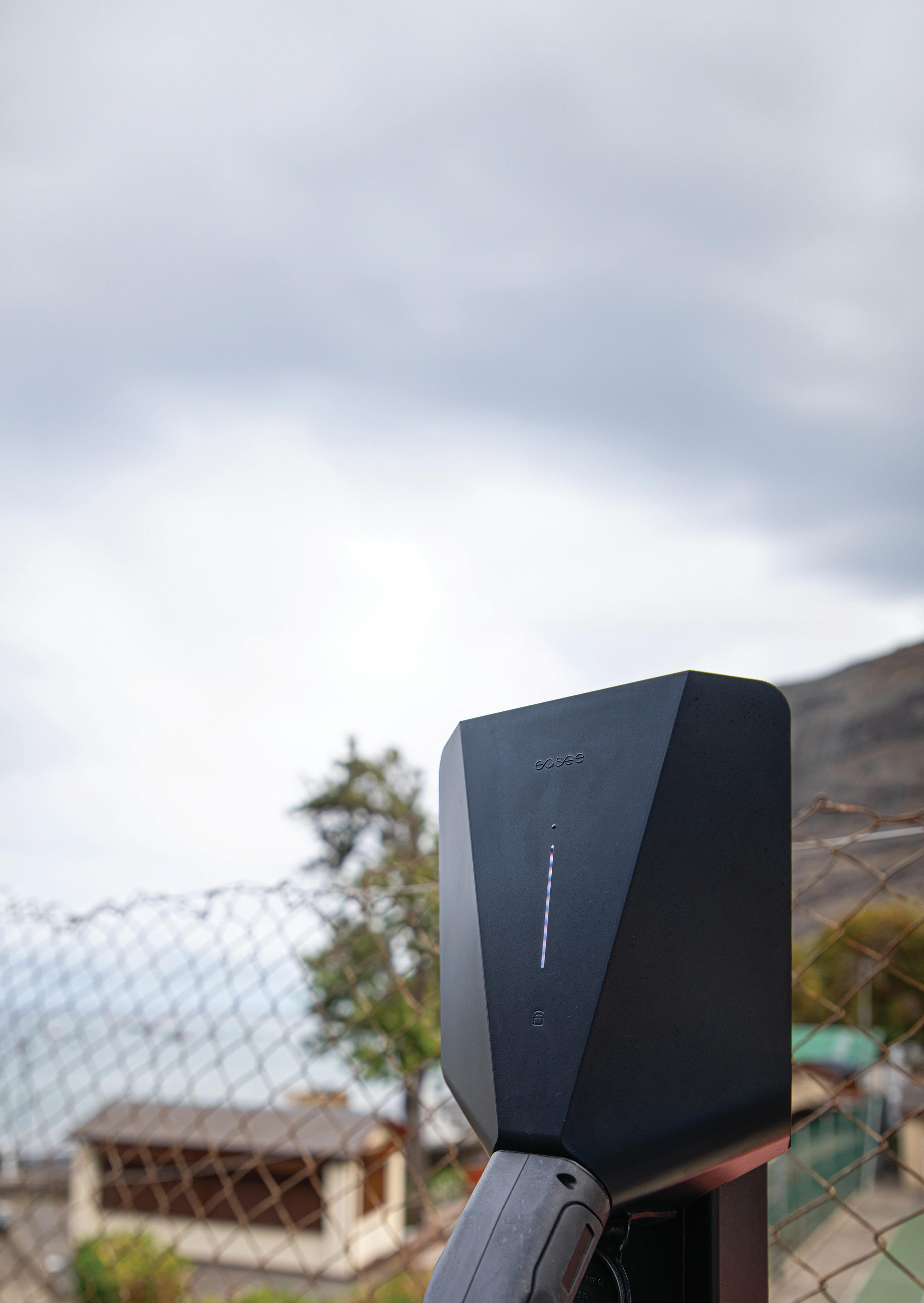
“It is now mass consumer adoption that is needed for EVs”
Technology is not a secondary component to nations’ climate strategies, but a core mechanism through which meaningful and scalable change can be achieved. By fostering an ecosystem of innovation that supports technological development and maintains an optimistic mindset, the transportation sector can set an example for how technology can tackle the climate crisis. Moving forward, the key will be to celebrate technological breakthroughs, support risk-taking and experimental approaches and a view that climate challenge as an opportunity for innovation.


In a world where technology is leading transformation, it’s fair to say the vehicle rental industry is far from being the most ‘tech savvy’. There is no longer a question of whether the area should modernise and embrace technology, but rather how fast it can adapt and bring itself into present times. Nexus is leading the way in the vehicle and plant hire industry with innovative technology, leveraging its Iris platform to make unpredictability feel like business-as-usual.
Iris is the UK’s leading B2B vehicle and plant hire platform, providing realtime, automation-driven access to more vehicles and plant hire than anyone else. Users can see all rental solutions in one place, streamline tasks and resolve issues, and view usage trends to improve and maximise efficiencies. The uninterrupted service also allows for constant availability across a secure and stable platform.
When rental operations run smoothly, businesses can scale faster and respond to challenges without delay. Alongside customer service and unexpected rental necessities, vehicle downtime is one of the largest challenges faced in the fleet sector. When a
Improve fleet insights through more accurate data and the technological help available. By Gerry McCaig, chief operating officer, Nexus Rental
vehicle is off the road, it is costing the business money. Through Iris, users can submit a photo of the damage, which is then quickly analysed and immediately shows the issue so that the claim can be processed. We can then liaise with suppliers to either dispute the claim on our client’s behalf or negotiate the best outcome for our clients and provide them a pack via our team of specialists. In 2024 alone, we were able to save our clients over £4m by dealing with claims following the above process.
A great example of the benefit of technology in vehicle rental, is the use of Iris in a partnership between Nexus and Persimmon Homes. The client approached the Nexus team looking to optimise its fleet of over 900 vehicles and tackling the nationwide shortage of commercial vehicles. Persimmon was facing delays in vehicle delivery, maintenance issues and difficulty coordinating 36 regional sites, but Nexus stepped in, providing total visibility, easy reporting and cost control through Iris.
Another example is with Polygon UK & Ireland, a global leader in the property damage restoration sector, delivering 24-hour service through 5,700+ employees across 16 countries. The
client needed a rental partner that was capable of quickly responding to fluctuating demands, unplanned service and maintenance and the ability to access commercial vehicles in remote areas. With access to real-time data through Iris, Polygon streamlined suppliers and ensured any maintenance or damage claims were dealt with efficiently.
Nexus leads the charge in normalising the unexpected – and the expected. It is not about trying to flatten the peaks and troughs that come hand in hand with business; it is about making those fluctuations business-as-usual. With Iris, each customer is treated as an individual, as the needs of a UK-wide corporation will be much different to those of a business with a fleet of 10 vehicles. The needs are addressed by a dedicated contact, and the technology is then built around those requirements.
AI and technology do not replace the need for humans, but their ability to streamline data and tasks mean technology can focus on the time-heavy, mundane processing tasks and free up the people to create a better overall experience for customers, addressing the strategic insight and analysis needed to drive a business forward.

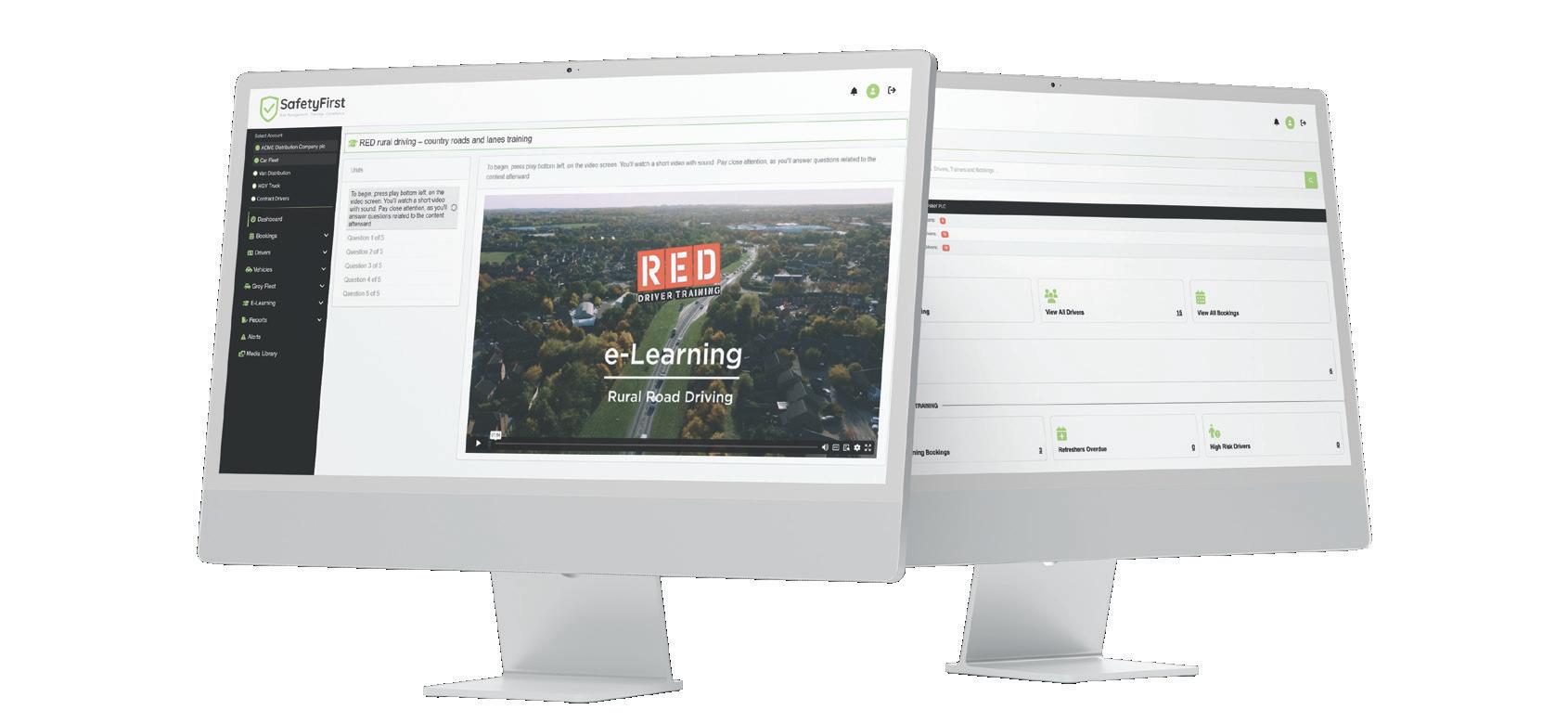


Running a fleet today is clearly a far more complex operation than it once was – and is now shaped by a variety of factors. These issues include: government legislation; increasingly stringent environmental targets; matching vehicles to operational needs; maximising vehicle availability; and harnessing the power of data.
As leasing companies continue to struggle with falling residual values, the financial impact on the market is significant. Just when we need more people to adopt electric vehicles (EVs), the costs are rising. However, manufacturers, seeking to meet legislative targets, are offering bigger discounts to keep prices manageable. While these discounts can depress residual values, there is a ‘sweet spot’ to be had – a balance where discounts and residuals align optimally.
The current funding landscape is dynamic and highly competitive, meaning fleet managers who can tap into a wide range of market options, rather than being beholden to one or two suppliers to fund their vehicles, will benefit. At the same time, businesses are under growing pressure to reduce their carbon footprint to meet ESG (Environmental, Social and Governance) goals.
Fleet managers are facing the toughest conditions in 30 years, as a range of challenges converge to threaten the sector, according to Doug Hyett, commercial director, Fleet Operations
Transportation is often the first area to face scrutiny. While many organisations aspire to lead with EVs, the transition will initially involve some costs. However, under certain conditions, it can be more cost-effective than maintaining a fleet of internal combustion vehicles.
As a result, some companies may conclude that they cannot afford the switch, leading them to consider scrapping their company car fleets in favour of offering employees a cash alternative, which in turn increases the number of grey fleet vehicles. This is clearly not an available option for light commercial vehicle (LCV) fleets. With LCVs, the transition to electric poses several challenges primarily, ensuring the vans match with operational needs and range reduces when laden, which – combined with limited access to charging –reduces their viability.
The role of the fleet management partner has undergone a profound shift. Today’s fleet managers face an intellectual and operational challenge far more complex than the relatively simple conditions of the 1990s. It’s no longer just about cost, convenience and operational efficiency. The role has expanded to include providing

strategic consultancy to guide companies through the complexities of today’s fleet market. It’s about offering expert business guidance, best practices and navigating the uncertainty of an ever-evolving sector.
With the looming increase in National Insurance contributions set for April 2025, along with ongoing pressure to raise wages, many organisations may face difficult decisions, including potential job cuts – possibly even affecting fleet managers or those responsible for fleet management within the company. While some companies may view fleet managers as an overhead luxury that they could do without, their true value to a business is too often underestimated. They fulfil a vital role in ensuring the smooth and efficient running of a fleet, enabling an organisation to concentrate on its core profitable business activities, without having to divert resources from other departments.
Never has the need for the services of a fleet management partner been greater – companies can benefit from their expertise and relieve themselves of a major administrative headache and free up their time to concentrate on their core business activities.
“Today’s fleet managers face an intellectual and operational challenge far more complex than the relatively simple conditions of the 1990s”

As vehicle operating costs increase, compliance regulations tighten and the shift to zero-emission fuels gathers pace, fleet operators are under increasing pressure. Jaama is seeing a surge in fleets turning to software to navigate these challenges, with the focus being on improving efficiency through streamlined data management.
Fleets are struggling to balance multiple priorities: compliance visibility, managing total cost of ownership, sticking to tight budgets, and meeting net zero targets. Jaama’s Key2 fleet management system addresses these challenges by centralising all fleet and asset management needs, while automating key tasks such as defect capture and triage, pool vehicle bookings, incident reporting, and driver licence and grey fleet checks.
Data collection supports compliance
The pressure to maintain compliance is relentless. Whether it’s ensuring grey fleet drivers meet duty of care obligations, or staying on top of vehicle maintenance for DVSA inspections, fleet managers face a constant battle to meet regulatory demands. Key2 helps by creating a comprehensive audit trail of vehicle events, making it easier for fleet managers to track whether tasks such as
Companies are relying on asset management software to efficiently collect and curate fleet data, says Mark Francis, chief product officer, Jaama
servicing and inspections are completed on time. Automated data ingestion ensures consistent, accurate records across the board.
With vehicle downtime becoming an ever-larger concern, fleets are increasingly focused on preventative maintenance to avoid costly breakdowns. By using Key2 to manage servicing schedules, MOTs and inspections, fleets can keep vehicles on the road longer, reducing vehicle offroad (VOR) time and minimising disruption to operations.
Key2 makes best use of all the available data generated across the fleet with APIs pulling in data from multiple sources to one centralised dashboard available in real time with trend analysis reporting. Fleet management apps are becoming commonplace to help drivers record their daily inspection data rather than writing on pieces of scrap paper. This trend supports the likes of the DVSA, which want commercial vehicle drivers to perform daily checks before and after their deliveries have been undertaken. This datadriven approach helps fleets avoid costly mistakes and make smarter, more informed decisions.
It is more efficient for a driver to upload their information onto a phone or tablet-based app as it provides imme-

diate transparency of a fleet’s daily roadworthiness. If a vehicle shows early signs of a problem, a part can be ordered and it can be booked into a garage ahead of a problem causing a breakdown. Jaama’s MyVehicle App does just that. Rather than relying on paper-based forms, drivers can record their inspection data digitally, ensuring that any roadworthiness issues are flagged immediately. If a problem is detected, repairs can be scheduled before a breakdown occurs, minimising downtime and keeping operations running smoothly.
Technology is transforming how fleet management works, offering seamless integration between fleet operators, maintenance providers and service partners. An end-to-end system such as Key2 enables smooth booking, authorisation, invoicing and auditing of maintenance work, while storing all documentation electronically for easy access.
“Companies from multiple sectors are understanding the power of digitising their fleet, not just from improving operating efficiency, but also helping them adhere to their duty of care obligations,” says Andrew Holgate, Jaama’s CEO. “Spreadsheets are finally becoming more of a rarity as systems such as Key2 reduce the burden of fleet management without increasing the headcount.”
Fleet operators today stand at a juncture. The rapid pace of rising costs, sustainability pressures and vehicle electrification presents significant challenges. Suffice to say, traditional management methods are becoming redundant.
Success today demands a new playbook - one built on digital transformation, data-driven insights and a commitment to sustainable operations. The onus is now on fleet operators to adapt and navigate these challenges.
Fleet data now offers unprecedented insights into business operations, generating vast amounts of valuable information - from vehicle health and driver behaviour to fuel consumption. This potential however, often lies untapped.
Fragmented systems and manual processes hinder the ability to translate raw information into actions, leading to missed opportunities and operational limitations.
Recognising this, Prolius has developed a solution - one that centralises data, integrates with existing platforms and proactively identifies inefficiencies. For when used effectively, data provides an invaluable resource that drives improved performance and cost savings.
One pertinent example is the risk fuel fraudulency poses to business operations. With fuel prices remaining high and volatile, cost control is key.
A recent customer-led feature request resulted in Prolius leveraging telematic capabilities to detect fuel fraud within a large enterprise’s fleet by cross-referencing fuel card transactions with vehicle usage data. This uncovered significant discrepancies, enabling corrective measures that mitigated further losses and optimised resource allocation.
This is merely one instance that emphasises the power of data-driven fleets, where management is equipped with greater visibility, leading to tighter controls and cost savings. Yet the value of these data insights extends beyond monetary value - it also plays a crucial role in driving sustainability initiatives.
The pressure to reduce fleet emissions has never been greater. Stricter regulations, such as Euro 7 and Clean Air Zones, require companies to reduce their carbon footprint whilst maintaining operational efficiency.
Prolius has helped companies achieve up to 10% fuel economy improvements through data-driven strategies, including improved driver behaviour, route optimisation and real-time performance monitoring. The platform’s data enables CO2 emission comparisons, identifies opportunities for efficient driving, reduces idling and fuel waste ergo, helping companies meet environmental targets profitably.
Beyond optimising driving behaviour, fleet operators are exploring long-term emissions solutions, most notably the transition to electric vehicles (EVs).
The transition to EVs presents both opportunities and challenges. While EVs promise lower emissions and reduced fuel costs, companies must contend with high upfront costs, uncertain resale values and inadequate charging infrastructure.
Data-driven decision-making is crucial for navigating this transition. Understanding total cost of ownership, identifying ideal EV routes and monitoring charging patterns are key. Data insights, like that provided through the Prolius platform, enables businesses to assess their transition to EV by benchmarking against similar fleets. Companies are empowered to make more informed strategic decisions surrounding electrification adoption plans.
Solving today’s fleet management challenges requires a unified, intelligent approach. As the industry evolves, those who embrace innovation will lead the way.
The future of fleet management isn’t just about managing vehicles, it’s about using smarter, faster and better technology.


Fleet decision-makers charged with selecting a fleet provider should ensure their supplier knows their business inside out and back to front, says Samantha Roff, managing director at Venson Automotive Solutions
s a vehicle fleet grows, partnering with a fleet management company becomes an obvious step. Businesses benefit from a fleet management provider’s infrastructure and resources and these elements all add value and improve fleet productiveness. Undoubtedly, all this greatly aids the day-to-day operations of a growing fleet. One thing that trumps these services, however, when considering a new fleet provider is how well they get to know their prospective customer’s business.
A fundamental priority for fleets, both small and large, will always be controlling costs and demonstrating value for money – after all, fleet professionals must justify fleet spend at senior management level. Effective cost control, however, is impossible without a fleet management provider really getting under the skin of their customer’s company. Understanding what’s happening in their business and industry is the only sure-fire way to help them achieve their financial objectives. It allows fleet providers to offer
relevant and timely advice, enabling them to future-proof a customer’s fleet, as well as proactively manage their dayto-day operational challenges.
A fleet provider can only truly get to know every aspect of a business if it is the sole fleet management provider. A sole supply contract helps ensure continuity and consistency of service delivery. In contrast, a fleet operator managing multiple providers faces increased administrative time and potential challenges managing driver issues, and the day-today operations of the fleet.
Understanding a customer’s business is critical in transitioning to cleaner, greener vehicles too. Without in-depth company knowledge a fleet provider cannot be clear on the operational requirements of each vehicle, the wholelife cost, lead times and tax implications for the employee and employer. Only through knowing operational requirements can a fleet provider really decide

“Keeping communication simple between customer and fleet provider is also fundamental for effective fleet management”
whether an ICE, EV or hybrid is best suited to a fleet. Of course, there is no “one size fits all” approach – the key is to identify which fleet vehicles lend themselves to what vehicle technology.
Indeed, when transitioning to new vehicle technologies, working with a fleet provider that comprehends an organisation’s cost pressures can open doors.
Hand-in-hand with getting to know a customer is getting to know the service they need and expect. Over the years, entrants to the market have tried to position salary sacrifice as something overly complicated or made it appear to be a new product, but salary sacrifice is contract hire. It’s the employer-driver relationship and contractual documentation that is different.
A company car is governed by employment contract and company car policy whereas salary sacrifice is governed by additional documentation. Great fleet providers have ready-to-issue free salary sacrifice documentation that employers can use when implementing the product. Whether a driver has a company car or a salary sacrifice vehicle, it does not matter, the services required are all identical.
Keeping communication simple between customer and fleet provider is also fundamental for effective fleet management. Customer service is about getting through to someone in a reasonable time and speaking to someone willing to own a problem and get a resolution as quickly as possible. That’s why good fleet providers support their customers with a specific account team that deals directly with the fleet manager or the person responsible for overseeing fleet drivers and the drivers themselves.

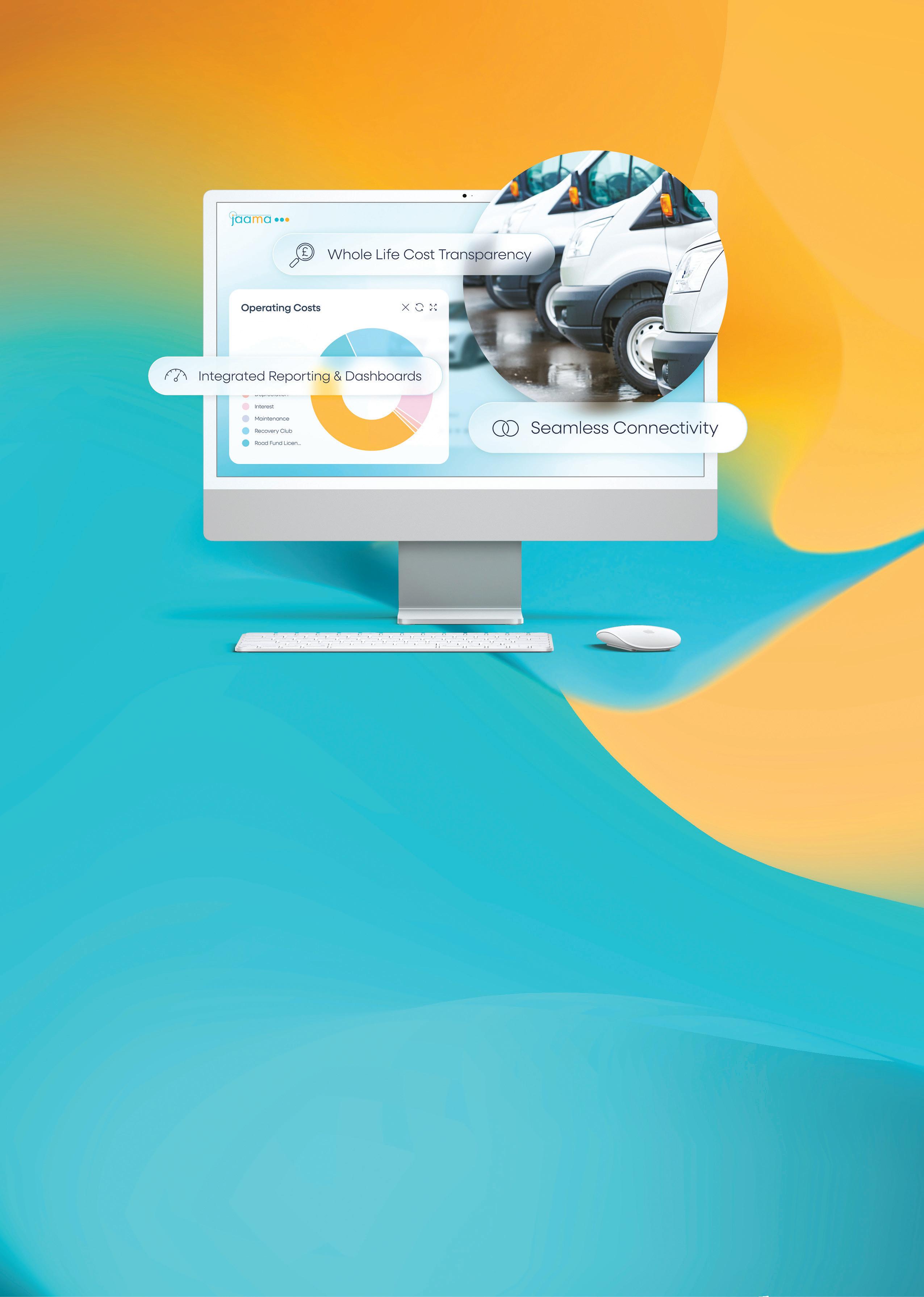

DWhy improving the skills and abilities of your drivers can be a very worthwhile investment.
By Colin Paterson, head of marketing, RED
riving for work, whether commuting, making deliveries or attending meetings, is among the most hazardous activities we perform – yet it’s often neglected. UK stats indicate there are still around 1,700 road deaths a year and some 30,000 serious injuries, so there’s more to be done in 2025 and beyond to reduce these stats and their associated –and significant – costs.
Where better to start trying to do something about those figures than to protect and support your business? Surely that’s much better than doing nothing and leaving things to chance. RED offers a range of services to ensure that driver safety and compliance remain priorities for businesses, such as regular refresher checks, training and licence verification.
New employees are a particular focus because it’s the best time to influence driving behaviours. It’s crucial for businesses to clearly communicate their expectations regarding driving skills and attitude. Knowing what vehicles employees will drive, where they will
drive them and when helps in creating a formal training plan for each driver, emphasising safety for both employees and other road users.
When incidents inevitably occur, targeted training interventions are available for drivers identified as high-risk. Specialist drivers can get specialist training (and should!). All drivers must be reminded regularly that safety comes first. The moral implications of road traffic accidents are significant, affecting victims, families and friends. Additionally, there are financial and legal reasons to adopt a proactive driver risk approach.
RED Corporate Driver Training has developed ‘SafetyFirst’, an online control and support system. This cloud-based platform helps organisations manage their drivers effectively and ensure compliance. You can find out more about the benefits of the system at the Great British Fleet Event on 8 May 2025.
The system can be accessed by fleet

controllers, administrators and drivers to ensure accurate driver profiles, periodic licence checks and timely e-learning and on-road training interventions. Prevention is better than cure – and strong support from top management is essential.
RED supports clients through various levels and phases. Ideally, this involves a regular driving assessment programme with tailored e-learning modules covering areas such as parking, long-distance driving, fatigue management, speed control, urban and rural driving and much more.
Different people learn in different ways and have varying work pressures, so the training programme should be pragmatic and effective. In addition to online assessments and education, RED offers workshops, webinars and practical on-road training. This includes advanced driving techniques, skid control, HGV licence acquisition and trailer towing training at the RED Corporate Driver Training Centre at Donington Park in the East Midlands. We also provide 4x4 off-road training for specific work needs at RED Donington.
RED’s training embraces new technologies, delivered by knowledgeable trainers. Driver assistance technology is becoming more common, but many businesses don’t realise their staff may not fully understand them. We offer ADAS (automatic driver assistance systems) content to explain how to maximise the safety benefits of features such as automatic emergency braking, intelligent speed assistance and lane assist.
A comprehensive road and driver risk programme is key. Share policies widely and enthusiastically within the business and offer a blended range of training content in different formats to appeal to all drivers, even those who are cynical, stubborn or time-poor. Choosing the right partner is crucial. Work with a trusted partner who has a continuous commitment to road and driver safety as a core mission and offers flexibility and a genuine understanding of your needs.
As the world begins to transition towards Alternative Fuelled Vehicles (AFV’s) such as hybrid and electric and move away from conventional Internal Combustion Engine (ICE) vehicles, it’s understood that there will be hesitancy, perhaps resistance to change and financial concerns over the emerging and fast-moving technology says Simon Staton, Client Management Director, Venson. Our bespoke approach enables businesses to have a partner working hand in hand with them as they look to transition towards a greener fleet.
This can be starting simply, moving from ICE to hybrid and then full Battery EV (BEV) or going straight to BEV or staying with hybrid. There is no one size fits all approach, the key is to identify which fleet vehicles lend themselves to what technology. This will in part be driven by the operational requirements of the vehicle. And of course, cost is a key consideration for all organisations, especially with fleet spend typically being the second highest after staff costs.
So where to start with the transition to a greener fleet? Here are just some examples of how businesses we’ve worked with have started their journey.
A social housing provider wanted to transition to a greener and more sustainable fleet, but had concerns over costs, charging infrastructure, and vehicle range. Our initial approach was to work through each concern, starting with comparing Whole Life Costs of diesel and electric vehicles. The process debunked the myth that alternative fuelled vehicles are more costly to run and concluded overwhelmingly that Whole Life Cost savings of 15% could be made through the lease of an alternative fuelled vehicle. Introductions were made to an electric
charge point installer and maintainer, as well as arranging meetings with similar businesses who had already started their own electric journey. Through relationships with vehicle manufacturers, demonstration vehicles were secured so that the organisation could take the opportunity to get a real world understanding of how a change to a cleaner and more sustainable vehicle fleet would work in day-to-day operations.
Cost considerations as we know are key, but also is vehicle choice. A range of makes and models can sometimes be an integral element for fleet operators when defining their fleet policy. Venson completed an exercise with an organisation based in the north of England that focused on contract mileage and contract length. The analysis concluded that vehicles could be contracted over a longer term, reducing the vehicles Whole Life Cost by an average of 4 pence per mile. The usual vehicle selection was broadened which also led to identifying savings of more than £102,000 across a 5-year period for 37 vehicles.
Similarly looking at funding methods alongside the move to new technologies can also highlight benefits. Working with

a retail organisation Venson produced cost comparisons between an outright purchase procurement method and contract hire. The result, demonstrable Whole Life Cost savings that could be made with a transition to a hybrid, or full battery electric vehicles, with both the organisation and employees benefiting.
Those who have made the switch are seeing the benefits that come with greener motoring. Beyond enabling companies to meet their own sustainability goals, zero-emission vehicles can offer Whole Life Cost savings with lower running costs and reduced maintenance requirements.
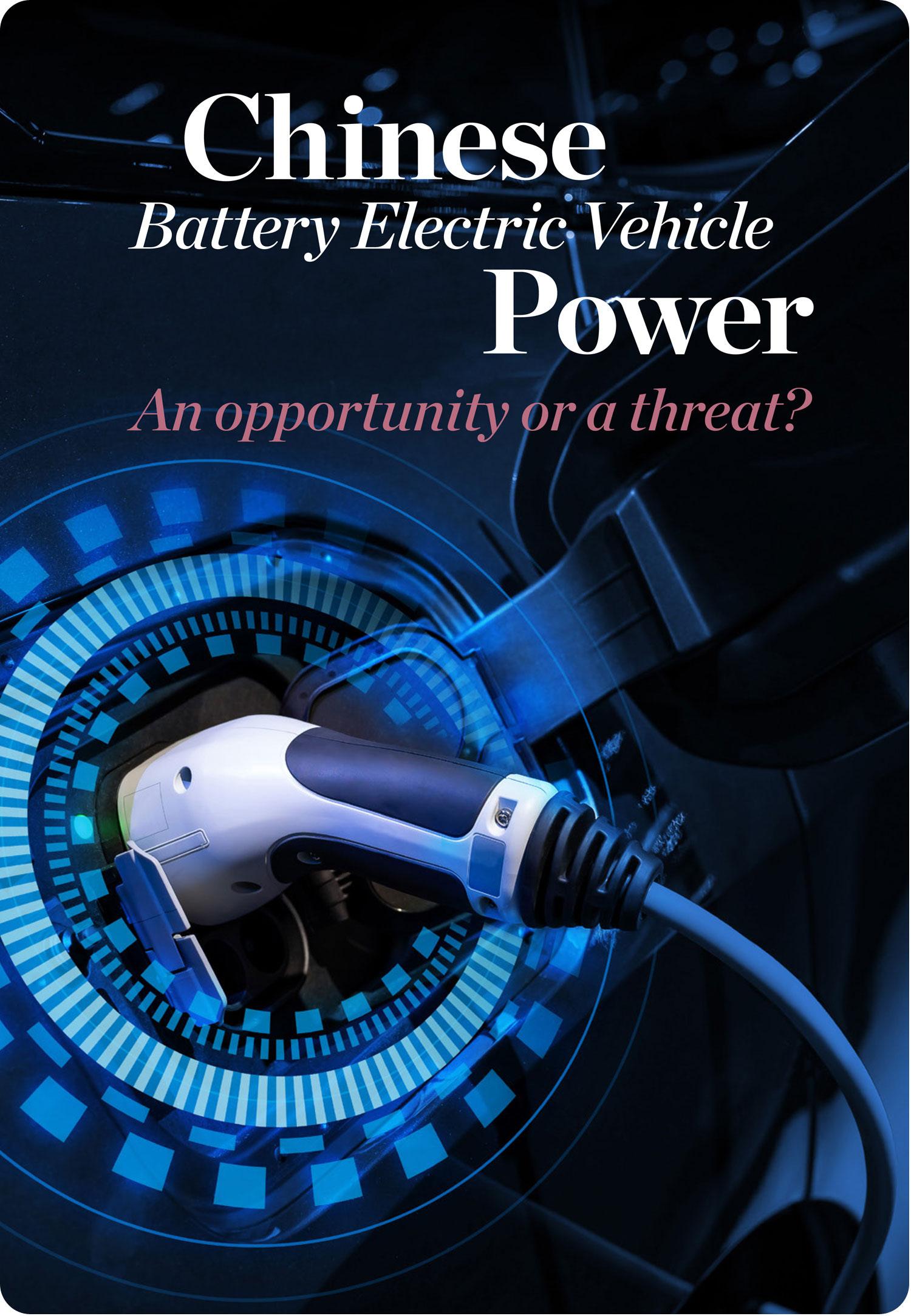
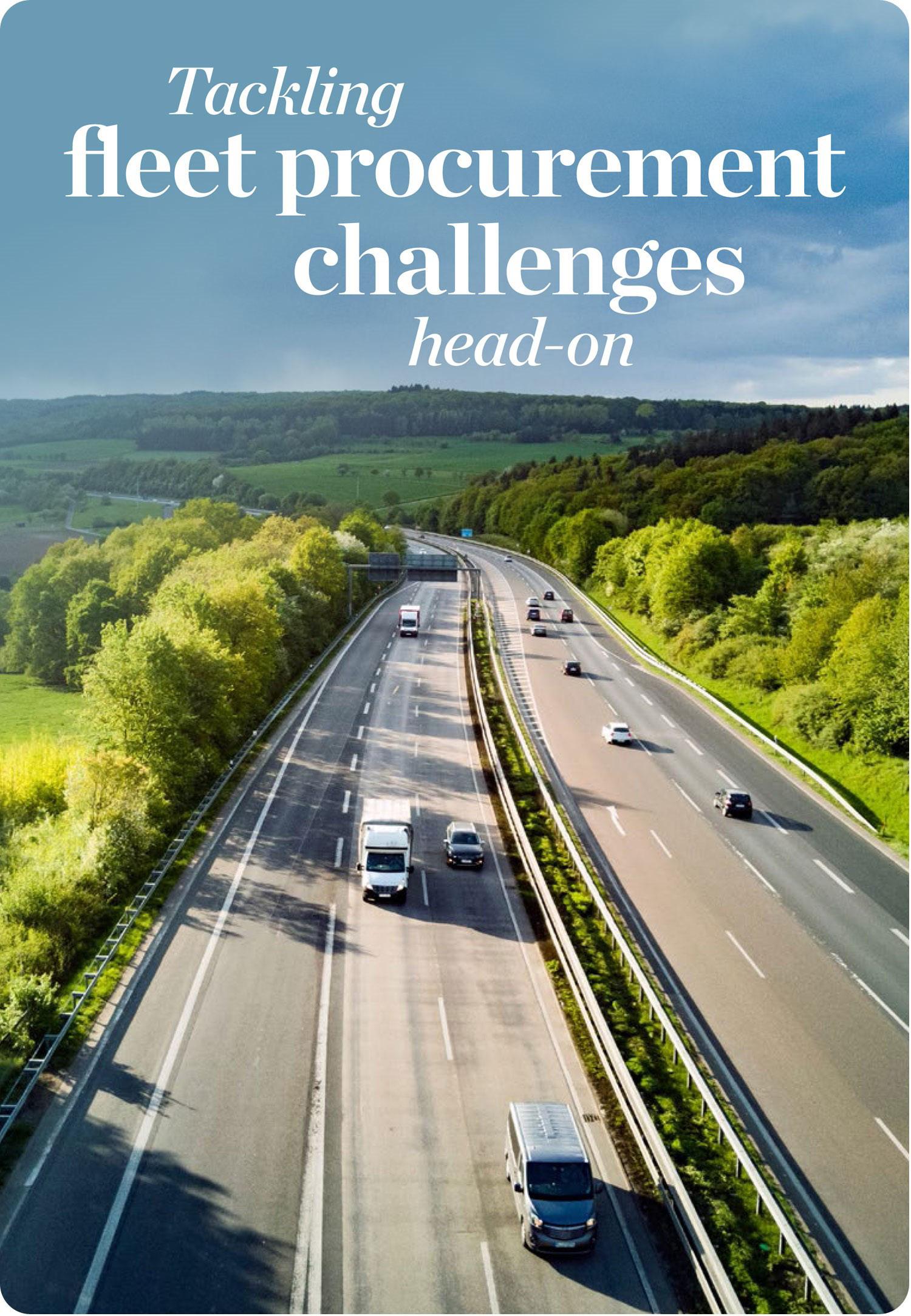
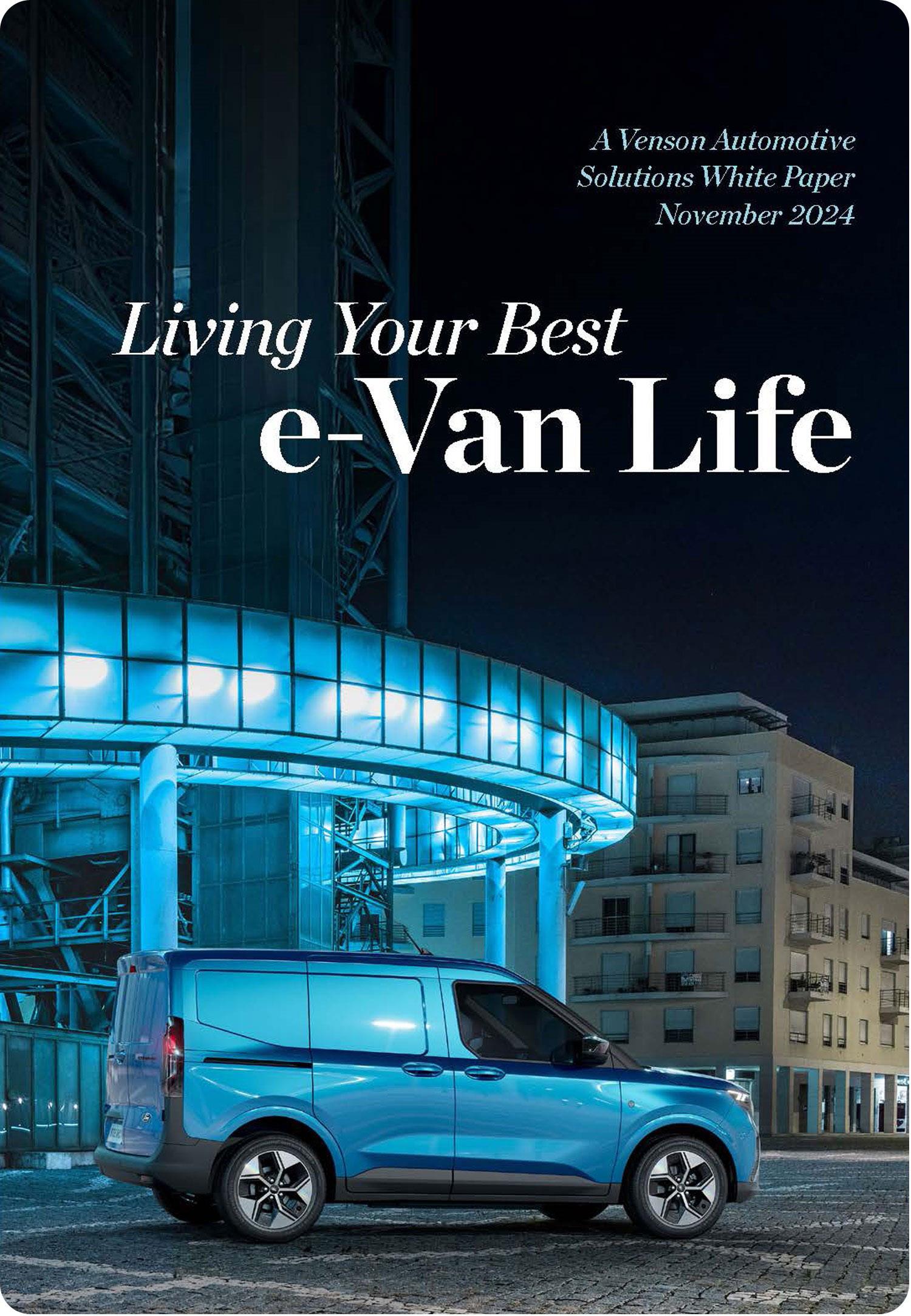
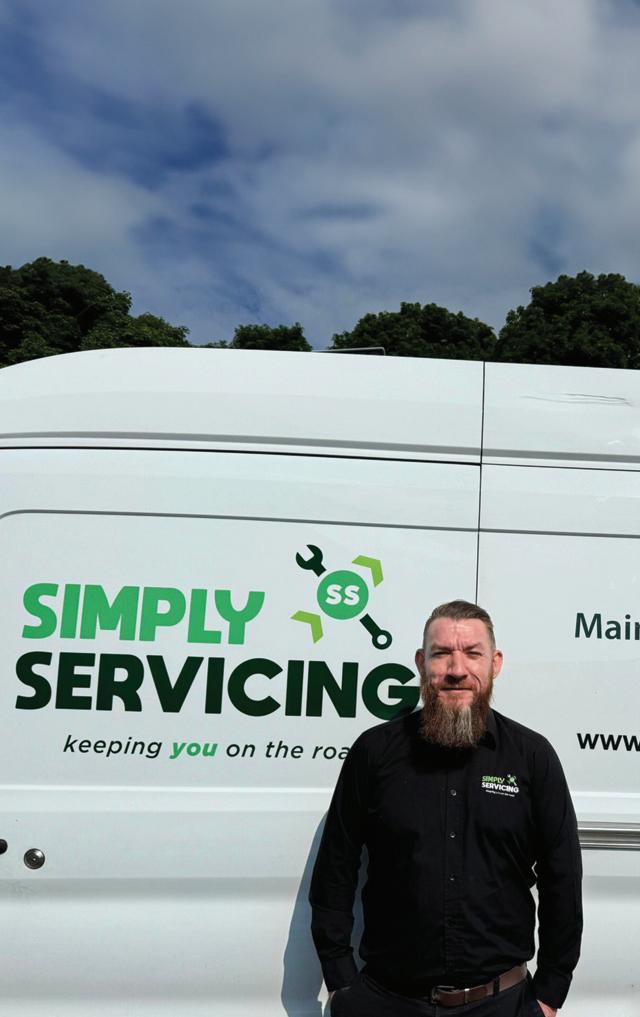
Every hour a vehicle spends off the road represents lost productivity, unproductive work hours – and mounting costs. That’s where Simply Servicing – a trailblazer in mobile fleet maintenance and repair – comes in. We aim to offer solutions that not only minimise downtime but maximise efficiency, as well as customer satisfaction.
Founded six years ago by myself, a seasoned mechanic with a deep understanding of the flaws in traditional fleet servicing, Simply Servicing has grown into a leader in the industry. Today, with a fleet of seven fully equipped L3 Ford Transit vans and a state-of-the-art workshop based in Aldershot, the company caters to some of the UK’s largest vehicle hire and lease companies, offering its services across the whole of the south of England.
At the core of our success is our commitment to putting clients and customers first. Recognising that traditional garages often reserve their best prices and customer service for the general public, I sought to bring that same level of care to companies and their drivers. And, with our rapid-response service, Simply Servicing guarantees a 24-hour turnaround on bookings, ensuring vehicles are back on the road as quickly as possible.
For fleet managers, we can book services through user-friendly systems that have been tailored to integrate with leading fleet management platforms. By eliminating the need for vehicles to travel to and from garages, Simply Servicing reduces transport costs while providing competitive rates.
How Simply Servicing is changing the game in the fast-paced world of fleet management.
By Tom Packard, managing director
Our mechanics complete a minimum of 10 jobs a day per van, thanks to a streamlined workflow and advanced tools. Their ability to perform most repairs and maintenance onsite means less disruption to clients’ operations. And, for more complex repairs, our state-of-the-art workshop is equipped to handle even the toughest challenges.
Simply Servicing’s success story is rooted in my ethos: “To breathe integrity and work to the highest standards.” This principle drives every aspect of their operations, from employing highly skilled mechanics to fostering long-term relationships with clients.
A flexible approach allows us to adapt to the unique needs of each client, whether it’s a single van for an independent business or an entire fleet for a national company. By leveraging innovative technology and a customer-first mindset, Simply Servicing aims to set a new benchmark for fleet maintenance.
The choice for fleet professionals if you’re looking to reduce downtime, improve operational efficiency – and ensure your fleet receives the highest standard of care – Simply Servicing is the partner you need.
Application appreciation
“We have been partnering with Simply Servicing for Enterprise fleet vehicle maintenance needs within the South East region and the experience has been nothing short of exceptional. The team consistently goes above and beyond to ensure our vehicles are in top condition, minimising downtime and keeping our operations running smoothly.
“What stands out the most is the attention to detail and proactive approach. They don’t just fix issues, they anticipate them, often catching potential problems before they become costly repairs. The communication is seamless and they are always transparent about what needs to be done and why.
“Thanks to Simply Servicing we have peace of mind knowing our fleet is in expert hands. Its commitment to quality and customer service is unparalleled, and we highly recommend it to any business needing reliable and professional vehicle maintenance.”
Asif Afzal, vehicle operations network supervisor, Enterprise
“Mechanics complete a minimum of 10 jobs a day per van”
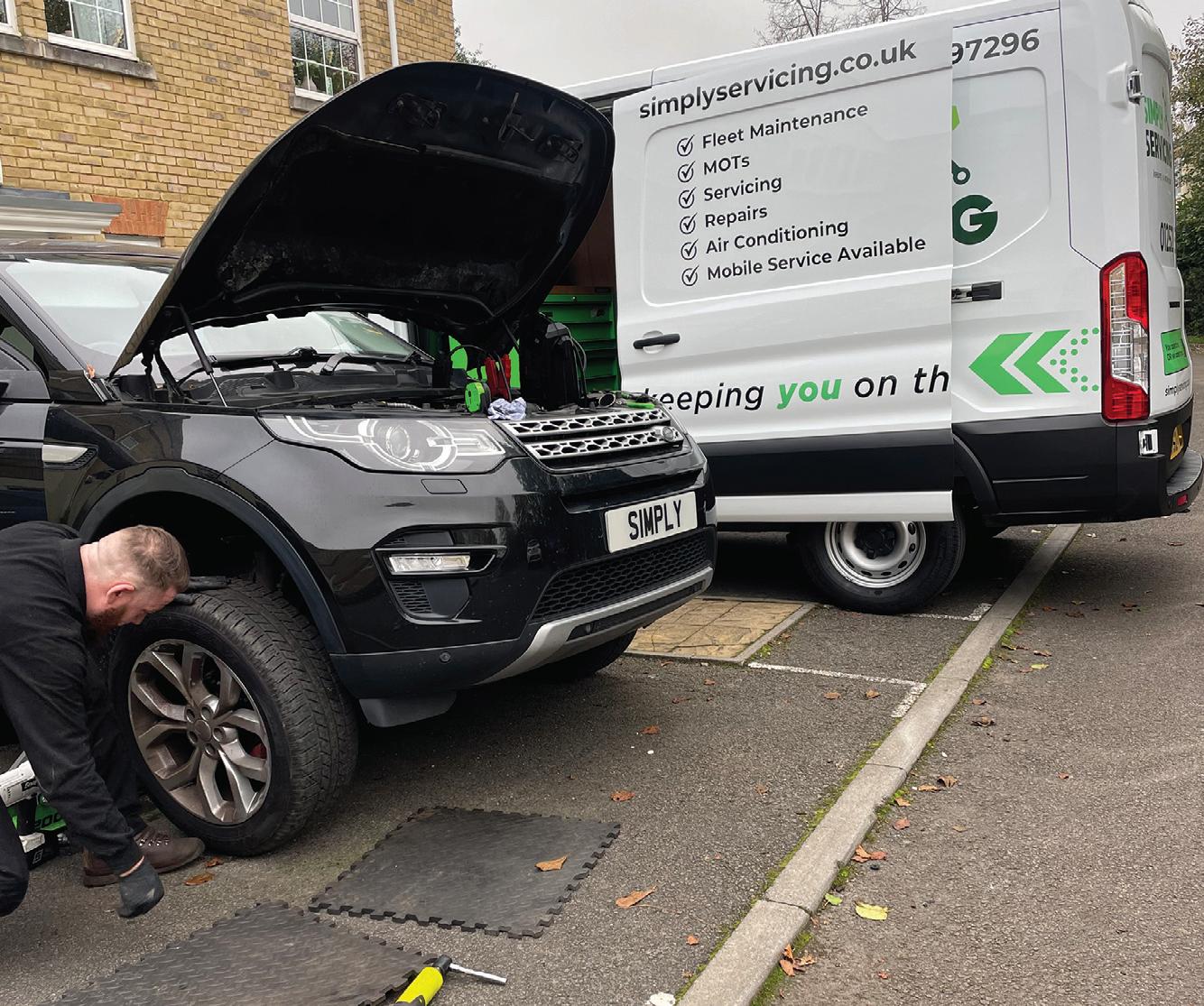

The Grosvenor Group is the UK’s largest privately-owned contract hire and fleet management specialist.
Established over 40 years ago, we’re one of the largest fleet sector companies to have resisted the temptation to adopt a process driven, call centre culture – instead offering organisations with vehicle fleets a level of attention and support that has resulted in CSI ratings that regularly sit between 98% and 100%.
Grosvenor Leasing will showcase how its salary sacrifice scheme, combined with specialist fleet management, can deliver a superb, risk-free offering to businesses and employees that saves up to 40% on an EV compared to a personal lease.
– STAND D7-D8 –

ABAX provides telematics solutions to help businesses manage their vehicles, tools, and equipment more efficiently. With real-time tracking, geofencing, and automated reporting, we enable businesses to maximise asset utilisation, reduce downtime, and streamline operations. Our solutions also offer instant alerts, automated mileage tracking, and sustainability insights to protect assets and simplify compliance. Trusted by over 40,000 customers managing more than 500,000 assets, ABAX delivers reliable, user-friendly tools to improve efficiency and reduce costs.
– STAND D2 –
SambaSafety is a recognised innovator and leading provider of cloud-based risk management solutions for over 15,000 organisations with automotive mobility exposure, including many on Fortune’s Global 500 list. Employers and insurers benefit from SambaSafety’s continuous monitoring, intuitive insights, risk reduction tools, and configurable pricing solutions. Through the collection, correlation, and analysis of telematics data sources, additional driver activities, and crash and claims data, our flexible, end-toend capabilities enable businesses and insurers to better evaluate and mitigate driving risk, accelerate product development, reduce crashes, and foster safer communities.
– STAND F3 –
Driiveme is the European leader in 100% digital driven automotive logistics, having completed over 700,000 vehicle movements for more than 5,000 companies across 9 different countries since 2012. Our platform gives clients instant access to collection and delivery checks and images, along with live tracking and detailed real time invoicing, fully managed end to end.
Driiveme will guarantee to collect any driven movement with more than 2 working days lead time, anywhere in the UK, and deliver in the shortest time frame possible. With a fulfillment rate of over 99% for movements of under 48 hours notice, Driiveme gives you the peace of mind that your movements will be done exactly when you need them.
– STAND D5 –
Geotab, the global leader in connected vehicle and asset solutions, leverages advanced data analytics and AI to enhance fleet performance, safety and sustainability while optimising costs. Backed by a team of industry-leading data scientists, engineers and AI experts, we serve over 50,000 customers, processing billions of data points hourly from more than 4 million vehicles. Data security and privacy are at the forefront of all we do — trusted by Fortune 500 organisations and some of the largest public sector fleets in the world. Geotab’s open platform and diverse Geotab Marketplace offers hundreds of fleetready third-party solutions.
– STAND F5 –

Kieron Davey, UK country manager, driiveme, explains how combining technology, automation and simplicity has resonated with partners within the fleet industry
Founded in 2012, driiveme has now established itself as Europe’s leading provider of driven transport and logistics solutions. Operating in seven countries across the continent the business has seen rapid growth in the UK market and 2025 is set for further expansion.
Reliability, confidence and trust
The challenges that all businesses face when needing to move a vehicle are all too common. Time, cost, communication and trust are all barriers faced by many within the automotive sector. The core values of the driiveme proposition, built around reliability, speed of service, technology and transparency, underpin the company’s success and are the reasons why so many of the industry’s major players are now using our services.
driiveme is a fulfilment-first business –many of our clients have turned to us because of continued unreliable service or because they have been let down by a current provider. We want our clients to be able to request a vehicle movement with the confidence that once it’s on our platform, the movement will be completed on time, every time. All our movements are also tracked via GPS so our clients can use the driiveme platform to track the progress of their movement in real time.
Speed and flexibility are essential driiveme guarantees movements with just 72 hours’ notice and we also offer express and premium service options for more urgent vehicle movements. Most fleet managers will have forward visibility of their movement requirements and can book their moves well in advance, but we understand that a good logistics solution needs to offer flexibility and be able to accommodate requests with a much shorter time frame.
The driiveme solution is completely digital, making vehicle movement requests quick and simple. It takes no longer than 30 seconds to request a move and automated email and text notifications are in place to update clients when a driver is allocated to a movement along with confirmations of times for collection and delivery. The days of making multiple phone calls and sending several emails to organise a vehicle movement are now simply replaced with a few clicks of a button.
A customer-centric team
Our partners often tell us that while automation and technology help to simplify the challenges of logistics solutions they still want to be able to pick up the phone and be able to talk directly with someone. Our team of dedicated account managers provide day-to-day support, along with providing valuebased data, insight and reporting to further enhance our client relationships.
Full UK coverage
Driver resource has played a huge factor in driiveme’s recent growth. With around 3,500 activated drivers, the company has ample resource to fulfil its guaranteed commitments. Recruitment, onboarding and continued training are core focuses for our driver liaison teams, ensuring clients are not only delighted with the
reliability of service but also the experience that they and their customers receive when a driiveme driver moves a vehicle. With over 10,000 reviews and customer testimonials received in 2024, driiveme has continually adapted its services and developed its technology to ensure an industry leading service proposition.
Driiveme and GBFE
We are delighted to be returning to the Great British Fleet Event this year. Connecting with our existing customers and speaking to new contacts in the fleet industry is incredibly important to our business and we will be exhibiting at stand B4. This year we are also looking forward to sponsoring the awards ceremony and recognising some of the great achievements across the fleet industry.
“Driver resource has been a huge factor in driiveme’s recent growth”










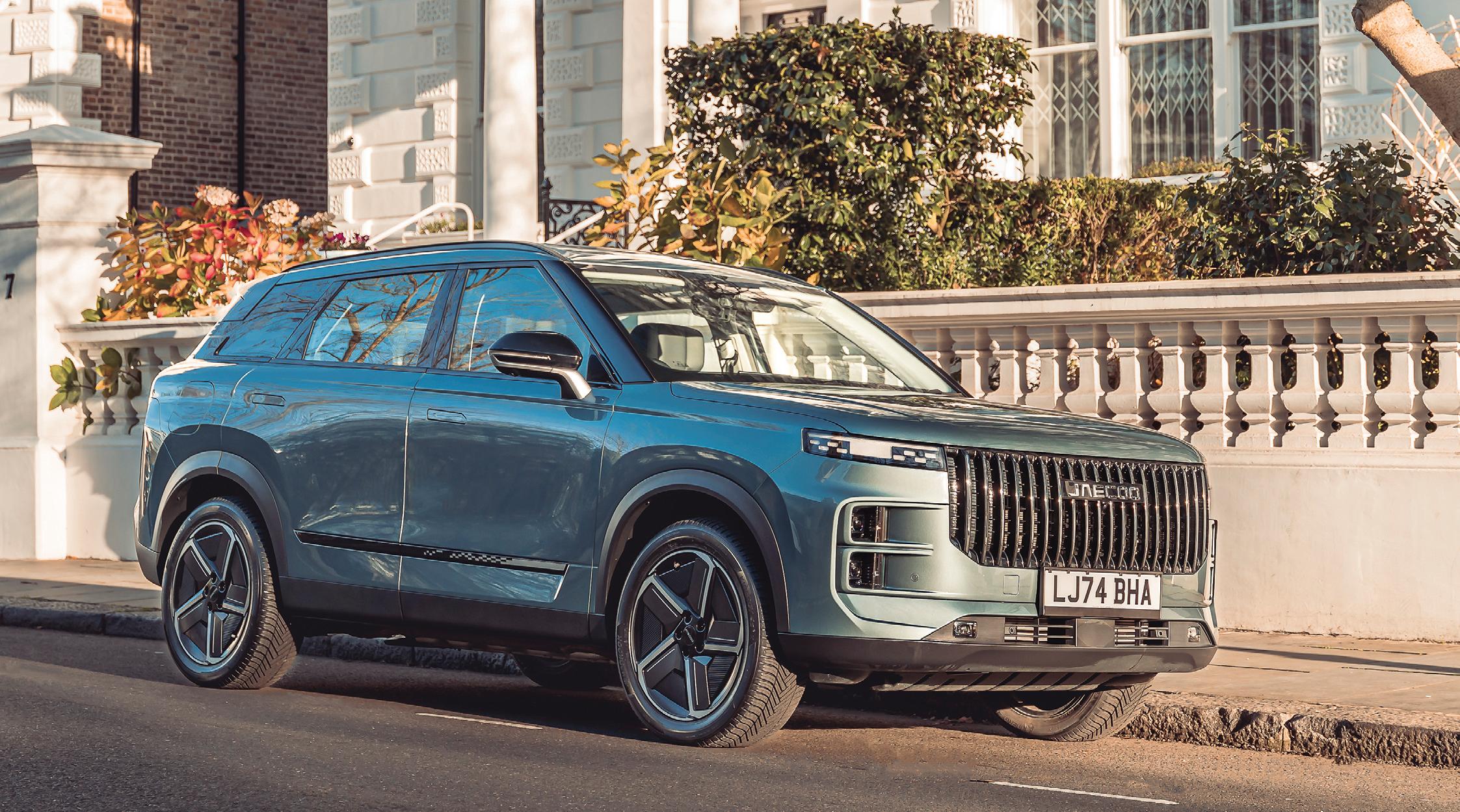
Comfort, luxury and off-road capabilities combine in an appealing value proposition. By John Challen
With the launch of the Omoda brand successfully navigated in 2024, the beginning of 2025 saw sister brand Jaecoo take centre stage. In the UK, the company is hoping to make a big impact with high-quality, value-for-money products that can legitimately compete with legacy brands, as well as other new arrivals on the market.
The first car for the UK from the Chinese brand is the Jaecoo 7, a mid-size SUV with the option of either a 142hp 1.6litre petrol engine (in front-wheel-drive and all-wheel-drive) or Jaecoo’s take on plug-in hybrids, the Super Hybrid System (FWD only). The latter features a 1.5-litre petrol engine, a hybrid transmission and an 18.3kWh battery pack. Combined, the total output of the Jaecoo 7 SHS is 204hp and 310Nm of torque. That’s enough to propel the car from zero to 62mph in 8.5 seconds and onto 108mph. Jaecoo says the SHS is superior to a standard plug-in system because it never lets the battery get to zero and offers an impressive 745mile total range.
We’ll concentrate on the SHS, because that’s most likely to be the volume seller, especially with fleets, in the absence of a pure electric model. There are two grades – Deluxe and Luxury – with the SHS only
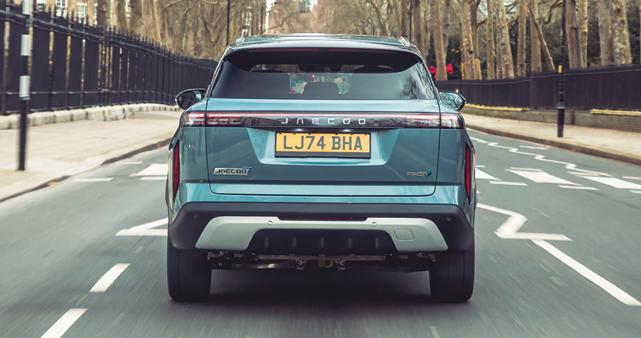
available with the latter. Standard features include a 14-8-inch central screen, a Sony 8-speaker audio system, heated seats all round, heated steering wheel and a 540° parking camera system. Inside, the Jaecoo 7 is a welcoming, comfortable place to be, with plenty of space for all passengers. A vast, 1.1m-long panoramic
“A vast, 1.1m-long panoramic sunroof with opening front section keeps the space light and airy”
sunroof with opening front section keeps the space light and airy, while doubleglazed windows ensure exterior noise is kept to a minimum.
Away from the luxury items, but staying with technology, there are 16 ADAS technologies on board. Meanwhile, the Jaecoo 7 features a high-strength steel cage design for improved structural rigidity and crash protection. The 10strong airbag system features extended pressure retention for an extra layer of protection where airbag pressure is maintained for up to six seconds.
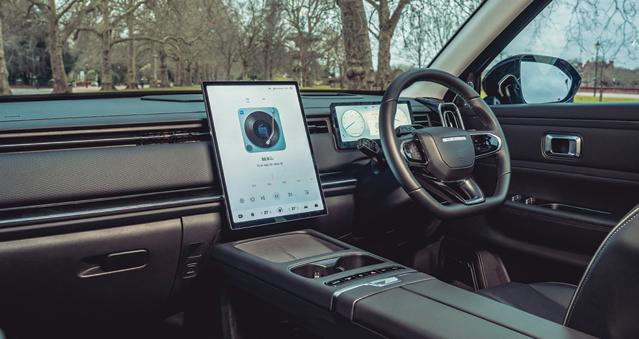
The Jaecoo 7 was developed for European roads at the company's R&D facility in Frankfurt Germany. The result is a ride that is comfortable, refined and quiet on the move, thanks largely to those high-quality windows. In terms of handling, the Jaecoo 7 would never claim to be a driver’s car, but it’s clearly capable, with steering that is light, but with enough weight to feel confident. The Jaecoo 7 SHS claims a theoretical electric-only range of 56 miles and the powertrain switches seamlessly and effortlessly between it and the ICE.
But the real USP about this car is the value it represents and what drivers will get for the money. The spec – even in the base version – is generous and by the time you get to Luxury, there’s pretty much everything you would need. Add in a diesel-like driving range and it makes a compelling case for company car drivers.
WHAT IS IT? Plug-in Hybrid C-SUV
HOW MUCH? From £35,065
ECONOMY? 403mpg EMISSIONS? 23g/km
Key fleet model SHS
Value; quality interior; striking design
No EV option; driving experience
7-word summary Value for money and a comfortable cabin
Also consider Kia Sportage / MG HS / Nissan Qashqai




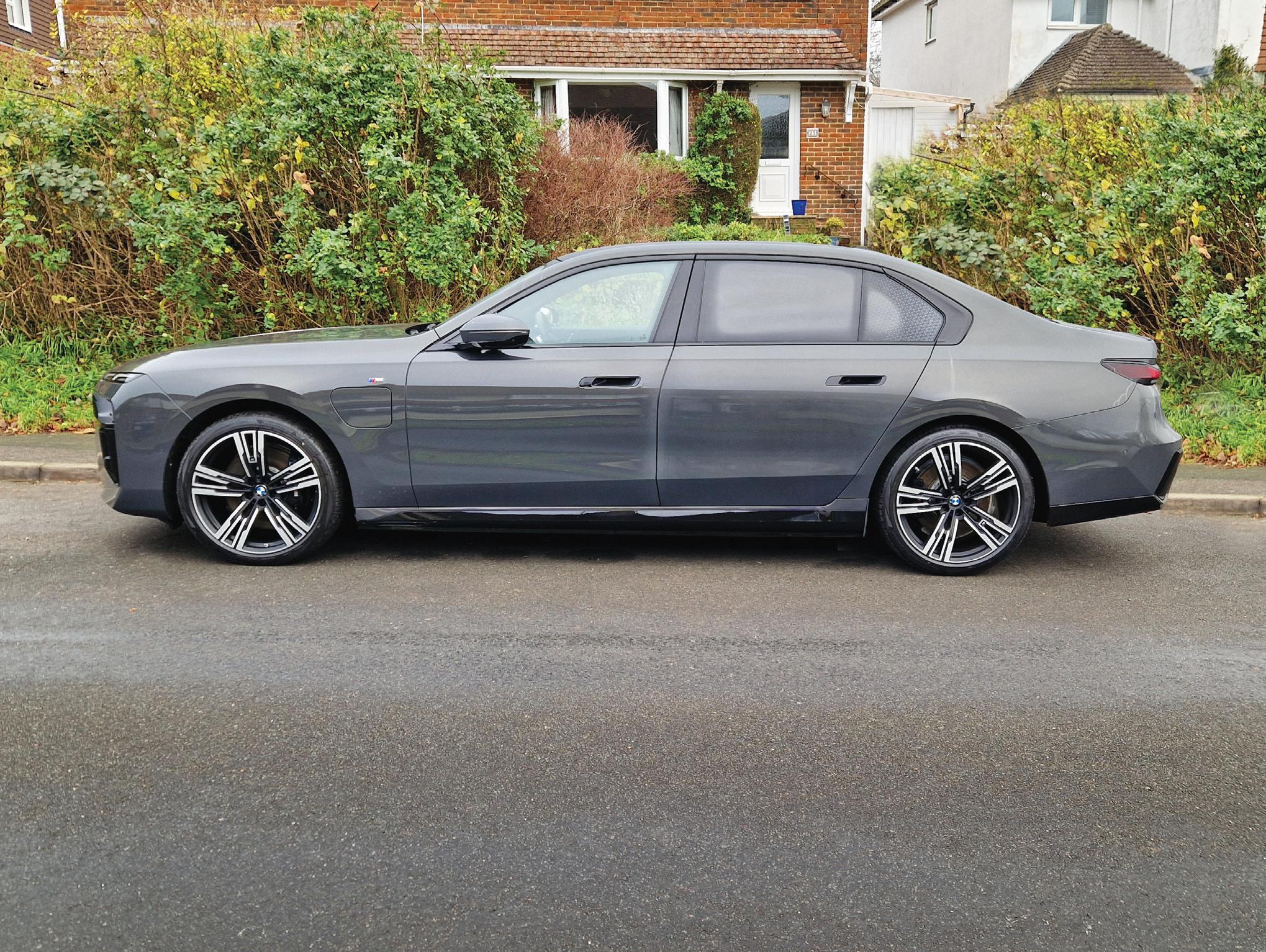
Plug-in hybrid technology meets ultimate driving (or being driven in) machine. By John Challen
MONDAY
The familiar trope that ‘cars are getting bigger all the time’ felt very real as the BMW 750e arrived at Challen Towers. For context, the flagship Bavarian barge is long – very long (5.39m-long, in fact). But the vast plugin hybrid has boat-loads of appeal, as well as technology, comfort and gadgets onboard, and it wasn’t long before we got to stretch its legs with a run out into the countryside. On first impressions, it’s very capable.
TUESDAY
The hybrid powertrain in the 750e provides 483hp and 700Nm of torque – enabling the car to sprint from zero to 62mph in 4.8 seconds. In theory, the electriconly driving range maxes out at 48 miles, but we struggled to attain anything above 40 after a full charge. That’s still plenty of miles, though – and the hybrid system switching between the electric motors and the 3.0-litre petrol engine is very efficient and effective. Seamless transitions between the two and near-silent operation, as you might expect in such a vehicle.
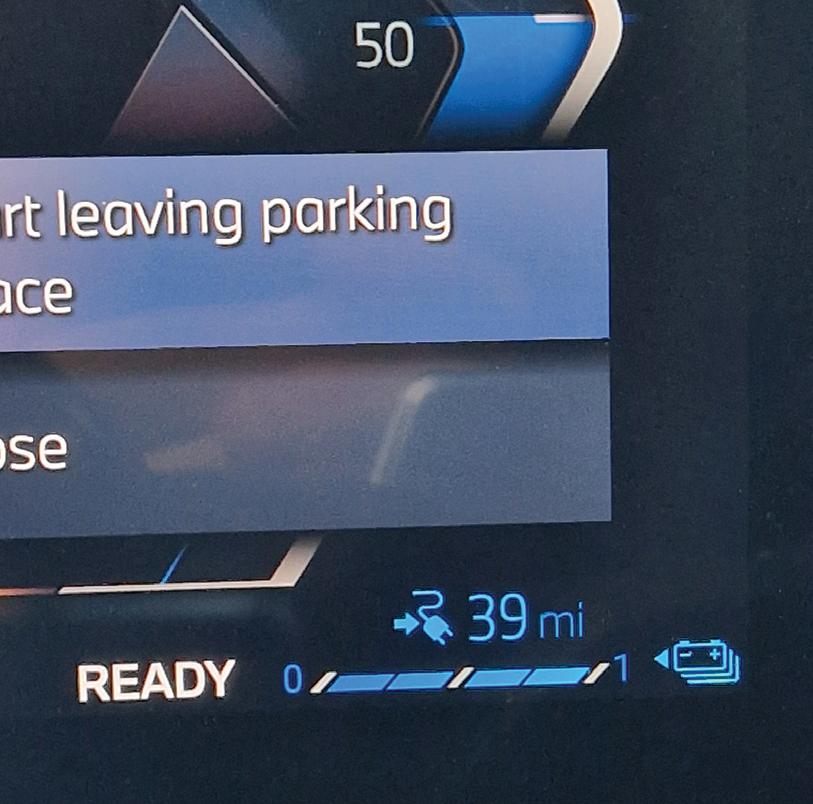

WEDNESDAY
Like many of these limo-like cars, the experience in the back is arguably more impressive than up front – when not behind the wheel. Our 750e came equipped with the technology pack (providing such delights as an upgraded audio system and park assist) but also the executive pack. Here we were indulged with rear massage seats, a theatre screen, ventilated and heated seats for all passengers (helpful as it was December!) and some mega comfortable seats in the rear. And a lot more, besides. Mind you, the two packs do cost in the region of £16k combined, so you’d expect a fair bit.
THURSDAY
Staying in the rear, the individual screens for passengers were a particular highlight for the youngest Challen Jnr, who wasted no time in getting up to speed with getting familiar in how she could personalise her individual space. While there is a lot of technology onboard, it’s straightforward to operate and also familiar to those who have spent any time in any modern BMW. It’s fair to say she wasn’t the only one who was sad to see the 750e head ‘home’.
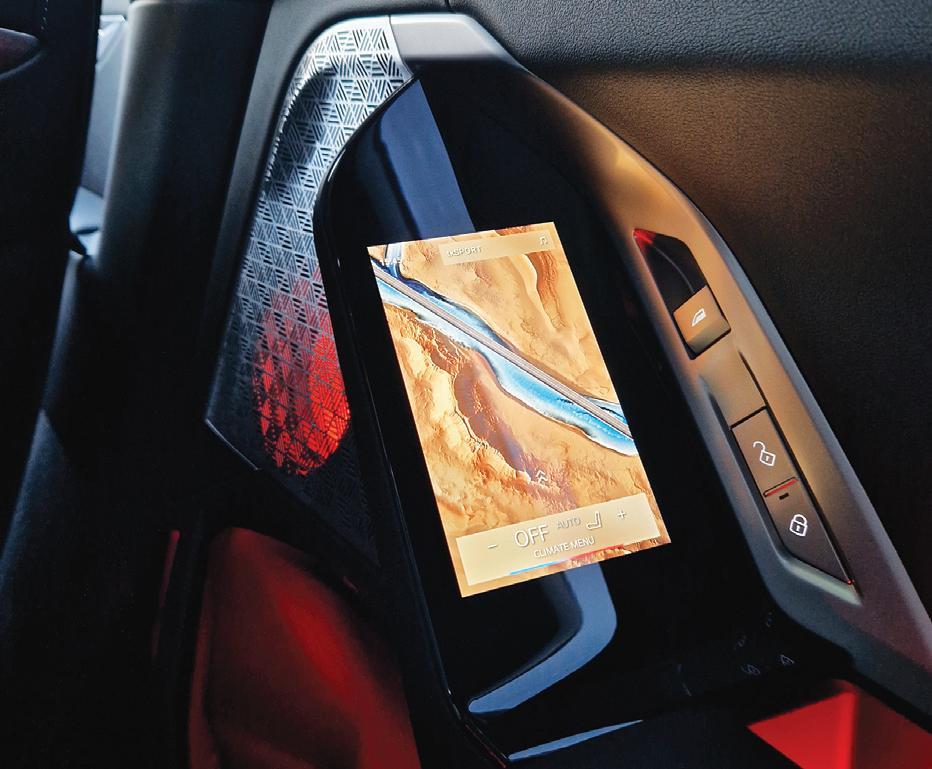
SATURDAY
For many years, BMW design has divided people – and the look of the current 7 Series does nothing to quash such debates. It’s certainly unforgettable, but there is a slight charm about the face, even if the large black sensor pad does nothing to soften the blow of the big ‘grille’ ahead of the bonnet. Our M Sport model’s appearance was enhanced by star-spoke alloys and ‘Dravit Grey’ metallic (a £1,100 option), which – along with the stylish lighting setup – made the Beemer stand out even more.
FRIDAY
A trip along the south coast meant there was no choice but to use petrol power for the bulk of the journey. As previously mentioned, the switch between battery and engine power is pretty seamless and, even at higher speeds, the motor noise is well suppressed. The same goes for road and tyre noise in the cabin, which is essentially non-existent. The long-wheelbase beauty still feels pretty big when out and about, but not to the extent of it being cumbersome or intimidating.
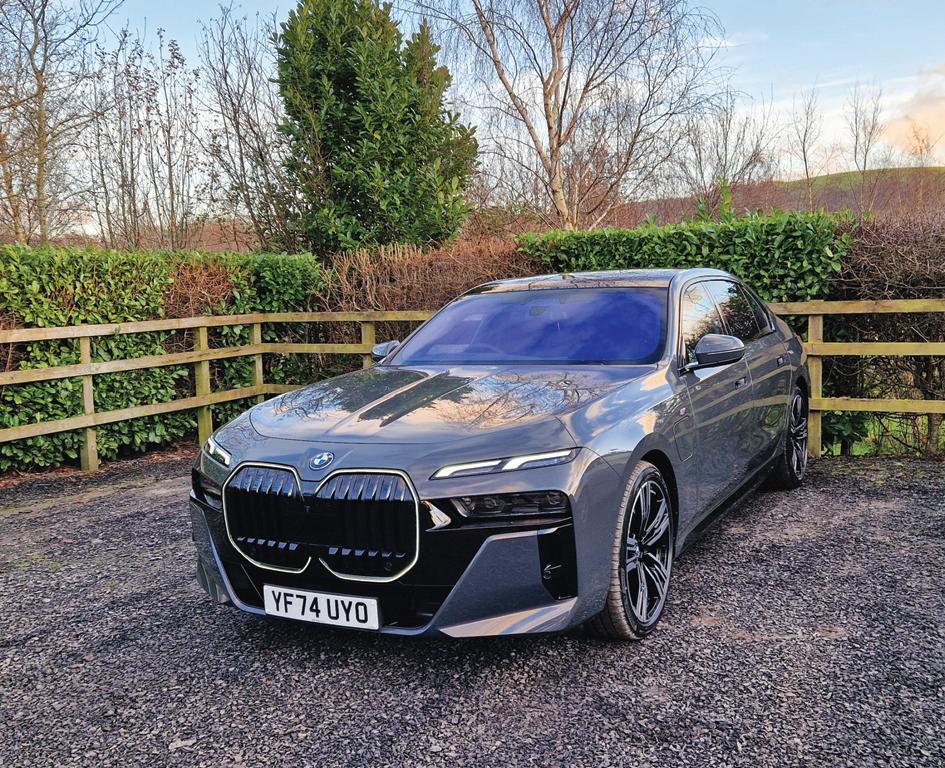
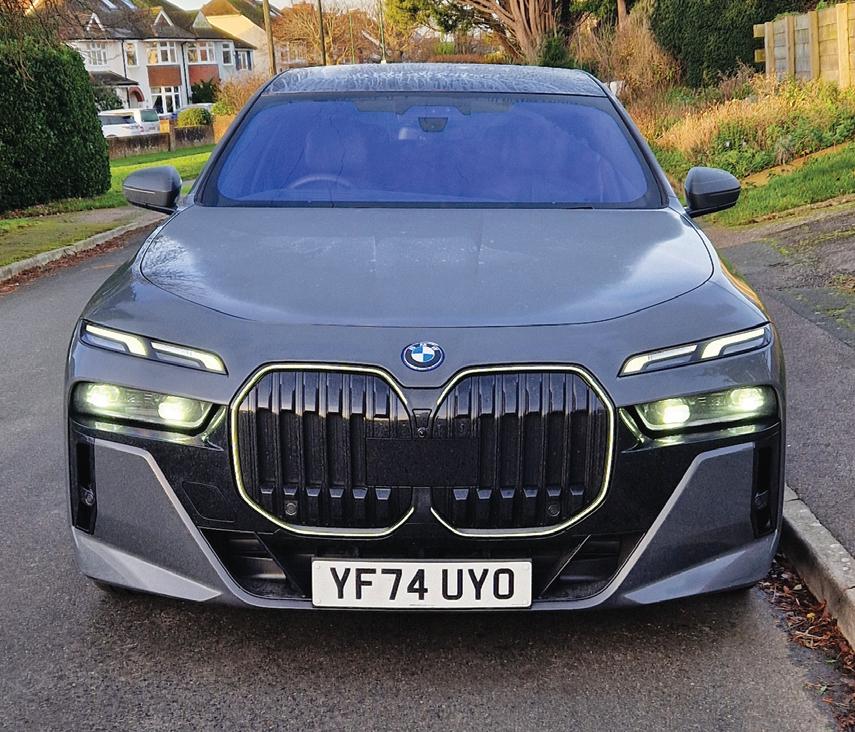

“The switch between battery and engine power is pretty seamless and, even at higher speeds, the motor noise is well suppressed”
SUNDAY
After more than 350 miles and 14 hours with the 750e, it was heading back, averaging 38.2mpg. That’s not too shabby, given the motorway miles and dependancy on the engine, not electrics – even if it falls well short of the claimed consumption figure of 256mpg for the hybrid. The 750e isn’t going to be on the company car list of many people, but it is a pleasure to experience from all seats. Many would argue it should be, given the £109k base price, let alone the £132k as-tested figure! Money well spent? Very possibly! JC
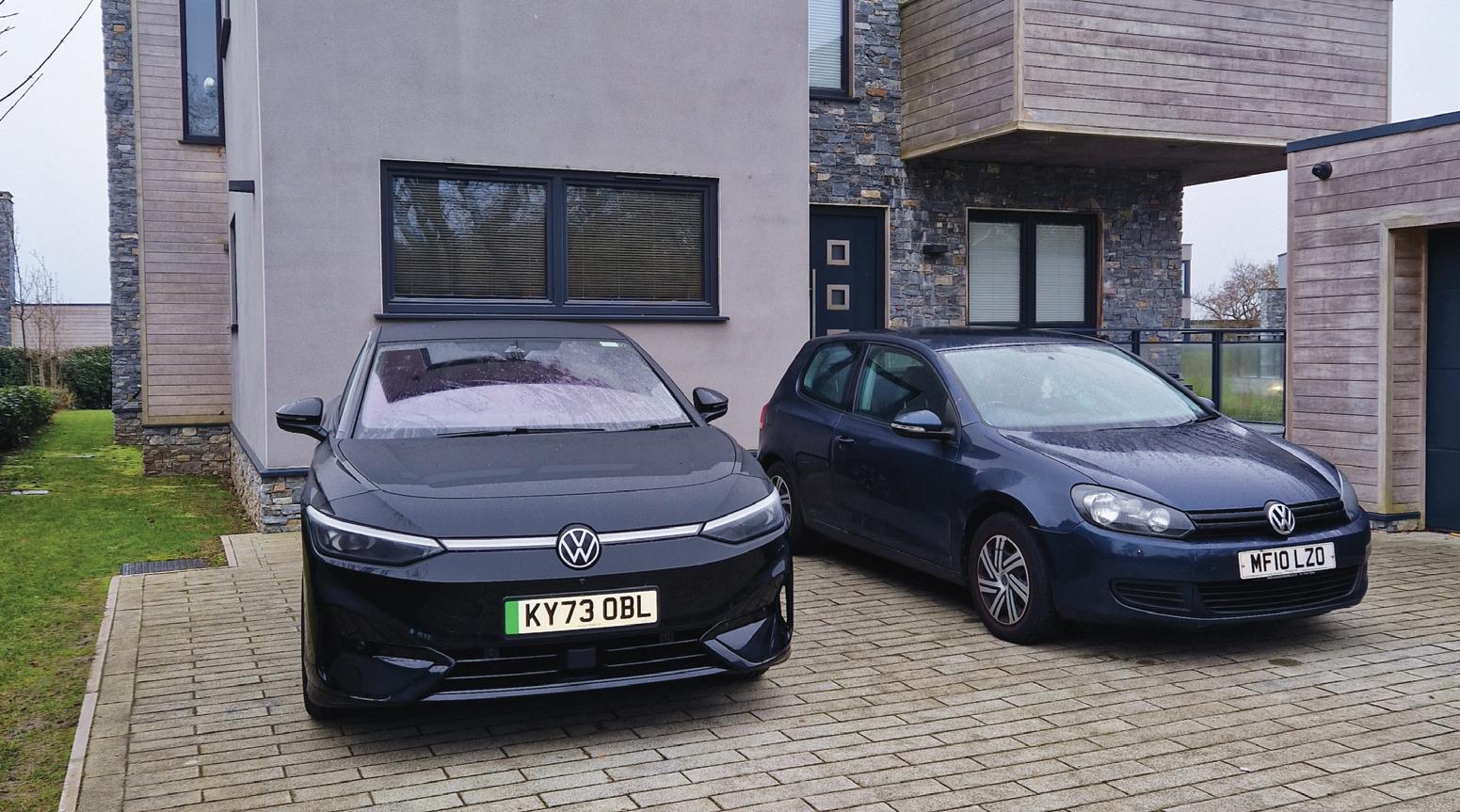
It was a case of ‘new year, new car’ for me as January signalled the departure of the ID.7 after a thoroughly enjoyable six months and the arrival of its smaller sibling, the ID.3. One of the big Volkswagen’s final tasks was to help transport the family away for a break during what my colleague
John Challen DE-FLEET REPORT
Mr Barnes delightfully calls ‘the festive gusset’ (the time between Christmas Day and new year, in case you were wondering). As expected, KY73 OBL was more than capable of getting the job done, the boot swallowing an enormous amount of stuff, as well as four people and one dog.
I’ve mentioned this before, but the ID.7 is such a comfortable car. The majority of EVs I’ve driven have had a pretty firm ride, sometimes to the point of me having to apologise to passengers if we hit a particularly rough surface. But in the big German sportback, there’s no need to worry about any of that.
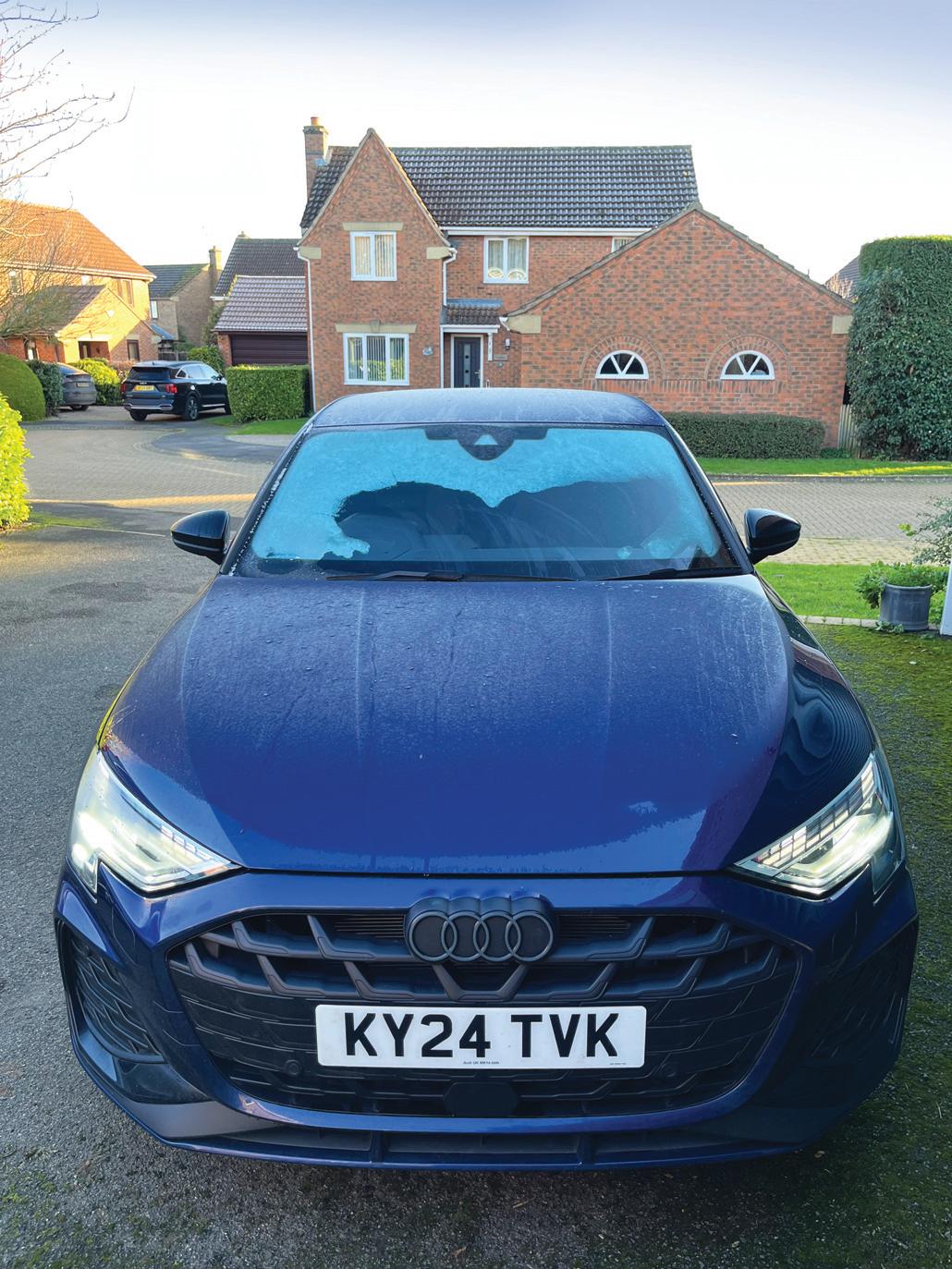
The recent cold snap highlighted a chink in the A3’s usually solid reputation – the full blast windscreen de-icer function is very slow. With every minute counting during a weekday morning with children to get to school and meetings to attend, having to wait for the A3 is clear its screen is a painfully slow experience.
I’m not sure if it’s because I’m used to the electric screen deicer in the family Volvo, but it takes a good few minutes to get the ice melted. The problem is that’s there’s not enough blowing taking place – it simply doesn’t gust with enough gusto.
It’s a rare thumbs down in my experience with the A3 so far, although the Audi’s infotainment system continues to frustrate thanks to its myriad screen alerts, which you have to respond to in order to access functions such as navigation.
On the plus side, the A3 offers affordable motoring – I’ve just filled her to the brim from empty
THE NUMBERS
P11D £51,495
BiK* 2% I £17 (20%) / £34 (40%) RANGE 383 miles ON FLEET RANGE 320 miles
4.1mpkWh
The fact that the seats are so sumptuous and supportive just adds to the overall level of comfort too.
If you want to drive the ID.7 fast – whether that be if you’re in a hurry, or you just like to – then knock yourself out, because it can handle it, despite its 2,630kg GVW. But most of the time I preferred to just saunter around and enjoy the overall experience in quiet and comfort.
As more and more EVs continue to flood the market – and company car lists – you would be hard-pushed to find a better allrounder than this one. Dismiss it at your peril.
and it took just under 45 litres of unleaded. That’s £60.50 for a realworld range of nearly 500 miles… Of course, a home-charged EV will be much cheaper, but if it’s charged in public that gap will be an awful lot smaller.
There’s a lot to recommend with the revised A3 family, although I don’t think my money would go towards our test car –I’d save £2,500 and drop down a trim level and plump for an S line with this engine and gearbox – affordable, well built and with the right badge cache to appeal to middle management user-choosers.
Julian Kirk

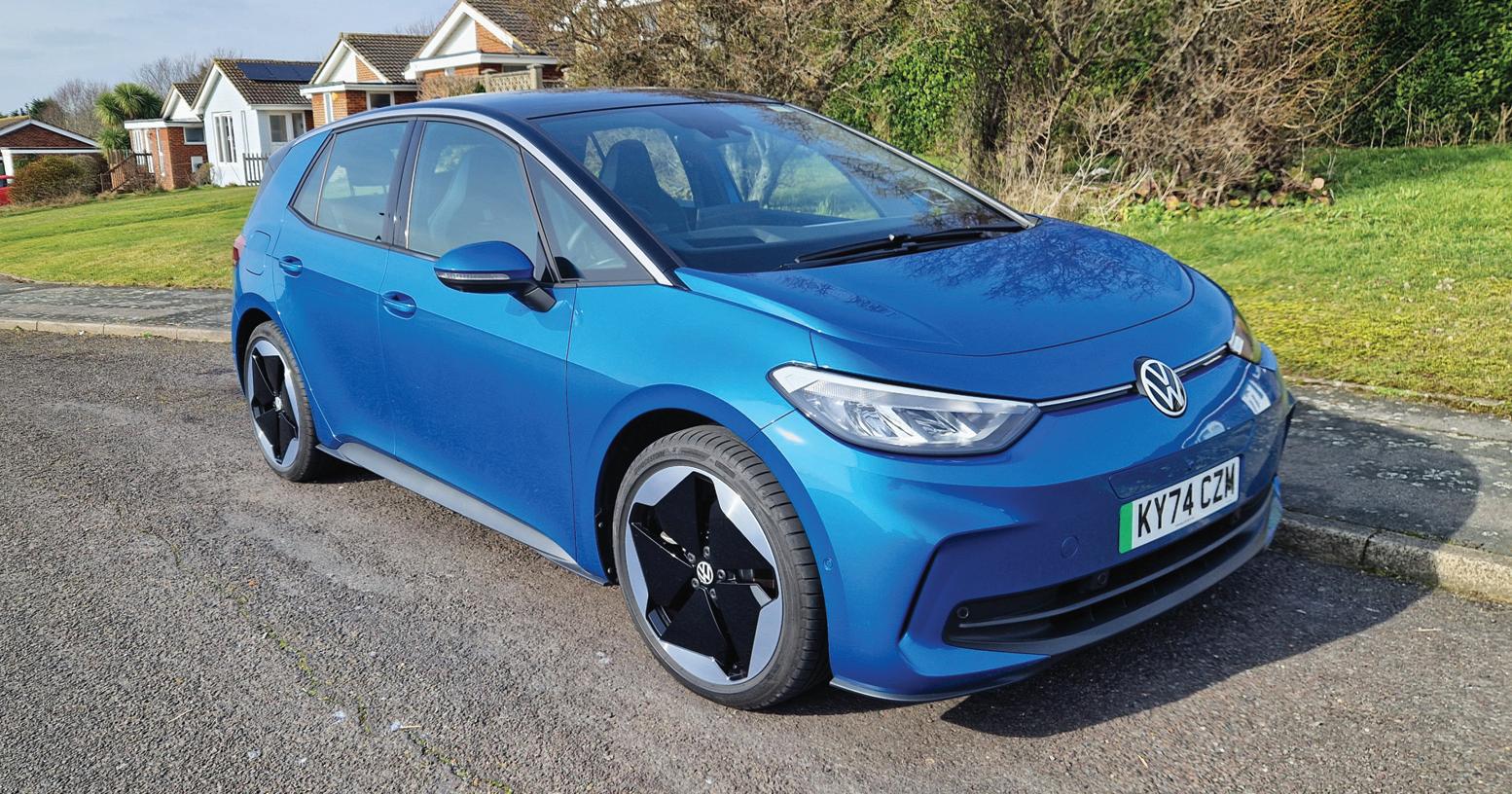
As revealed opposite, there’s a new ID in town – and on the FW fleet – and it’s been quite a revelation, if I’m honest. As the smallest member of Volkswagen’s electric family, the arrival of the ID.3 Pro S left me fearing the worst with five of us, including three growing Challen Jnrs. In reality, I – and my passengers –
have been seriously impressed with the relatively cavernous interior of the ID.3 as well as the quality and switchgear, which has undergone a bit of an upgrade since the original model. The main criticisms were that things had been stripped too far back and the controls were difficult to operate. Now, having taken a
Imentioned in the Tavascan’s first report that I was still very much in my honeymoon period with the car, and familiarity with the Cupra brand and previous models on our fleet – Formentor PHEV and Born – has bred content.
Tavascan certainly feels bigger than both its stablemates, and tips the scales at over 200kg heavier than a Born with an equivalent sized battery. In short, it feels solid, substantial and very planted on the road.
Such familiarity has lent itself to me having no issue in principle with pretty much everything being controlled by the big, centrally-mounted touchscreen display. However, I’ve found that the Tavascan multimedia set-up often requires me pressing more buttons than I need to, to toggle between, say, the climate control and the navigation system. There may be a way of personalising this but I haven’t quite got round to investigating yet.
I’m also glad the screen isn’t
any further away, as when my driving position is spot on, it’s a bit of a stretch for my disproportionately short arms (discovered driving various cars over the years).
A word on the driving position here though. The Cupra Tavascan seats are simply wonderful, and the driving position is nigh-on
leaf out of the ID.7’s layout, elements such as volume and mirrors are much easier to adjust. It’s often an overused phrase, but our ID.3 is probably close to fully loaded. As well as the standard kit there’s adaptive chassis control (£955), assistance plus (£2,240) and interior plus (£3,865) packs, carpet mats
(£105), panoramic glass roof (795), variable luggage floor (£75) and a transport hitch for a bicycle carrier (£365). Add in the £810 colour scheme and this particular model comes in at £52,485 –quite the premium over list.
Out on the road, first impressions are positive, although the claimed economy of 4.2mpkWh doesn’t seem to be in reach right now. However, most of the journeys in the ID.3 have been in and around town, which might explain that. With a few longer runs coming up, I’m hoping that the needle will shift a bit there soon.
John Challen
perfect. There’s good visibility, aside from the chunky A-pillars and the fact the dashboard ambience lights reflect in the driver’s wing mirror at night, and it’s hard to imagine a more comfortable car with which to cover its 300-mile+ range in.
Luke Wikner
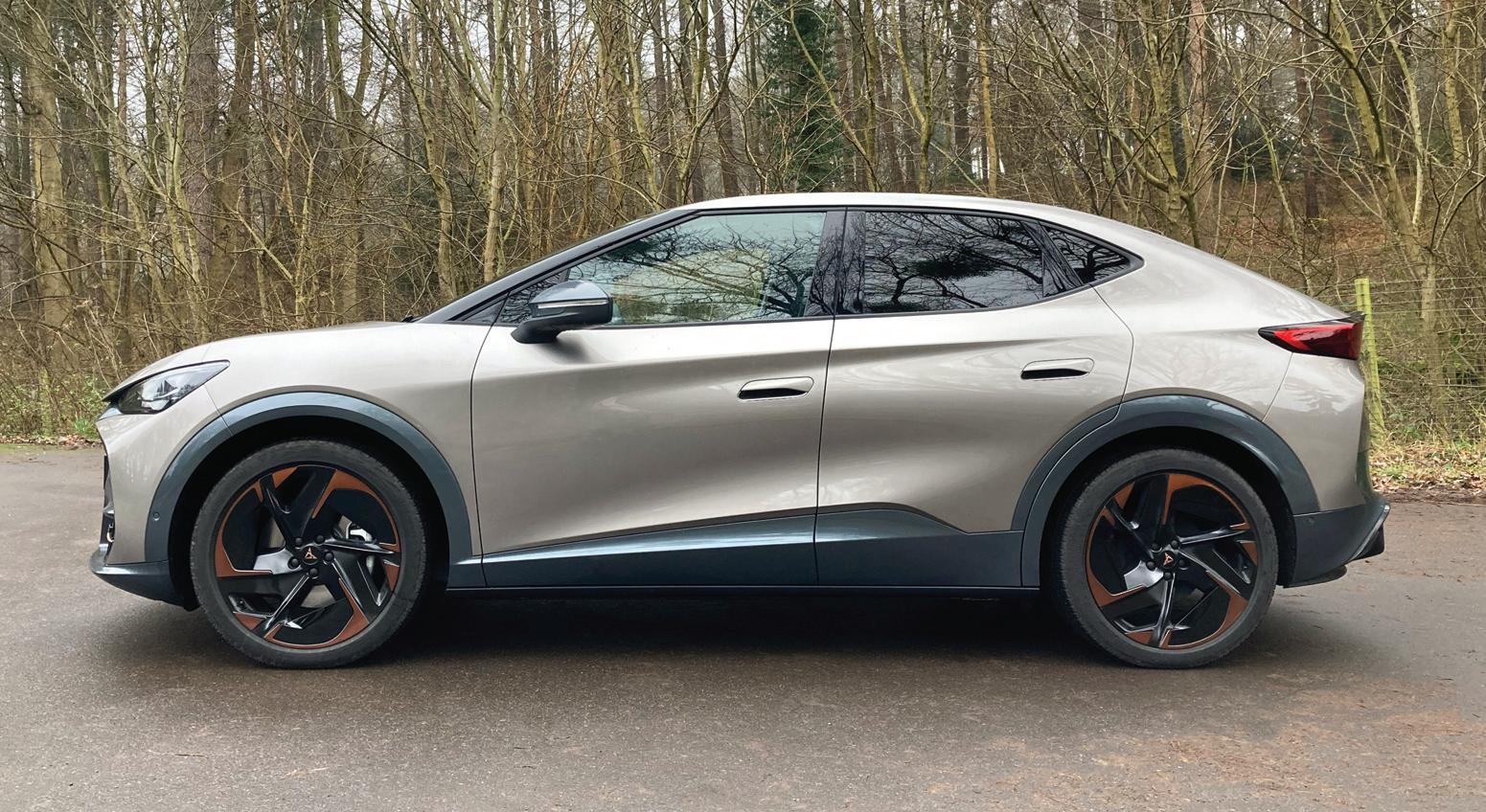
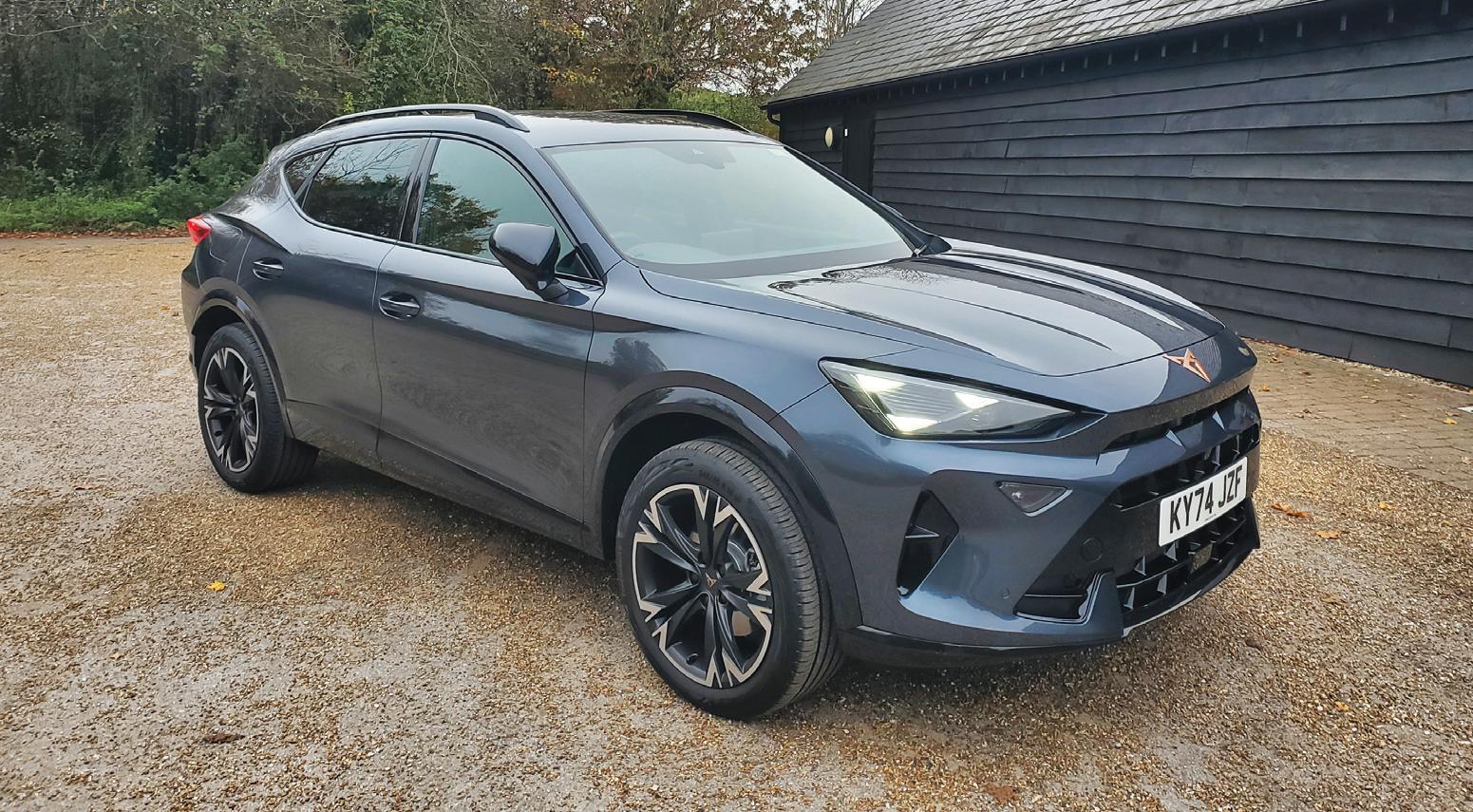
Positioned as a performancefocused family SUV, the Formentor delivers both sharp design and practicality, as shown by tests of our long-termer in recent weeks.
One thing that I have loved from the start is the ergonomic interior. Slide inside and the infotainment
touchscreen – expanded to 12.9 inches in last year’s facelift and fitted with a retro-illuminated slider – is angled to the driver and the centre console ensures everything is handy.
You also sit lower down than other crossovers, enhancing the feeling that this is a driver’s car.
Our V1 may be the entry level trim but, so far, I’m not missing much – heated seats would be nice to have but the heated steering wheel, with the aforementioned paddles on our DSG version, was a nice surprise that’s been put into some hard use over recent weeks.
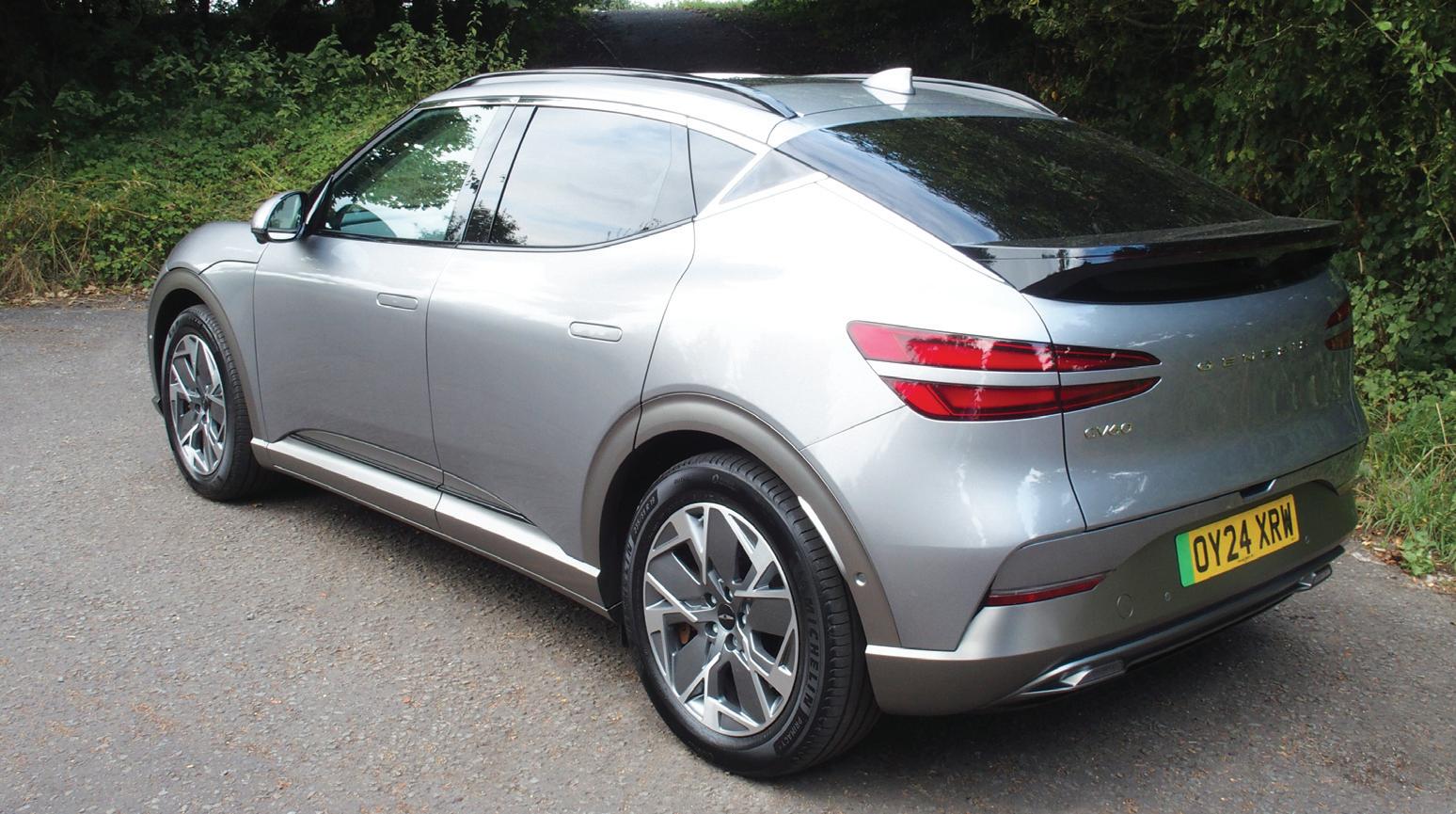
P11D £35,150
BiK* 31% I £181 (20%) /£362 (40%)
CO2 EMISSIONS 133g/km
ECONOMY 44.1-47.9mpg ON FLEET 31.7mpg DE-FLEET REPORT
Headroom is great and I’ve also been impressed with the rear seat legroom, meaning three adults in the back is no problem.
Boot capacity for the 2WD petrol versions, including ours, comes in at a reasonable 450 litres – dropping to 420 for the 333hp 2.0 TSI four-wheel drive and 345 litres for the plug-in hybrids – and tops out at 1,505 litres. There’s only a small lip to get into the Formentor’s boot and just a small bump up when the rear seats are folded. All in all, it made a solo tip trip with a rather bulky chest of drawers far easier than I thought it would be Natalie Middleton
P11D £61,005
BiK* 2% I £20 (20%) / £40 (40%)
RANGE 321 miles ON FLEET
here have been a couple of times when I thought the GV60’s facial recognition system was not going to let me in to the car, usually in the dark and rain, but luckily, it has worked after a bit of hesitation. I even had to remind myself recently to take the keys with me on a trip to
Greece because I needed to leave them with the airport car park. Luckily, I remembered. I’m now conscious that, as I write, I have just a week left with the GV60, so what have I liked and not liked about it? To be honest, I like just about everything about it. Performance is
impressive, range is good, although it has struggled to better 240 miles on a charge through the cold weather. It’s comfortable, quiet with good rear seat legroom and a decent-sized boot. On the dislikes, there have been a couple of occasions when a software glitch has manifested
itself. I could drive the car but the single screen that carries all the instrumentation, navigation etc has remained blank. Thankfully, using the old computer fix of ‘turn it all off and turn it on again’ has sorted it out. In the cold weather it has been irritating on a few occasions when I know I have enough charge to get home to find the car conditioning the battery and directing me to a charge point. Conditioning the battery runs it down faster and has once or twice left me with no alternative but to charge up. So, would I have one if I had a £60,000 car budget? Yes.
John Kendall
REPORT

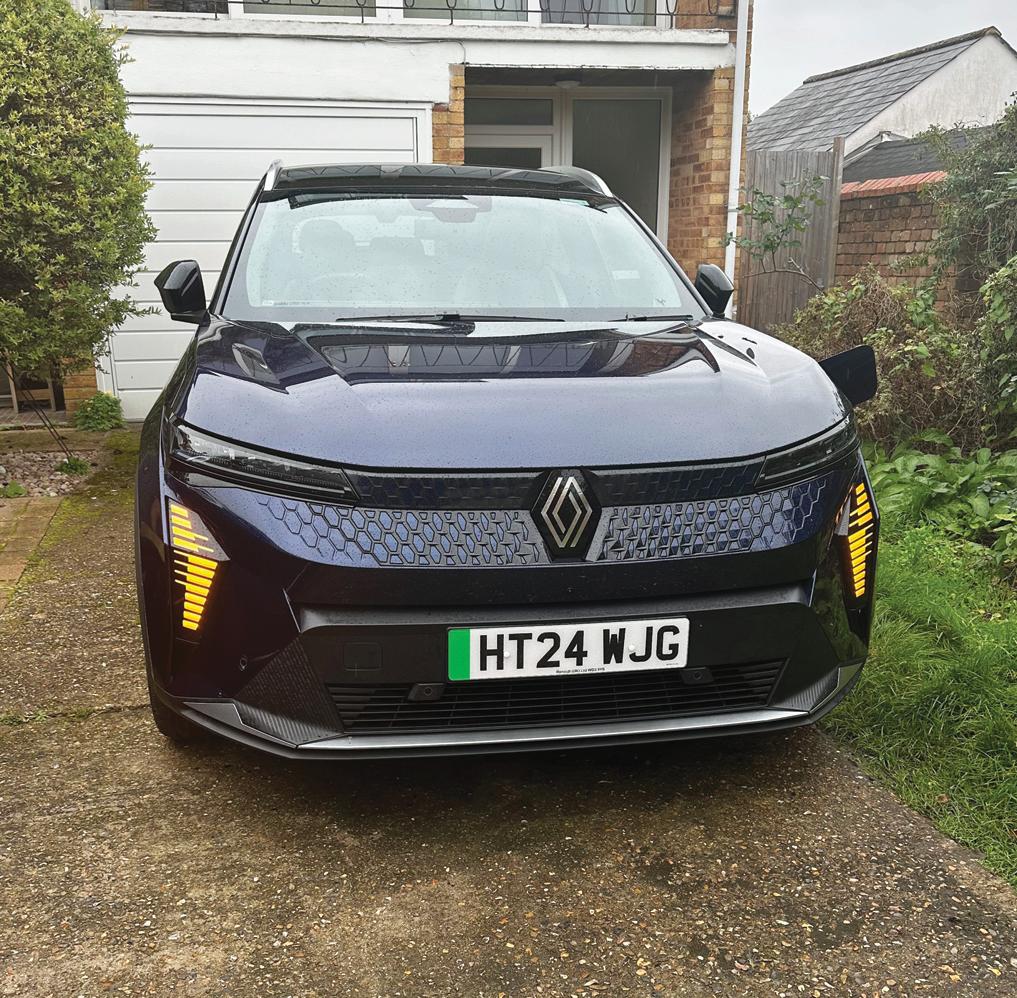
I have a soft spot for the Scenic, ever since its original introduction in 1996 in people-carrier form, for its sheer practicality and clever touches that made living with it as a family that much easier. Of course, the world has moved on somewhat in the past 29 years and so have car buyers. The carbuying public has switched to
SUVs and crossovers, and in turn, so has this new Scenic.
That’s not the only change either. Following the lead of the Megane E-Tech and with the new 5 on sale, the Scenic has now embraced full-electric power. This is the 87kWh battery model, although a smaller 61kWh version is also available to add extra choice and a more tempting lower price at the same time.
The Scenic represents another rung for Renault’s EV family. With all of the brand’s other electric cars, there’s now another EV model further up for a customer to potentially go into.
Which ironically is just what I’ve done from the Megane. I love the extra size of the Scenic and also that additional range, though the first few days weren’t without problems.
The 20-inch ‘Oracle’ design alloy wheels look great but the ride is quite firm for what is, after all, a company car. The ride I can
live with (I think), but what is somewhat harder to live with is the Scenic’s charging unpredictability. As I’m temporarily in a rented house, I don’t have access to a home charger, so all of my charging is done via a three-pin ‘granny’ cable. The Scenic effectively goes to sleep anything from 30 minutes to three hours after having started charging. So I have to keep checking on it. Renault has said it’s a known problem and it’s working on a software update, but I’m finding it a little disappointing and not the best of starts. Watch this space.
Nat Barnes








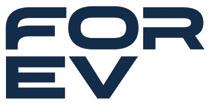







words John Challen

After reporting double-digit growth in the first half of 2024, Lego remains popular with people of all ages, covering a wide range of interests. The company has played a blinder in its recent history, having established and cultivated many lucrative brand and franchise collaborations that have spawned multiple products in everything from Harry Potter, to Star Wars to Minecraft.
One area that Lego has continuously remained strong in is that of cars. Particularly Formula 1, which, like Lego, has managed to retain a healthy audience, despite undergoing a number of changes that some fans have deemed controversial and/or unnecessary.
With the new F1 season upon us, how about the chance to get up close and personal with one of the cars? The only problem is, you won’t be able to get behind the wheel, not unless you somehow manage to shrink yourself down to about the size of a £2 coin (remember them?!). Clearly, we’re not talking about the latest racers that will be fighting it out on an evergrowing number of tracks around the
world, sadly. This is the Ferrari SF-24 F1 car – a replica of the model driven by Charles Leclerc and Carlos Sainz (and Brit Oliver Bearman for one race) last year.
In Lego form, the Ferrari’s attention to detail is impressive, so looking over the replica will *almost* be like admiring the real thing. Ish. For example, the multi-piece model features an opening DRS, Pirellibranded tyres and a V6 model engine. There’s also front and back suspension and a two-speed gearbox, which allows builders to get a great view of the mechanics behind the race car.
It’s not one for the kids, though. For some reason, Lego has slapped an 18+ rating on this particular red-hot model. Mind you, given the shortening attention-span of everyone – especially those Gen Z and Gen Alpha types – the effort involved in putting together more than 1,300 pieces of plastic might be a bit too much to bear. Probably better to leave them to TikTok or YouTube where they could watch someone else do it instead!
For everyone else, the chances are this
Price: £199.99
Lego pieces: 1,361
Age: 18+
Wheels: five
Hours to build: Lots
Wheels: Six
Likelihood of making it onto the fleet? 9/10
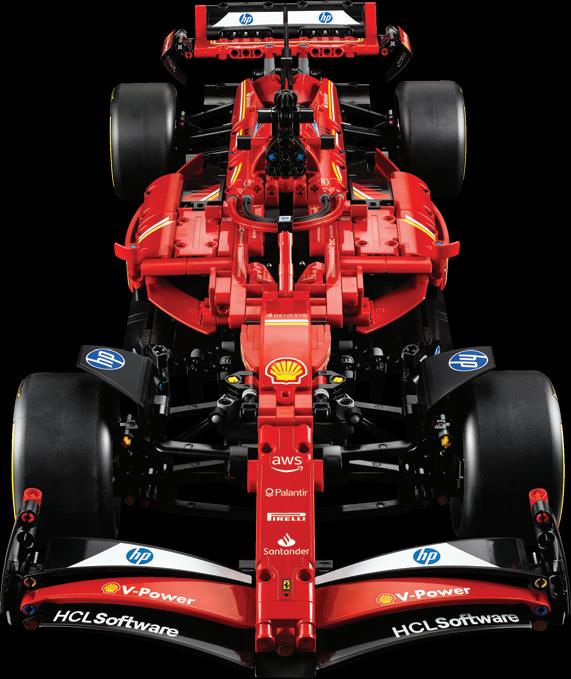
won’t be your first automotive Lego build, so you know the drill: don’t open all the bags at once; be prepared to lose track of the instructions and rebuild sections of it; and try to stay calm when you’re trying to put the finishing touches on it and the pesky advertising stickers don’t go on straight!
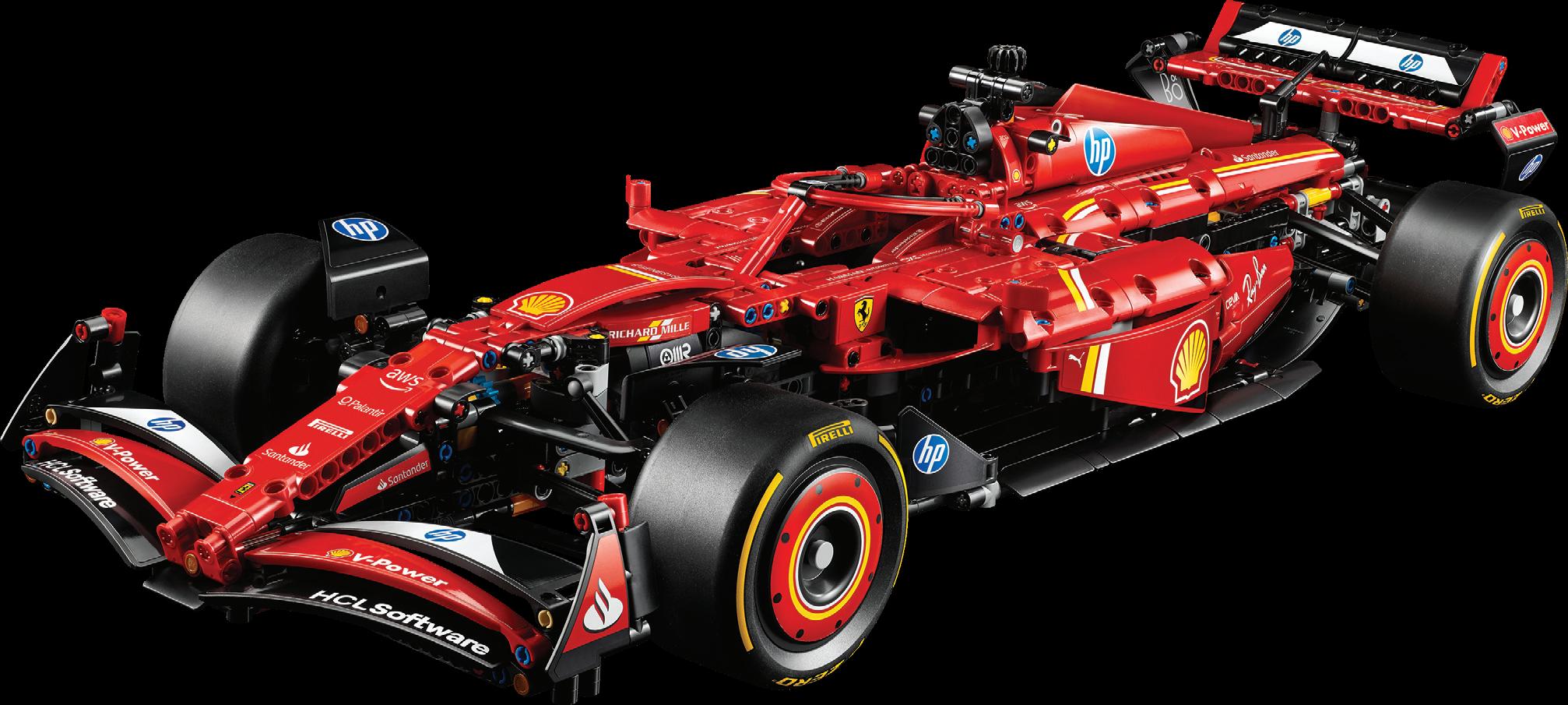
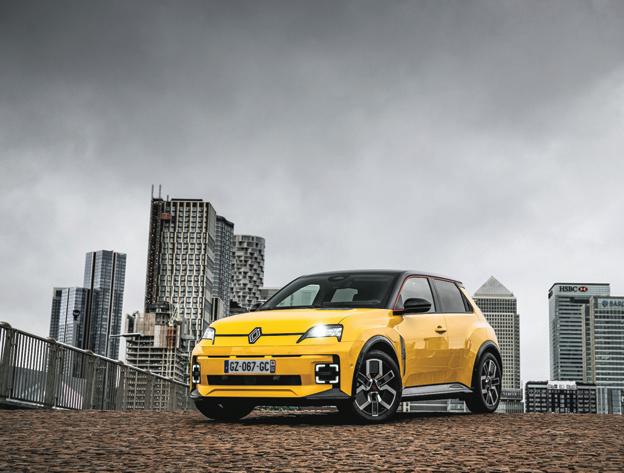
“For some reason, Lego has slapped an 18+ rating on this particular red-hot model”

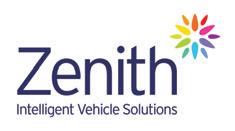




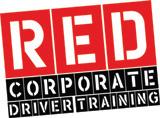






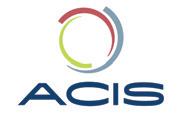


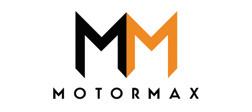



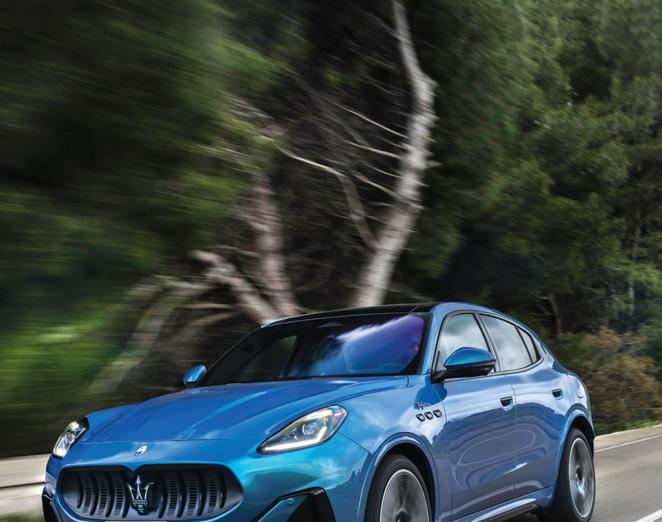


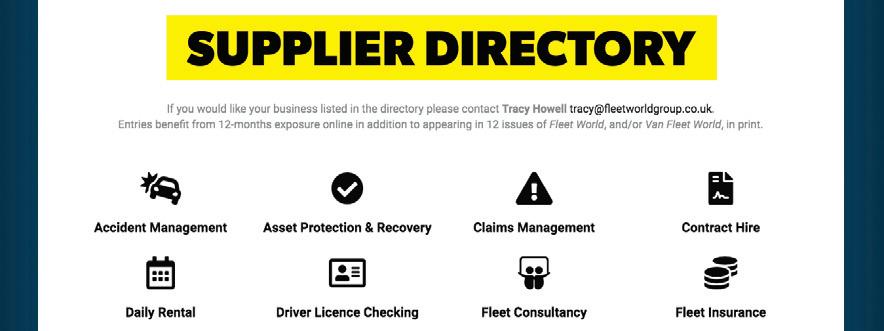



evfleetworld.co.uk
vanfleetworld.co.uk
Investigating the challenges around electric van outfitting
8 MAY 2025


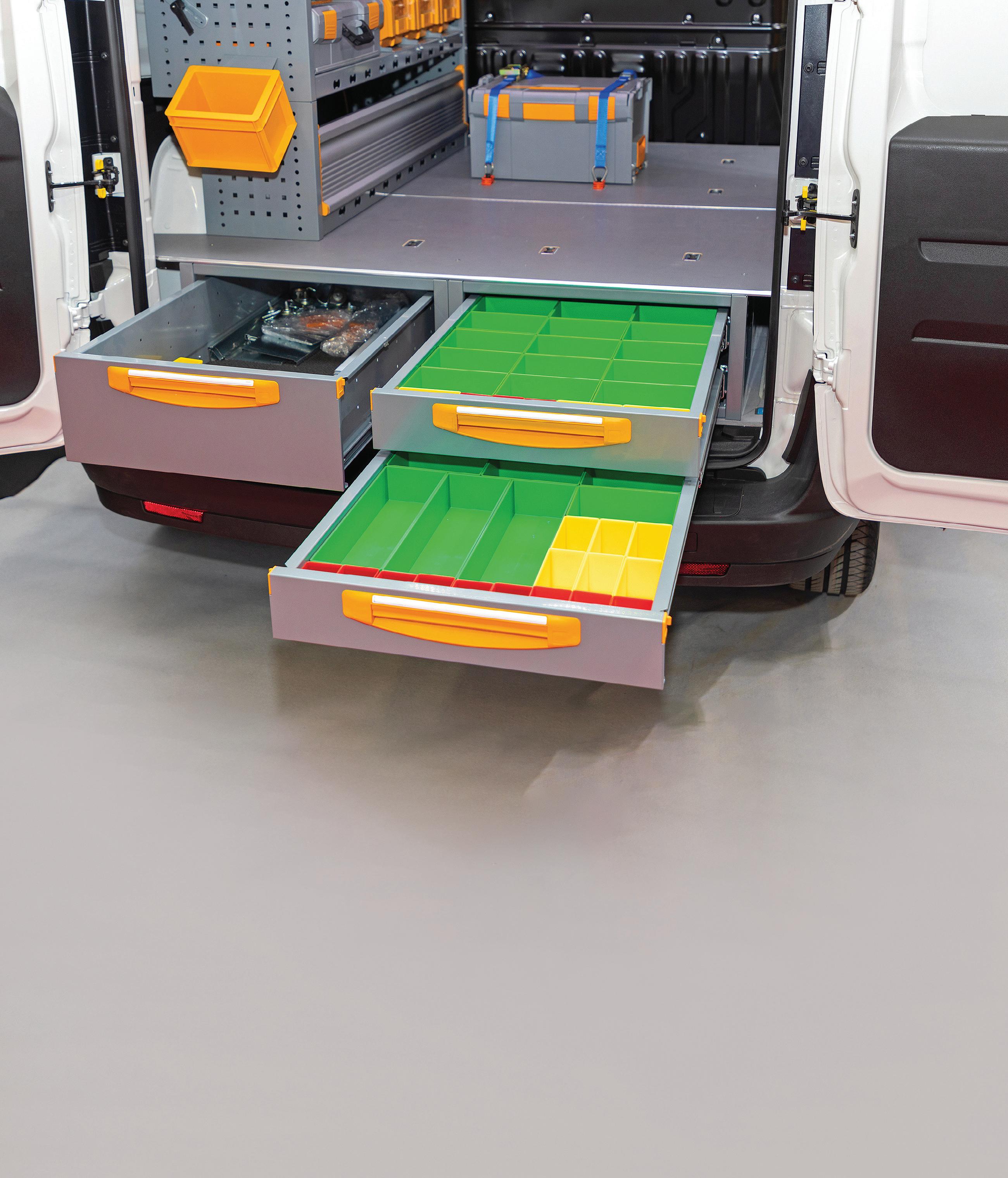




John Kendall
VFW editor
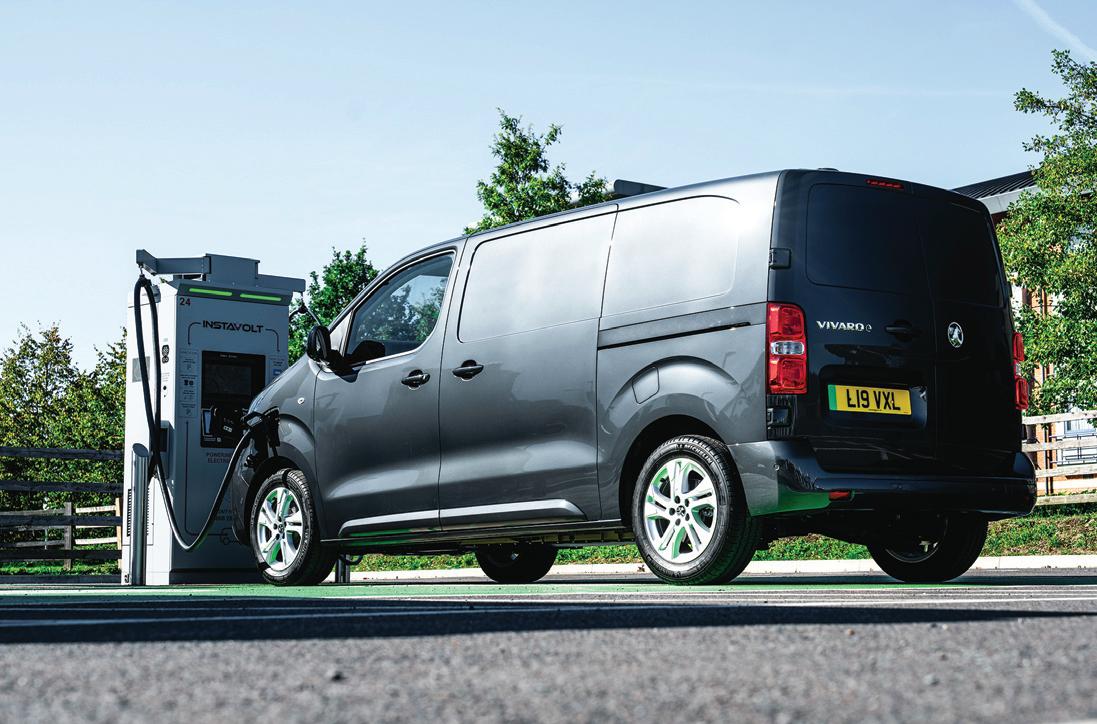

“The Government is definitely making the right noises to van users”
With so much grabbing our attention in the headlines recently, a government announcement at the end of February extending the Plug-In Van Grant for another year has almost been lost. To quote from the DfT press release, it means: “Businesses and van drivers can receive grants up to £2,500 when buying small vans up to 2.5 tonnes and up to £5,000 for larger vans up to 4.25 tonnes.”
That will be beneficial to fleets large and small, to help bridge the price gap between vans with internal combustion engines and those with electric power. The Government has also moved to remove an anomaly. Up until now, drivers of zero emissions vans up to 4,250kg gross vehicle weight and exceeding 3,500kg GVW, holding a category B driving licence, have had to undergo an additional five hours of training before they can drive the heavier vehicles.
Since the 4,250kg GVW weight limit was introduced to allow for the weight of batteries and additional equipment on these vehicles, the intention was never to allow these vehicles to be used to carry heavier loads than petrol and diesel models up to the usual 3,500kg limit for category B licence holders. The government has now put legislation forward to remove this requirement, which was a disincentive for some drivers to make the switch to EVs.
Combined with continued funding for the chargepoint rollout, the Government is definitely making the right noises to van users. Of course, the Government will keep grant funding under review, so if you are thinking about adding electric vehicles to your fleet, this could be a good time to do it.



What tyre monitoring software and connected services are available to help keep fleets moving? Matt MacConnell finds out
Regardless of fleet size, tyre safety and risk management is an essential topic of conversation, as getting either of these wrong could lead to fleet downtime and unexpected costs –and could also put the lives of fleet drivers at risk.
Rotating tyres, scanning for sidewall bulges and determining how much remaining tread is left are all visual checks that should be done regularly. Of course, carrying out these checks on each van before it heads out on a route can be timeconsuming, especially for larger fleets. However, there are a few solutions available, such as connected software which continuously monitors tyres via sensors.
It could be argued that as technology advances, tyres are also becoming increasingly sophisticated. While this may be true regarding the materials used to help improve grip, sustainability and longevity, tyres cannot solely generate usable data. And, like cars, many vans on sale today come with in-built software that detects tyre pressure loss, but this is usually all that’s offered.
“[Tyres] need a connected service to act as a key component to capture and curate the data into meaningful insights,” reasons Matt Childs, customer category manager at Michelin. “Michelin Connected Fleet, part of the newly formed Connected Solutions business line, facilitates the data flow from the tyres, allowing fleet operators to understand and act upon the information coming from their vehicles. This assists in reducing downtime and costs, increasing
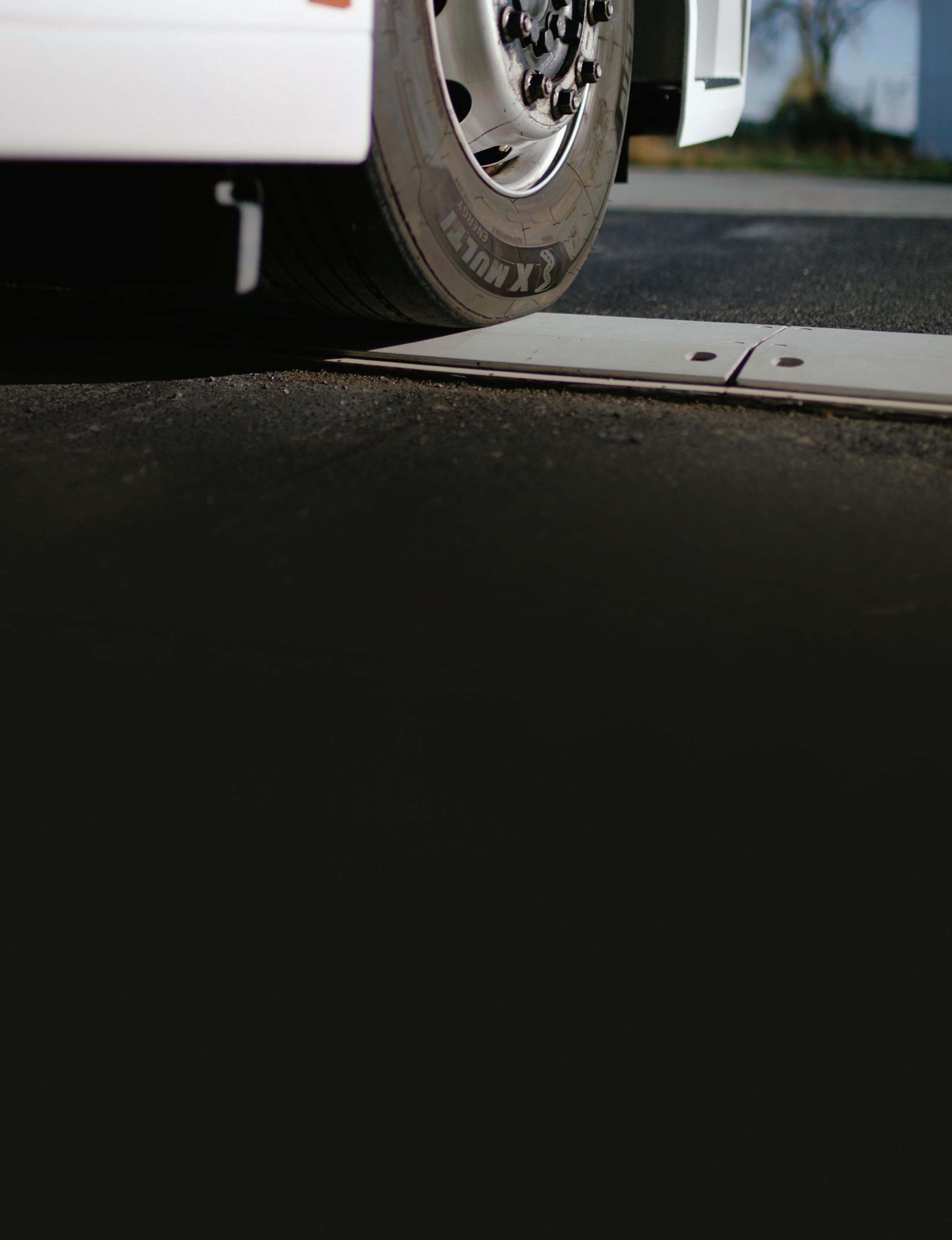
productivity and helping fleets to operate as sustainably and safely as possible.”
Regardless of what a fleet specialises in, tyres are still exposed to tremendous amounts of strain and maintaining pressure is vital, especially in vans carrying heavier loads. It could be easy for this to slip among larger van fleets, resulting in instability or increased tyre wear, but there are systems available that take tyre monitoring to another level, using an array of advanced sensors that automatically feed information back to a web portal or the driver.
“It’s possible to get real-time TPMS data, tyre temperature and brake information from sensors fitted to the wheel assemblies,” adds Childs. “In addition, the latest drive-over technology allows an extra layer of data richness, providing accurate tread depth readings to be sent to operators.”
Similarly, Bridgestone’s Webfleet system also provides automated reporting and combines AI to report bad driving habits such as speeding, harsh braking and
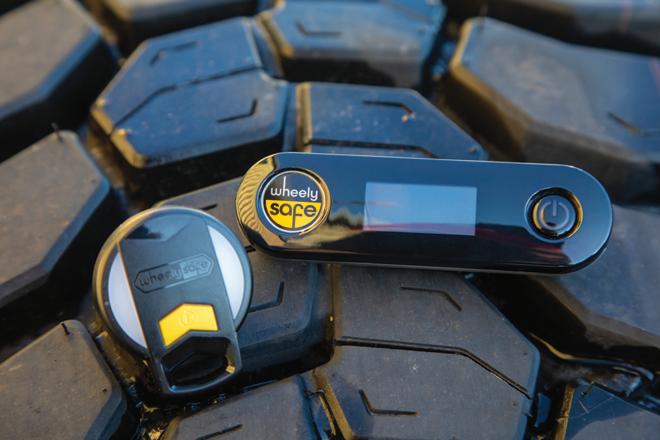
aggressive cornering. The Webfleet Pro M is a compact variant that intends to streamline vehicle checks and record readable diagnostics. At the end of 2024, Bridgestone also released its new Duravis All Season Evo all-season tyre. The EV-ready tyre replaces the Duravis All-Season and is claimed to show a 15% increase in mileage and a 15% reduction in rolling resistance.
Some tyre manufacturers do a grand job at keeping with digital times and offer solutions like the above, but what do independent companies such as Staffordshire-based Wheely-Safe offer? Its light vehicle tyre pressure monitoring system (TPMS) is suitable for small and large LCVs while the company’s Connect cellular-enabled system is aimed at larger fleets. The system monitors tyre pressures when the vehicle is driving or stopped and drivers are notified via an incab display whenever an issue, such as low tyre pressure, occurs. Tyre pressure aside, it’ll also detect loose wheel nuts, brake and hub overheating, and high tyre temperatures. The Connect web portal also allows for further reporting.
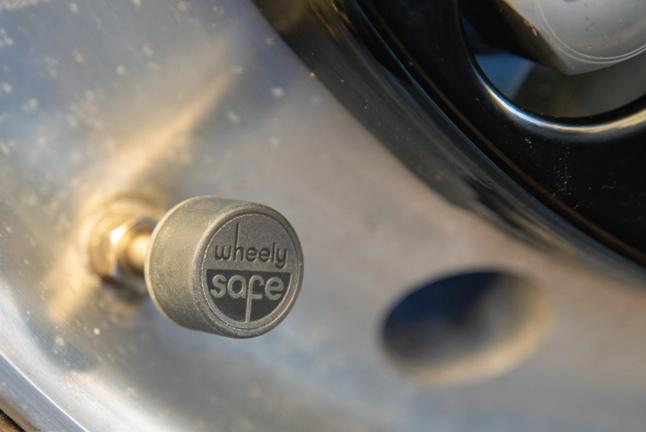
Wheely-Safe’s TPMS system is linked to an in-cab display, and includes a web portal for further reporting
“Human intervention is still required to monitor software and run reports but if the correct software is chosen, this should be minimal”

Although not tyre manufacturers, both the RAC and AA are the two largest breakdown services in the UK, the latter having over 3,000 vans with around 270 of those being electric. According to AA statistics, three in 10 (30%) of car drivers are unsure how to check their tyres properly, a figure that should be less for LCV operators if they are trained correctly.
The AA Vixa wellness application allows drivers to take photographs of their tyres, AI then analyses the tyres and gives the driver information on the tyre brand and size and more importantly how old they are. It also detects how many more miles they have left and how much wear is on them. Once photographs are uploaded, drivers get a full health report and advice on whether their tyres need replacing. If they do, the AA will recommend garages and provide cost estimates.
“Gone are the days of a quick visual check and a pressure test if you’re lucky. Most of the major tyre manufacturers now offer cloud-based platforms with live data that can dramatically improve safety and reduce costs,” says Philip Swift, technical director at Claims Management Adjusting (CMA). “Some of the tyre monitoring apps for consumers are really good, but software which plugs into your fleet management package can take it to another level.
“From an insurance claims perspective, this has several important implications – and top of the list is safety,” he continues. “TyreSafe and others regularly highlight the role of alleged tyre defects in a shockingly high percentage of crashes. Any data that can help a fleet manager protect their staff, customers and the public is therefore very welcome. Then come the obvious financial and operational benefits –prolonged tyre life, reduced fuel costs and emissions, less downtime etc. Further to that, there’s compliance and liability to consider.”
If a van tyre blows out, it could lead to third-party property damage or, even worse, a road traffic collision. Blame will often be attributed to the fleet operator unless solid evidence surfaces. Decent tyre software should report a blowout and, although slightly more advanced, many can also detect what caused it. This can help build a defence to a claim and perhaps allow the fleet to pursue a claim against the relevant authority if the blowout was caused by debris or rough road surfaces. Many companies, including some mentioned above, offer trials that allow van fleets to test software products before making a large commitment.
AI is developing at an alarming rate, and AI-created videos and photographs can be terrifyingly believable nowadays, but its development can also save lives. If used in tandem with telematics,
cameras (most modern cameras use AI), and tyre software, it can help prevent nasty accidents and unforeseen costs. Human intervention is still required to monitor software and run reports but if the correct software is chosen, this should be minimal. Similarly, we shouldn’t rely on AI to fully replace human intervention, and although monitoring devices and products make our lives easier, knowing how to check tyres manually is imperative. It’s also worth understanding the law around tyres. A law implemented on 1 February 2021 states it’s illegal for vehicles above 3,500kg (gross) to use tyres older than 10 years on the front axle. If a fleet operator is caught by the police with tyres older than this, they could be issued with a fixed penalty notice or be disqualified from driving. This also commonly carries a large fine that would impact both the business and the operator.
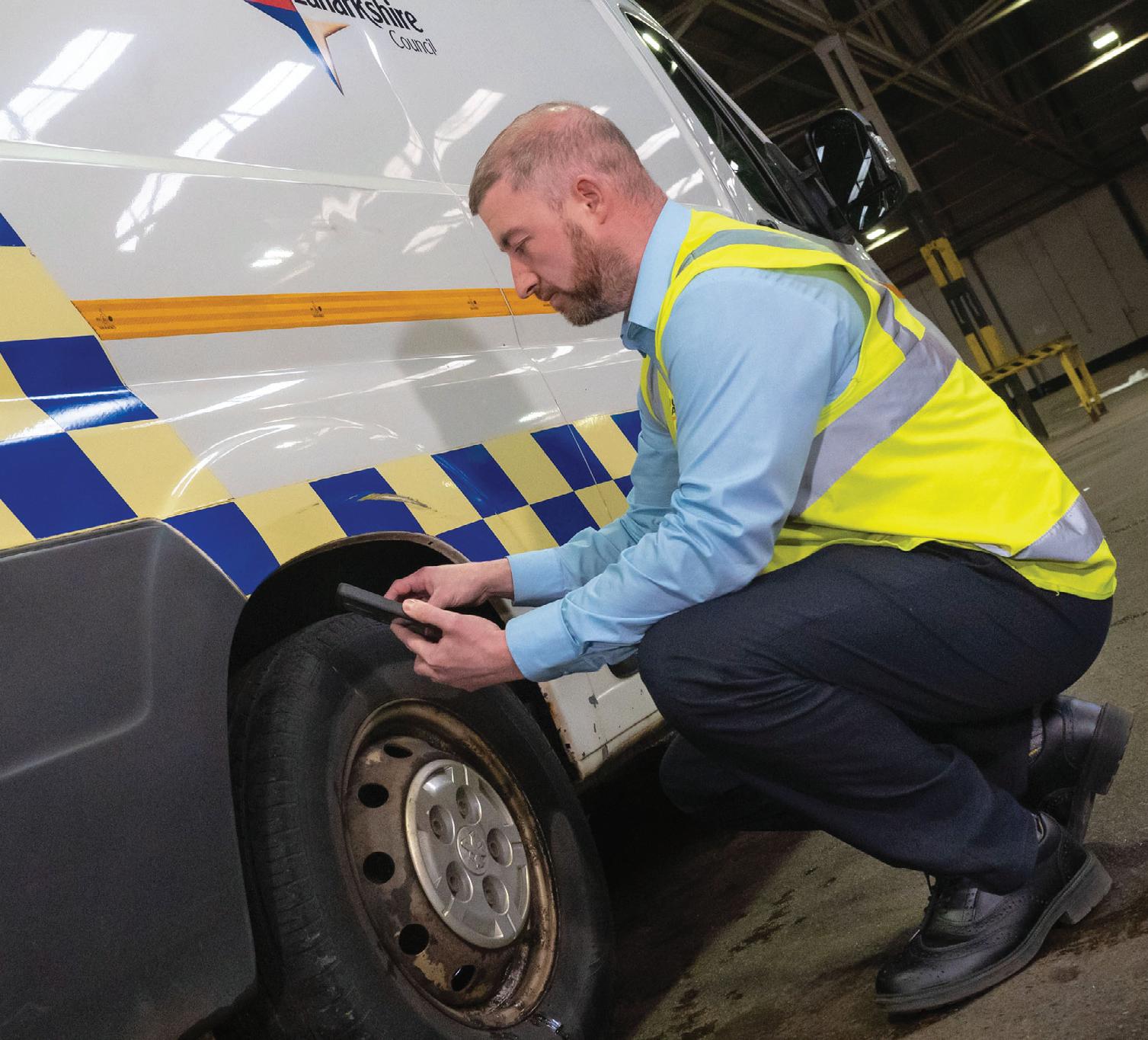
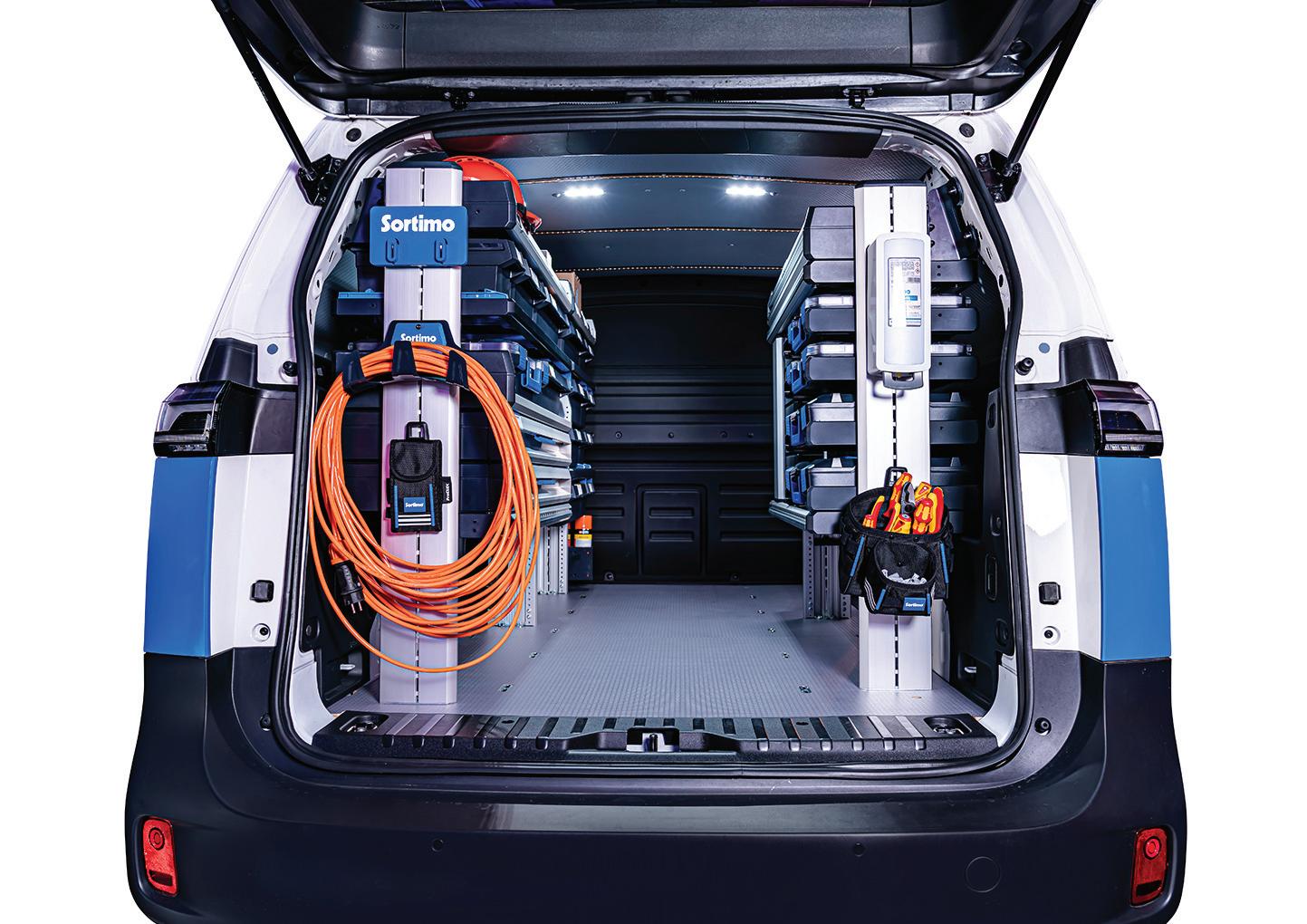
Matt MacConnell investigates the challenges around electric van outfitting and how electrical accessories are affected
As 2035 approaches, electric van sales have been gradually increasing. According to SMMT data, there were 76,871 electric vans on UK roads at the end of January 2025 –a figure that represents 1.6% of all LCVs on British roads. For perspective, there were 5,266 electric vans in the UK at the end of 2020. Some 13,436 electric vans have been sold since the beginning of 2024, which equates to 4.8% of all new van sales.
While these numbers are impressive, the EV switch can be daunting – and questions about vehicles and charging often take precedence. Still, outfitting concerns, such as how EVs impact the work that needs to be done, how electrical accessories are affected and what outfitting companies are doing to help fleets transition, need to be addressed.
Like cars, electric vans often have their batteries mounted below the floor, which means outfitting companies must think ahead before drilling down and mounting equipment or racking. Manufacturers like Sortimo have EVready products, such as the SR5 – and fit a secondary floor so that racking or accessories can be mounted.
Similarly, focus on lightweight materials is important: less weight equals more range and less strain on the vehicle's motors. Using the van’s door walls to mount cables and plastic shelving can help reduce weight as fewer bins and storage compartments will be required.
One of the main purposes of switching to an EV fleet is to reduce environmental impact and, while EVs aren’t completely sustainable due to battery production, fleets can still choose semi-eco-friendly
components. Aluminium is often favoured among outfitting companies but it isn’t entirely sustainable as it creates a lot of waste heat. To keep waste heat down, Sortimo uses extreme pressure to bond its SR5 range together rather than welding. The company also offers a handy configurator on its website, which allows fleet managers to customise an electric van’s layout by make and model.
One of the largest challenges for electric vehicles is payload-heavy sectors such as utilities. Vehicles within the utility sector are often larger LCVs, which are used to lug drum carriage trailers wrapped in heavy-duty electric cable or water pipe. They can also be seen pulling mini diggers on trailers, again increasing weight. Therefore, using lighter components is important as wooden or metal racking could increase payload beyond 3,500kg.
Van racking and electrical accessory company Modul System believes that another thing fleets should consider during a conversion is how many electrical accessories are needed. Depending on the industry, these can range from floodlights to beacons and require additional power.
Electric vans have a battery that drives the vehicle and an auxiliary battery that feeds power to the wipers and vehicle lighting. Power for smaller components
can be drawn from the vehicle’s auxiliary power, but this can also be done via a conventional converter. If more power is needed, this could mean additional lithium-ion battery packs; the latter adding weight.
Another option is using portable power banks that house an in-built inverter – these can also be used outside the vehicle to power tools such as air compressors and other equipment. Meanwhile, some companies also offer solar panels that can be mounted to the roof of an LCV. These can be used to charge the van’s battery and feed power into a secondary auxiliary battery bank to charge power tools. Likewise, Modul System stays clear of a van’s Wisadeck floor during outfitting – and uses honeycomb flooring to reduce weight (polypropylene is used instead of plywood, too).
Various manufacturers offer incentives to assist with initial EV costs, but fleet operators and businesses should note that outfitting can be slightly more expensive than a comparable ICE LCV. This includes more expensive, lighter flooring to avoid drilling into the existing floor. Similarly, when supporting fleets transitioning to EVs, many outfitting companies will quote depending on the van’s make/model and size. When a quote is accepted, the outfitter will usually install the flooring, racking and accessories at an in-house facility.
“Fleets should note that outfitting can be slightly more expensive than a comparable ICE LCV”
Fleet mobility provider Alphabet supported fire detection manufacturer Protec in transforming its commercial vehicle fleet of 160 vans. Before this collaboration, Protec purchased its vans and kitted them out. Now, Alphabet handles design, fitting and fleet branding.
“We used a crash-test video to illustrate the benefits of using modular metal racking over plywood, along with showcasing the adaptability and sustainability of reusing the new racking to maximise Protec’s return on investment,” explains Simon Simmons, LCV consultant for Alphabet. “We also worked with our partners to ensure that the design and livery of the vehicles were on-brand and ready to go at the point of delivery.”
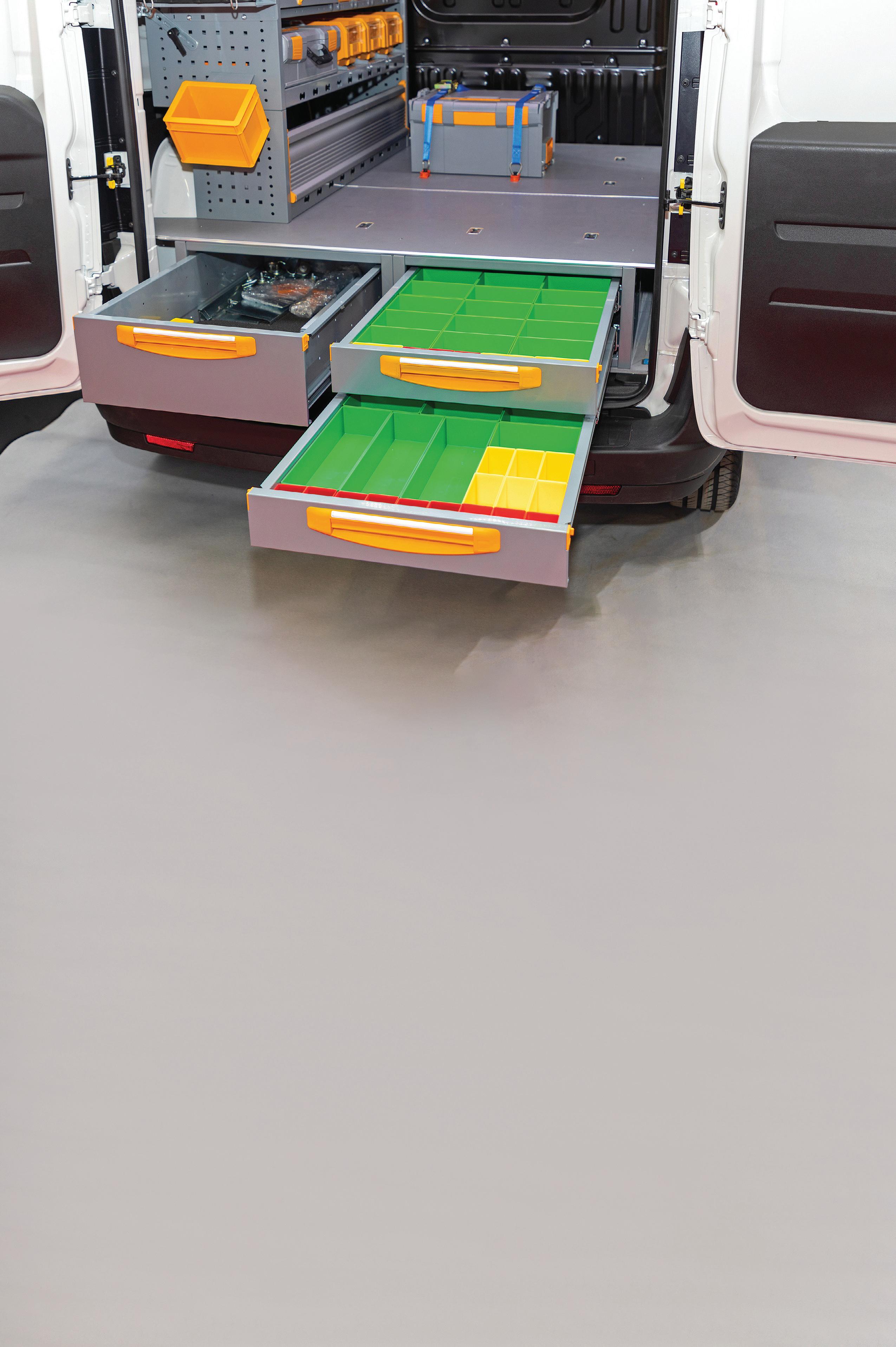
Herd Synergy also claims to offer a hassle-free outfitting experience and provide bespoke designs that contain items such as metal floors and kickplates, to tail-lifts, to extra capacity loading bars. Fleet managers should also consider how far their electric vans will be travelling. A route planner can be an effective way to check the distance between jobs and what chargers are along the way. This is needed if an electric van is kitted out with power tools, racking or works in the utility sector.
While many industries will follow similar layouts, search and rescue teams often require a different setup. System Edström helped convert Essex Search and Rescue’s Peugeot Boxer L4H3 panel van with help from its part-
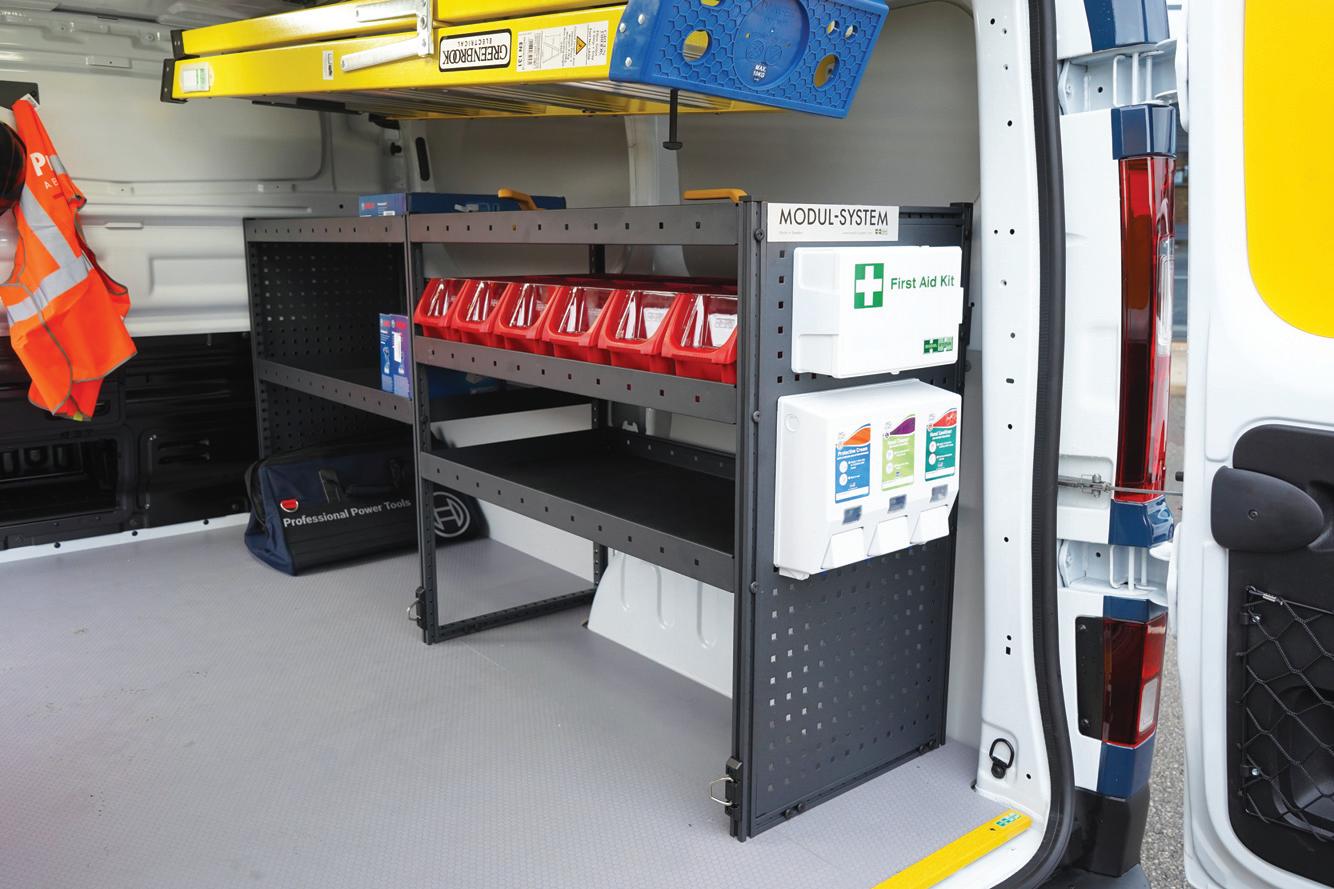
ners at Richell Vehicle Conversions and Fleetshield. The charity assists the emergency services in locating highrisk, missing individuals who are living with conditions such as dementia.
The team uses two vehicles: an incident control unit for coordinating searches and a support unit to transport team members and equipment. By 2022, the control unit was 22 years old and needed replacing and it needed to be under 3,500kg considering the outfitting required. The new vehicle has two separate areas: equipment storage and a control area. The equipment storage holds medical bags, radios, torches and stretchers. Meanwhile, the control area is the centre of operations and has two networked computers, screens, printers, routers, heating and integrated power systems.
“Essex Search and Rescue had a clear vision of their new vehicle’s needed capabilities,” says Chris Angel, System Edström UK sales manager. “By collaborating closely with them and Richell Vehicle Conversions, we helped design a vehicle that efficiently used the van’s space while accommodating the necessary specialist equipment.”


How does Lightfoot help van fleets?
Lightfoot focuses on safety and sustainability through an in-cab coaching device that provides real-time feedback to drivers, helping them adopt safer and more efficient driving habits.
Developed with IAAPS at the University of Bath, Lightfoot originated from an Innovate UK decarbonisation programme for the 2012 Olympics, where engineers created one of the first plug-in hybrid vans. However, analysis showed emissions savings depended on driver behaviour, leading to the development of Lightfoot’s driver-focused solution.
Unlike traditional telematics, Lightfoot provides real-time coaching without requiring tracking. Drivers can win prizes and rewards through the Lightfoot
Paul Hollick CEO // Lightfoot
app, track performance and compete in league tables, encouraging self-improvement without managerial intervention.
Fleets gain access to retrospective data on speeding, vehicle locations and driver behaviour. If a fleet vehicle is involved in an incident, real-time data can be provided immediately.
Lightfoot functions as both an advanced telematics system and a standalone safety and decarbonisation tool, using machine learning to optimise driver performance.
What benefits does Lightfoot offer?
Lightfoot helps fleets improve road safety, lower accident rates, cut emissions, reduce dangerous behaviours such as speeding and harsh braking, and increase fuel efficiency. Most customers start with a proof-of-concept trial, measuring fleet performance before and after using Lightfoot to demonstrate improvements in MPG, safety and ROI. We encourage all fleets to run a free trial to see the impact firsthand.

Our reward platform keeps drivers engaged. The weekly Drivers’ Lottery offers an average payout of £10 for Elite Drivers (those scoring 85%+), making high performance achievable under realworld driving conditions. Additional giveaways include spa breaks, food hampers, high street vouchers and major competitions such as the Elite Driver Championship (£4,000 prize) and Fleet Driver of the Year (£10,000 prize in 2024).
For electric fleets, Lightfoot enhances vehicle range through smoother driving. One client achieved a 17.2% range increase, reducing the need for midday charging. This improvement helps minimise vehicle downtime, a key concern for EV fleets.
Our fleet management portal provides extensive reports, including insights on battery health, charge status and suitability for transitioning from ICE to EVs. The
“Unlike traditional telematics, Lightfoot provides real-time coaching without requiring tracking”
EValuation tool helps fleets identify which vehicles could switch to electric, and real-time alerts notify managers of potential battery issues, ensuring optimal performance and efficiency.
What sort of cost savings can Lightfoot help to deliver to a conventionally powered fleet?
Our average fuel saving is 10.8%. We’ve seen as much as 20%, but this all depends on the drivers. Either way, there’s always a fuel saving, and ultimately this pays for the Lightfoot solution. Whatever you save in fuel you save in carbon too, so we’re able to help fleets decarbonise their existing ICE vehicles while they’re waiting to make the switch to electric.
How do fleets react to advice regarding electrifying their fleet?
Although the data might show that a particular driver could go into an electric van, the fleet would need to work out whether they could install a home charge point and whether the driver would be willing. You could have the best plan in the world to electrify your fleet, but if the drivers aren’t prepared to charge the vehicles up, you’ve got a problem.
We give fleets the data for them to push out and try to win hearts and minds within their driver base. It’s not about the fact that you can’t or won’t decarbonise, it’s more about the complexities of operational downtime during the working day to charge the vehicles up, depending on where they are and what they do.
Ultimately, I’d say give it a try – the EValuation report is free and you might be surprised by the results.
